






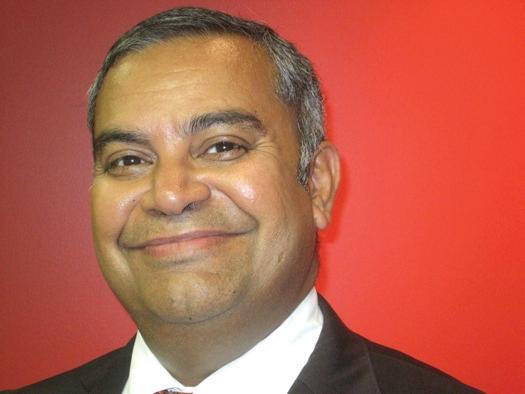
that dinner on our pages).
Contemporary Australian offerings seem to have stuck a chord in the Indian psyche. Move over, cricket – it’s cuisine!

 PAWAN LUTHRA
PAWAN LUTHRA
An old friend from India visited Australia for the first time recently with his wife and two teenage kids. All four had their list of ‘things to do in Australia’. The items on the youngsters’ lists simply blew me away.
OK, so they wanted to pat a kangaroo and cuddle a koala. What else? See a show at the Sydney Opera House? No. Climb the Sydney Harbour Bridge? No. Go snorkelling in the Great Barrier Reef? No! Believe it or not, they wanted to visit the Masterchef Australia kitchen at its Sydney studios, and dine at celebrity chef Kylie Kwong’s restaurant in Surry Hills, Billy Kwong.
Sadly, my young guests were disappointed as they were able to do neither: Masterchef was not filming, and Billy Kwong was booked out for a private function.
When India’s leading actress Vidya Balan visited last year, one of the things she wanted to do on her only night in Sydney, was meet her “favourite TV personality” Matt Preston. Her hosts, obviously better connected than me, pulled it off for her (although we did get the chance to splash the photos from
A recently released report by the Australia India Institute entitled Beyond the Lost Decade, attempts to analyse the fractured relationship between the two countries, and makes recommendations for closer connections. Over 30 recommendations are listed: some, if adopted can have an immediate positive effect on the relationship; others seem rather ambitious in their scope but it is good to see them on paper.
One immediate action recommended was the extension of the visas of Indian students who were in Australia on Feb 8, 2010 and were affected by changes in the immigration regulations. Adjusting these students in some other visa category, allowing them to extend their stay, will be a welcome gesture by the Australian government. While this can be a short term solution, the report does suggest that Australia must promote quality education for Indian students. However, the report falls short on recommending actions on some of the basic problems which aggravated the student crisis of 2009, those of subsidised travel options for overseas students and low cost housing. Subsidised travel concessions will give the option to overseas students to use public transport rather than cutting corners and while saving a few
dollars on travel, expose themselves to unnecessary risk of walking through the streets at night. Not giving these concessions is rather petty compared to the enormous financial gain these students bring to their place of residence in Australia.
What is noted in the report is the decline in student numbers from the peak of 120,000 in 2009 to 37,500 in March 2012, a fall of 82,500. These declining numbers have cost the industry close to $3 billion. Putting this in context, in the May budget the government cut defence spending by $5.5 billion over the next four years in order to return to the surplus forecast of $1.5bn for 2012-13. Connecting the dots gives us a clear indication of the strong link between the loss in Indian student numbers and its impact on the Australian economy.

It is noteworthy that a major report such as this commissioned by the Australia India Institute had limited ground-based community consultation.
If the 400,000 plus Indian-origin Australians are going to be ambassadors between the two countries, a greater involvement from them could have been expected in the preparation of the report.
Perhaps supplementing this report should be a program to get George Colambaris, Gary Mehigan and Matt Preston to get on a plane and film a series of Masterchef in India. There will be a free flow of goodwill!
Classical music concert
Sarangi from Benaras IndiaPandit Santosh Kumar Mishra and Sangeet Mishra with Glen Kneibiess on tabla.
Fri 10 Aug 7:30pm at Swan Hill
Regional Art Gallery, Horseshoe Bend, Swan Hill. Details 03 5036 2434.
Sat 11 Aug 7:30pm onwards at Castlemine Art Gallery, 14 Lyttleton St, Castlemine. Details 03 5472 2292.
Sun 12 Aug Kindred Studio, Front Space, 212a Whiteall St, Yarraville. Details 0409 210 782. All concert tickets: $28 full, $25 concession. www.tabla.com.au
Thought Leadership
Imperative
Free workshops on Thought Leadership Imperative (TLI) by PK Menon (usually valued at $400) that help you identify your IP (Intellectual Property), and teach you how to capture, package and deliver it for greater wealth creation. This will also help you become the first choice in the marketplace. Register online at www.pkmenon.com
MMV Classical concert
Sat 18 Aug Maharashtra
Mandal Victoria Inc is organizing a classical music performance with Pt. Vijay Koparkar on vocal, Pt Dr. Sudhanshu Kulkarni on harmonium, Mr Shrikant Bhave on tabla. 4 to 7pm at Glen Eira Community Centre, Corner Glen Eira and Hawthorn Roads, Caulfield, Victoria. Cost $20 per person to be deposited in Maharashtra
Mandal’s bank account (BSB : 033-060 /Account Number: 12-9069). After payment please send your name to: president. mmvic@gmail.com
Balagokulam
Children’s camp
4 - 7 Oct Three day camp organised by HSS Melbourne. Make new friends, learn leadership skills and Hindu dharma, enjoy fun activities. Venue 66-72 Monbulk Road, Mount Evelyn, Victoria 3796, Melway Ref: 120 D3. For more information email balagokulam. melbourne@hotmail.com or Melbourne@hssaus.org
Krishna Janmashtami
Fri 10 Aug Chinmaya Mission celebrates with bhajans, children’s carnival, theatrical performances and family archana, pot breaking and dandiya, and prasad and food. 7:30pm to midnight at the Boxhill Town Hall, 1022 Whitehorse Road, Box Hill, Vic 3128. For more information contact Vinod on 0422 478 548 or Chinmaya Mission on 03 9846 8359.
Flag hoisting on India’s Independence Day
Wed 15 Aug Flag hoisting ceremony to celebrate India’s Independence Day, at 9:30am at the Consul General of India residence at 8 Landale Road, Toorak, Melbourne, Vic 3142. All Indians, persons of Indian origin and friends of India are welcome to attend.
Indian music and dance festival Sat 18 and Sun 19 Aug 11am to 7pm at City Square and Swanson Hall, Melbourne. Bollywood dances, classical and fusion, tattoos, henna painting, yoga and
meditation and other activities at this family fun day. For more information contact Usha Sharma on 0412 16 99 44 / ush_03@yahoo.com.au or Dr Anjali Tikoo on 0422 46 93 22.
Multicultural gala dinner
Fri 17 Aug Gala dinner organised by FIAV to celebrate multiculturalism in the City of Melbourne. 6:30pm (7pm start) to 10pm at North Melbourne Town Hall 521 Queensberry Street, North Melbourne. (Melway 2A J10). 3-course Indian dinner, with drinks. Bollywood dances, speeches by dignitaries, awards and presentation. Dress: Business / National. Confirm to rsvp@fiav. asn.au Entry: $60 per person.
Contact Vasan on 0412 55 33 71; Thomas on 0438 591 014 or Subra on 0403 777 252.
Panel discussion: India: Going
Beyond Today
Thur 16 Aug The Consulate General of India in association with Australia India Institute and FIAV is organising a panel discussions entitled India: Going Beyond Today. 6pm to 8:30pm
It was a feast for both eyes and ears at the Taal Tabla Concert 2012 held recently at the Wyndham Cultural Centre in Werribee. A total of 32 students at various levels of proficiency participated in this inspiring annual concert. The sparkling white Kurta Pyjama that was worn by the students made a striking visual effect and their performance was an auditory delight. Under the guidance of renowned musician Ashok Chavali, the School of Rhythm has been holding these concerts for many years, however it is only in the last 3 years that they
have been presented to general public. According to Ashok the exposure of performing on stage encourages and motivates his students towards further excellence. During the Taal 2012 concert each student was presented with a momento as a form of encouragement.
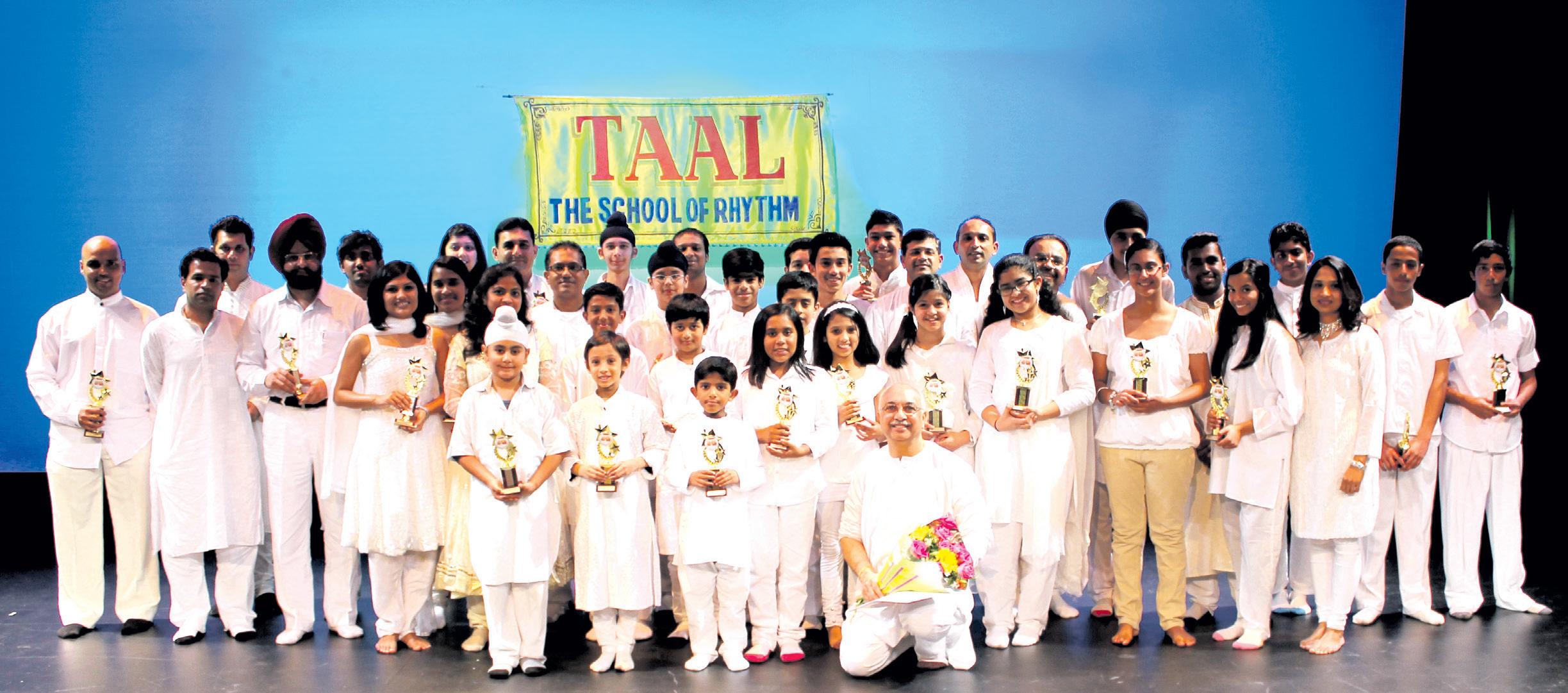
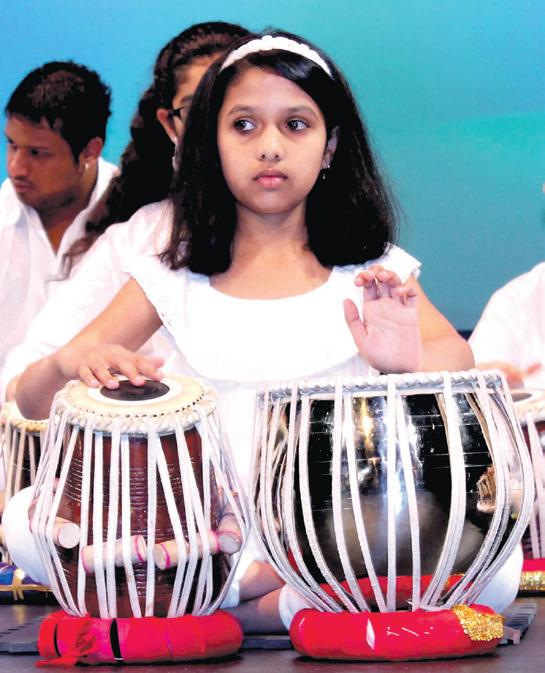
Hailing from a family of
talented individuals Ashok Chavali started playing Tabla from the tender age of 3 and his passion for music continued over the years. An electronics engineer by profession, he is currently a lecturer in a training organisation. He opened the Tabla school nearly 12 years ago in Melbourne. Currently he operates from the
Western suburb of St. Albans. His students generally range from age six onwards. Ashok has imparted knowledge of playing this traditional Indian instrument to students from all nationalities and backgrounds including South Africans, Singaporeans, Chinese, Sri-Lankan, Pakistani, Afghani and Indians. Besides his artistic
at Consulate Hall, 344, St Kilda Road, Melbourne 3000. The panel includes Greg Sheridan, Foreign Editor, The Australian; Prof. Amitabh Mattoo, Director, Australia India Institute; Mr. Vasan Srinivasan, President, FIAV; Mr. Howard Ronaldson, Secretary, DBI; Ms. Tara Rajkumar OAM, Eminent classical dancer; Moderator: Dr. S.K. Behera, Consul General of India. RSVP: trade@cgimelb.org / or sms: 0430 963 554 Limited seats available on first-come-first serve basis.
The July 2012 issue of Indian Link carried an article titled ‘Exemplary academician receives OAM’, which was incorrectly abbreviated in the headline and copy. Prof. Tam Sridhar was conferred with the title of Officer (AO) in the general division of the Order of Australia. The title should read as, ‘Exemplary academician receives AO’. Indian Link apologises for the error and any misinterpretation or misunderstanding caused by it.
Edpursuits Ashok is a keen magician and filmmaker. He also produced and directed a Hindi film Mera Pati Ho To Aisa with local Indian artists in Melbourne a few years ago. The Indian classical scene is well and alive in Melbourne thanks to individuals like Ashok who take time and effort to nurture Indian tradition and culture.




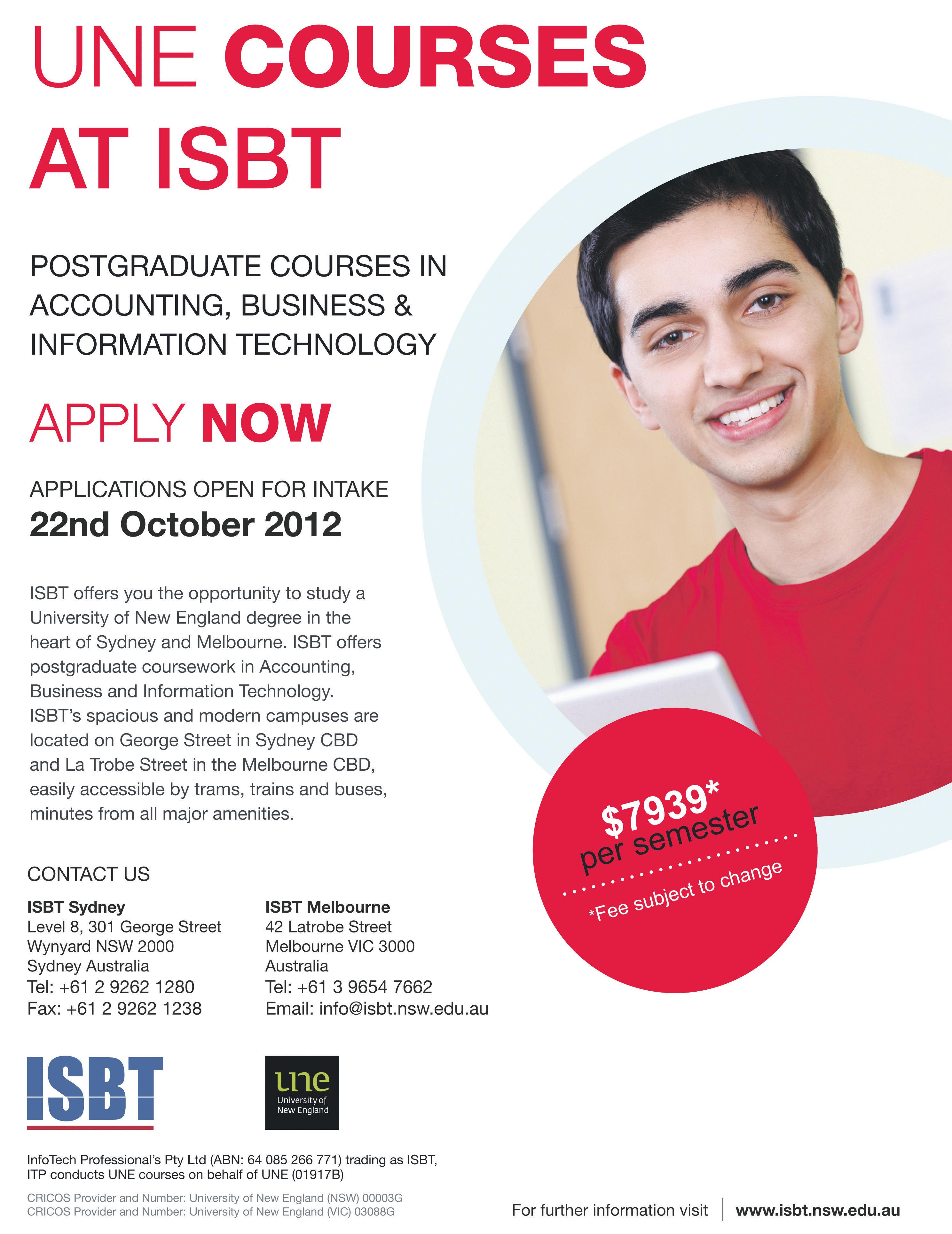
The past is the foundation of the future; though it may seem like ancient history to some, India’s current relationship with Australia has been built on the rubble of political mistrust, diplomatic disruption and media misinterpretation. The reality is that the India-Australia relationship weathered many storms in the past two decades, and continues to harbour in still uncertain waters. The late 1980s and early 1990s were difficult times with little or no dialogue between the two countries, and the current cordiality that exists has been the result of changed perceptions and painstaking diplomatic efforts developed and enhanced only in the past few years.
Gopalaswami Parthasarathy was High Commissioner of India to Australia from 1995 to 1998. It was a particularly turbulent time when relations were strained because of a series of nuclear tests India had conducted in Pokhran, Rajasthan. While major global powers including the United Nations condemned the tests, the US went a step further and imposed economic sanctions on India. Australia joined the bandwagon of criticism, vociferously proclaiming its disapproval of what seemed to be Indian audacity at the time.
As High Commissioner of India, Mr Parthasarathy was caught in the crossfire between the two countries, and he was witness to the near breaking down of relations at that crucial time.
However, a lot of water has flowed under the proverbial bridge connecting India and Australia, and Mr Parthasarathy has followed the intricate and slow process of rebuilding mutual trust and respect over the past two decades.
Mr Parthasarathy was in Australia recently in his capacity as one of the six members making up the Australia India Institute’s Perceptions Taskforce created in September 2011. In brief, this Taskforce was formed to review Australia-India relations,
particularly in the light of uneasy past relations and more recent situations, as well as to make recommendations on how to respond to these challenges. The report titled Beyond the Last Decade, discusses the key issues arising from this process and presents them from Indian and Australian viewpoints. As a crucial member of the Taskforce, Mr Parthasarthy was here to present the report to a distinguished audience at the University of Sydney.
I took the opportunity to contact Mr Parthasarathy again, and continued the conversation which I had with him 14 years ago, a few days after Pokhran. He was then being grilled in Australia both by the politicians and the media about this “bastardly”act by India. Despite the passage of years, Mr Parthasarthy was just as friendly, warm, erudite, thoughtful and often outspoken as I remember him in 1998.
We began with delving into past history, from the time of Mr Parthasarathy’s tenure as High Commissioner of India in Australia and the hostility that Australia harboured towards India. In his opinion, what were the reasons behind this openly abrasive attitude?
Mr Parthasarathy was charmingly candid as he firmly lobbed the ball into Australia’s court. Relations were already strained, he explained, but following the Pokhran nuclear tests, Australia’s overreaction to the situation prompted India to retaliate with a virtual diplomatic boycott. “Between 1998 and 2002 the Australian High Commissioner had no access to any major politician or decision maker in India. Even the Deputy Prime Minister Tim Fisher, who was a very well meaning minister, was not granted access to India’s PM,” he recalled.


“Australia’s overreaction to the nuclear tests completely mired the already tenuous relationship between the countries. Foreign Minister Alexander Downer felt that India would collapse under the weight of sanctions. And I told him that we will not deal with Australia; Australia did not count. We will deal and sort out matters with the US, which we did. I think Australia was punching above its weight at that point in time,” added Mr Parthasarathy.
When India took the path of liberalisation in 1991, most major Western countries such as United States, the United Kingdom etc began to woo India. Where was Australia at this time?
“Keating (then the Prime Minister of Australia) was particularly symbolic of this policy of pretending India did not exist,” said Mr Parthasarathy emphatically. “There has been blame attached to Australian diplomats, but the reality is that they were quite professional. I think this was the personal arrogance of the then Prime Minister Paul Keating, which was really responsible for the relationship India and Australia had in the early 1990s. I must say that the coming of John Howard and Tim Fisher symbolized change”.
I recalled that Gareth Evans, Foreign Minister in the Keating government had been vociferous in his criticism of India.
“Gareth was a person who was far too preachy, too full of himself. There is a report about a conversation he had with VP Naryanan, where all he could talk about was the great economic opportunity India would get if Telstra was allowed into the country. Telstra came in and did not stay a year!”
It’s evident that the Australian diplomatic corps did not recognise the true potential of India. And post-Pokharan, while relations with the US and the ASEAN countries improved, Australia’s relations with India remained mired in distrust. This shortsightedness resulted in relations taking even longer to heal, which affected the economic, social, business and diplomatic status between the countries.
I recalled that in our meeting in 1998, Mr Parthasarathy had expressed hurt in South Block at the words that India had committed an act of ‘nuclear bastardry’. Has Australia been forgiven for making that statement?
“Well, time moves on and you can’t live in the past,” observed Mr Parthasarathy. “Eventually as Indian influence grew, especially as the India–US relationship improved with the coming of George Bush, India began to be viewed as a strategic partner by the United States. And then Canberra saw the writing on the wall.”
The relationship took its time to change from openly hostile to grudging interaction to cordial respectfulness. But despite that change, no Indian Prime Minister has visited Australia for over 25 years, even at the Commonwealth Heads of Government Meeting (CHOGM), last held in Perth in October 2011.
“I think the relationship now is very good and there are no differences of any substantive nature,” stated Mr Parthasarathy. “The Indian Prime Minister could not come to CHOGM primarily because they really had pressing domestic engagements. Otherwise, an Indian Prime Minster will not miss a Commonwealth Head of Governments meeting. However, the Vice President attended, and this was indicative of the high symbolic importance that India attaches to the relationship with Australia”.
It’s clear that Mr Parthasarathy felt the time for change was well at hand, and that we should look forward to a more fruitful, positive alliance with Australia.
“Yes, we should now look to the future and leave the past behind us,” he confirmed. “And I would say that over the last 3-4 years the relationship has really improved”.
The Indo-Australian security issues are considered very significant, so is the perception of Australia being too close to China damaging the relationship at all?
“No, I don’t think so,” emphasised Mr Parthasarathy.
“When Kevin Rudd was Prime Minister, what surprised all was his unilateral decision to withdraw from the four-power naval exercises which had Australia, Japan, United States and India participating without any prior consultation with India or any others. It did raise some eyebrows in New Delhi. But that’s the past, it’s behind us. And I think we’re looking to the future, and the future looks bright”.
However, I wasn’t so keen to leave the past behind! There were questions which needed answers. I asked Mr. Parthasarathy about an issue that has dogged us through the decades, and continues to do so – the role of the media. The Indian media went berserk in 2009 and 2010, splashing every conceivable news channel with the students’ issue. Almost in retaliation, the Australian media’s reportage on the lead up to the Commonwealth Games in Delhi was vitriolic and derisive. What triggered off this media war and when will it end?
“I wouldn’t call it a media war,” Mr Parthasarathy replied. “You have a hyperactive, highly competitive, news channel development in India and any story which gives better ratings is welcome. Both Australia and India tend to go overboard with public reaction – that’s one thing that unites us. Yes, parents in India were concerned (when the news broke about the students in Australia); after all, they had accumulated their life savings to send their children to Australia, and they would feel compelled to ask them to return. And all because of the media exposure of the issue.”
So have there been any positive outcomes? “Certainly, because the Australian government has taken action,” Mr Parthasarathy was quick to respond. “The pressure has eased and people with
Renowned diplomat and former High Commissioner to Australia G Parthasarathy comments on the past, present and future relationship between Australia and IndiaAWAN LUTHRA Former Australian High Commissioner to India, John McCarthy AO and former Indian High Commissioner to Australia G Parthasarathy at the launch of the Taskforce report
garages posing as universities and colleges to lure Indian students and the institutions who gave a wrong impression of Australian education, have now been closed down. The fact is that Australian education standards are very high, and their institutions are very highly regarded globally.” However, he added, “Australia should not focus only on numbers and money, but with the quality of education for Indian students. Happily, the trend is moving in that direction. It is clear that Australia will have to make a decision: does it want quality in quality institutions, or does it want numbers. The rapid expansion of the middle class in India means parents can afford to send their children overseas to study – and Australia should offer their best in education for these students. They should advertise in India that the best quality of education overseas is available in Australia. This will compel good students to come here.”
I couldn’t resist asking, could the student crisis have been handled differently?
“No, it was a situation which broke out. If there were isolated incidents, it would have blown over. But the number of incidents increased and naturally, people in India began to worry about an emerging pattern of attacks,” said Mr Parthasarathy. “I always pointed out that it was confined to Victoria, which was rather surprising as Melbourne is one of the best integrated cities I’ve known. I argued that it was confined to lumpen elements reacting to the recession in employment and was not a factor or characteristic of Australian society. I made this clear
on Indian TV”. But should the diplomats and politicians have been stronger in their denial of any serious problems, I insisted. “The Indian High Commissioner Sujatha Singh was very careful with what she said on Indian TV, but there is only so much a diplomat or politician can do. Sometimes you are swept away by the tide of events,” explained Mr Parthasarathy. “It was a good story from a media point of view, but that’s the way the media functions. You get excellent coverage of Gilchrist and Steve Waugh, and now Watson, embodying all that is good in Australian society, and then a couple of lumpens get violent and things change!”
Back to the immediate present, I ask Mr Parthasarathy if it is true that the Indian stereotype about Australians is that they are “dumb, drunk and racist” as a recent TV series suggested. “Let me be very clear that I consider Australia to be a vibrant, multicultural, multiracial society,” he noted in reply.
“It is integrating very rapidly with its immediate neighbourhood, rather than clinging to past relationships with the UK and Europe. In any society you will have a few people with prejudices. Even in India there’s no doubt that there are people with caste and religious prejudices. But that does not make the society as a whole prejudiced or racist”.
“I think it’s very wrong to stereotype Australia or Australians in such terms,” he emphasised, with feeling. “I have a great deal of admiration for the way
government over the next 12 months and Tony Abbott leads the country. How would that change the nature of the realtionship?
“I haven’t met Tony Abbott, but I was very happy with direction of the relationship while John Howard was PM,” said Mr Parthasarathy. “Yes, the Pokhran nuclear tests caused an upheaval, but I think Australia realised they overreacted and miscalculated. However, we’ve moved on and Howard was generally seen in India as forwardlooking. I also believe that with PM Julia Gillard, the relationship is looking up. I hope that when she visits India, she will come fully prepared to implement the Labor Party resolution on nuclear fuel. It does not make sense for Australia alone to move in one direction, and the rest of the world to move in another”.
Why then has Australia slowed down in regards to the implementation on uranium sales to India?
Australia is integrating, via both its population and its strategic and economic ties, with its immediate neighbours”.
So now to the future: how do you foresee the India-Australia relationship in say, ten years’ time, I asked.
“I see a vibrant economic content,” said Mr Parthasarathy candidly. “Right now India’s investment in Australia is between $12 and $13 billion. Australian investment in India is much less, in the area of $5 billion or less. However Australian companies like Telstra and ANZ Bank, despite lucrative opportunities (and in the case of ANZ, substantial profits) couldn’t stay the course. Australian mining companies have a genuine problem getting into India, but that’s our fault. We need a transparent, forward-looking framework for investment into our mining sector. And I guess we’ll have to set our house in order”.

“We have no problems with Australia politically, the future is quite bright. With the current problems in the South China Sea, both Australia and India - and Asia as such - are partners for the future; we can work together and we are working together. We are both members of the East Asia Summit and there is no difference in our views on those issues. We have a tendency to look back to the past, but it’s more important to look to the future”.
But what if there’s a change in
“Julia Gillard has a lot on her plate right now, and we too, are not rushed,” revealed Mr. Parthasarathy. “We’ve got other contracts with countries ranging from Namibia to Kazakhstan, our nuclear reactors are running at full capacity and we’ve got all the uranium ready to move on. However, given the past, the nuclear issue has obtained a largely symbolic significance than any immediate need in India. It does not make much logic to see militaries co-operating together while Australia sells uranium to China and bars the sale to India. Compounding the sale will certainly send a very positive signal and increase the already substantial forward momentum on the improvement of relations. And there has been a continuous process of engagement. Governments are in touch and therefore I’m optimistic that this will be resolved”.
If Kevin Rudd were to be returned as leader of the Labor Party, would the decision change? After all, Rudd was always against the sale of uranium to India.
“No, I won’t speculate on that,” said Mr Parthsarathy. “We’ve had substantial negotiations when Kevin Rudd was Prime Minister. Also, these issues go by national consensus. The relationship has reached a stage where it should not depend on any political party or leader. The India-Australia relationship can transcend considerations of parties and individuals. In most mature democracies, there is a national consensus and relations with major countries are not guided by the fate of any single individual or political party”.
“Julia Gillard has a lot on her plate right now (to be expediting the sale of uranium to India), and we too, are not rushed. We’ve got other contracts with countries ranging from Namibia to Kazakhstan, our nuclear reactors are running at full capacity and we’ve got all the uranium ready to move on”.
G Parthasarathy“Keating (then the Prime Minister of Australia) was particularly symbolic of this policy of pretending India did not exist. I think it was his personal arrogance which was really responsible for the (poor) relationship India and Australia had in the early 1990s”.
G ParthasarathyThe Australia India Institute’s “Perceptions Taskforce” recently released a report on the future of the India-Australia relationship, making 32 recommendations to improve relations between the two countries.
These include more cooperation in the areas of travel, education, defence, media, humanitarian aid, and specific suggestions for Australia’s Department of Foreign Affairs and Trade (DFAT) and India’s Ministry of External Affairs (MEA).
India-Australia relations have always been a confusing enigma, sometimes cordial, often hostile, occasionally tolerant. Starting with Pokhran in the late 1990s, relations stalled somewhat and reached an impasse in the late 2000s when the Indian students’ crisis erupted. Australia’s dilemma, in the wake of a vociferous response from Indian media backed by public protests by international students here, was to look beyond the lost decade, and make fresh attempts to improve relations with its neighbour who showed signs of becoming a force to reckon with in Asia.
Among other reforms, the Australia India Institute’s “Perceptions Taskforce” took ownership of a project to understand the state of relations between Australia and India, and to identify perceptions on how these two peoples and nations view one another. Have the conflicts irrevocably changed things for the worse, or is there opportunity to build bridges?
The six member taskforce set up in September 2011, consisted of senior diplomats Gopalaswami Parthasarathy and John McCarthy, political columnist Ashok Malik, journalists Maxine McKew and Christopher Kremmer and analyst Sanjaya Baru.

The report commissioned by the three-year-old Australia India Institute, entitled Beyond the Lost Decade and released in mid-July, is a must read for those who wish to have a deeper understanding of why the two countries have had such a fractured relationship in the past and the knife edge on which the relationship between the two currently sits.
Some of the recommendations made by the Taskforce are listed here.
• Extend the visas of Indian students whose permanent residency prospects affected by changes to immigration regulations in 2008
• Offer to TAFE and vocational training students the same poststudy work entitlements as uni students
Facilitate the study of Hindi and Indian studies in schools and universities
• Initiate discussions to start visa-on-arrival travel for Australians in India
• Institute Australian awards for foreign nationals
• Institute scholarships for Australian students to study in India
Enable DFAT to raise awareness in India of exemplary initiatives such as the Australia-India Strategic Research Fund.
• Allow Australia’s broadcasters to provide content to Asian broadcasters
• Establish an Australia-India senior editors’ dialogue Help prevent and/or speedily address problems that can damage Australia’s brand as an education provider by prioritising student safety, proper orientation, police liaison support, and the active involvement of local ethnic communities as contact points for international students, including Indians.
• Invite representatives of regiments of Indian troops who fought at Gallipoli to be Australia’s guests at the 100th anniversary commemorations of the campaign in 2015, and invite expressions of interest from film makers interested in stories about the shared experiences of Indian and Australian soldiers at Gallipoli.
• Establish deeper defence relations, with permanent positions in the Australian High Commission in New Delhi as well as joint training sessions between the forces
• Develop an online ‘one-stop shop’ website providing reliable information on all aspects of trade, diplomatic, educational, people-to-people cultural relations.
• Begin travelling exhibitions on art, history, heritage and sport between the two countries
• Expand the growing range of Australia-India annual lectures Increase interactions between Australian and Indian State and Federal parliamentarians
• Fund the Australian Institute of Criminology to undertake ongoing research into racism and crime, with an initial reference to inquire into the high profile incidents that impacted on relations with Indian in 2009-10.
• Encourage press to interact more, with exchange programs, for example
• Propose regular Prime Ministerial visits between New Delhi and Canberra Establish a young political leaders program between India and Australia.
• Establish a naval attaché position at the Indian high commission in Canberra and open an Indian consulate in Brisbane
• Expedite the proposed restructuring of the territorial divisions of the MEA: split the 26-nation Southern Division and constitute a new Indo-Pacific or Australasia Division that could include Australia, NZ and the Pacific Islands.
• Have AusAID and India’s new Development Partnership Administration (DPA) combine efforts for humanitarian projects in less developed countries Encourage the setting up of taskforces and dialogues on Australia’s role in Indian energy and food security.
• Consider a policy of visa-on-arrival for citizens of Australia, which is currently available to citizens of NZ
• Encourage business associations such as CII and FICCI to interact with their counterparts in Australia, and institute short-term work and exchange programs for young Australian and Indian professionals.
• Encourage PTI and Doordarshan to establish a stronger presence in Australia, with a more robust network of stringers or fully fledged correspondents
• Explore joint possibilities of providing institutional and technical cooperation, including human resource training, to newly-emerging democracies in, for example, the Arab world.
Interestingly enough, while the report acknowledges the need for more involvement from the local Indian population to participate in mainstream debate, there has been no reference to the work which the local Indian community did to settle the fallout from the student crisis of 2009 nor the lobbying they undertook to persuade Australia to sell uranium to India. Input for the report was sought from diplomats who are on deputation for a few years, or from local academics who have not interacted in depth with the local community. That there was no local Indian Australian as part of the task force was surprising. One guesses that not one of 400,000 Indian Australians is amply qualified to offer suggestions to better the relationship between their country of birth and their country of adoption, with their unique long term perspective of both countries.

Athought-provoking discourse on leading a life free from worry and stress was organised by Brahma Kumaris in late July at the Chisholm Institute in the greater city of Dandenong. Two prominent speakers took centrestage. Sr Chakradhari, fondly known as ‘Didi’, Director of Brahma Kumaris Russia, travels the world attempting to empower people. Charlie Hogg, Director of Brahma Kumaris Australia is a specialist who incorporates teachings from the east and west, having spent nearly forty years explaining the nuances of Raja Yoga meditation.

The noble objective of Brahma Kumaris, with over fifty locations in Australia, is to present the community a divine opportunity
to deepen the understanding of universally proclaimed religious principles, and gain an extensive knowledge of spirituality which, according to them, is an individual’s ability to feel ‘connected’ in order to discover the true meaning and purpose in life.
I was surprised to walk into a hall close to full capacity, this being an apparent indication of how distraught the community has become today.
We live in times of perplexity with stress and worry having a strong bearing on our everyday lives since it is the amalgamation of these two elements that deprive us of positive energy, thereby stifling our ability to cope with anxiety. Moreover, rumbling negative thoughts within our minds are the root cause behind the insecurities with which we are confronted.
According to Hogg, man has developed a tendency to be critical of almost every aspect in life whilst completely ruling
out the affirmative, and it is this negative trait that leads to a feeling of relentless inadequacy and anxiety in an individualan accurate assessment of the society that has developed a sharp inclination towards uninspiring and downbeat stories.
Said Hogg, “The role of spirituality is to invest in positivity where nothing but only quality thoughts prevail. Moreover, people remain worried because they fear the outcome of a situation, but meditation offers a means to overcome this barrier of negativity and discover peace within.”
He concluded by saying, “In an
uncertain future, we have to take more responsibility to develop the practice of improving the quality of our thoughts.”
While Hogg’s oration revolved around worry, Didi’s discourse centred on living a life free from stress. In the utmost tranquil manner imaginable, Didi began by explaining why man is no different from animals in these mystified times because while animals cannot smile, man who is constantly anxious today, fails to smile as well. Therefore, we both are from the same species.
She said that our mind is governed by four thoughts –
positive, necessary, negative and wasteful, with the last two elements dominating our mind and corresponding action. “We all have positive energy within ourselves that we fail to recognise and put to good use; but if we learn to do so, it can have an overwhelming impact on our lives. We need to choose our thoughts wisely refraining from negative views because we are the sole masters of our mental state,” said Didi.
She concluded by adding that we must strive to upkeep our original form of peace, happiness and divinity, which can be achieved only by following spirituality.
The evening was also interspersed with a few short spells of Raja Yoga meditation which helped create a feeling of calm amongst the audience. For those interested, a full-fledged meditative session is scheduled for August 18 and 25 from 2–4pm in Building J, Room #106 at the Chisholm Institute.
Those familiar with Comparative Theology – or even remotely aware of the Indian theological scholarship, will know Father Francis X Clooney S.J. He is a Professor of Divinity and Comparative Theology and the Director of the Centre for the Study of World Religions at the Harvard Divinity School, having earned his doctorate in South Asian languages and civilizations. His primary areas of scholarship are theological commentaries in the Sanskrit and Tamil traditions of Hinduism. He has written numerous books and articles on comparative theology – especially involving Srivaishnava theological texts. His book Beyond Compare: St Francis and Sri Vedanta Desika on Loving

Surrender to God (Georgetown University Press, 2008) looks at the works of St Francis de Sales and the Srivaishnava theologian par excellence, Vedanta Desika, who has written a corpus of works in Sanskrit, Prakrit and Tamil. He has written other books and articles on Gandhi, the Bhagwad Gita, the Upanishads, Yoga Sutras and Srivaishnava texts.
Father Clooney was in Australia recently at the invitation of the Australian Catholic University in Melbourne, where he was conferred an Honorary Doctorate. Shortly before the ceremony hosted by the Centre for Interreligious Studies, Father Clooney spoke about ‘Engaging the Interreligious Possibilities of the Twenty first Century’ on July 25, at the Christ Lecture Theatre. The eclectic audience consisting of academics, religious scholars and practitioners, and lay people. He emphasised the need for interreligious dialogue, the importance of the study of one’s own traditions as well as others’ which, he said, will sharpen and enhance the appreciation of the faith and tradition to which one belongs.
Father Clooney is a Roman
Catholic priest who understands deeply the faith traditions of India, and the wisdom contained in them. His book Hindu Wisdom for All God’s Children is a testament to that belief, and it is a wonderful anthology of stories from Indian epics and Puranas for children all over the world.
Father Clooney cited the epochal Vatican II declaration that, he said, changed the way the Catholic Church viewed other faith traditions forever.
“A study of other faiths, far from undermining our beliefs in our inherited faith, will help us understand it better,” he stated.
“As long as one keeps an open mind – and is grounded in one’s faith at the same time – the search for truth can lead to the learning of wisdom from other
traditions.” He spoke about his own early experience as a young Jesuit scholar in Nepal, when his curiosity about Eastern religious traditions drew him towards a study of Hinduism. He began studying Sanskrit and the Vedanta; later, when he delved into the works of Nammalwar – the great Srivaishnava Tamil saint who wrote more than a thousand verses expressing his unconditional loving devotion to Lord Krishna – Father Clooney realised how similar they were to the Song of Songs in the Bible. It led him to write a comparative discourse on both the works.
Father Clooney has spent considerable time with other scholars of Srivaishnava theology, and still cooperates with them.
Chitra Sudarshan

Over 300 people attended the Gurupurnima celebrations that were conducted by Shirdi Sai Sansthan Melbourne at the Camberwell Mesonic Temple recently. The program consisted of Puja, aarti and devotional bhajans by Manish Patil and

group. The Mahaprasad that was prepared by a group of dedicated volunteers was distributed that evening to all the devotees who attended the temple on this pious ocassion. Gurupurnima is the Hindu festival that honours the Guru: disciples seek special blessings from their
philosophical guides on this day. The celebrations in Mesonic Temple continued till 9 pm giving everyone a chance to pay their respect to Shirdi Sai Baba who is regarded as a saint and worshipped by people around the world.


These have led to a fall in the usually quite high savings rate in India.
 BY CHITRA SUDARSHAN
BY CHITRA SUDARSHAN
Jagdishchandra
Desai - or Baron

Desai of St. Clement
Danes - is an Indian-born British economist and Labour politician, who was awarded the Padma Bhushan in 2008. He was invited by the University of Melbourne’s Australia India Institute (AII), to deliver this year’s Satyajit Ray Memorial Lecture. Prof. Desai chose to speak about the economic crossroads at which India finds itself now, and whether India can pick itself up and keep going. Can the Elephant run any longer? was the title of the
lecture at the Law Faculty lecture theatre in early July.
Baron Desai gave his verdict to a rapt audience - eloquently drawing on a range of anecdotes, historic events and theories. Two things he made clear: first, that capitalism is here to stay, and for all practical purposes it is the only economic system that survives and will survive. Second, that all things said and done, politics is what matters, even when it comes to economics; that the decisions made by political leadership at crucial moments are what determines the direction of economic change in India.

Baron Desai began by briefly sketching the impressive economic growth trajectory of India and China in the last decades. Theirs - and the rise of the Tiger Economies of Asia, were based on the old model of growth: hard work, savings and
investment. Indeed, it is Asia that embodies the young, dynamic capitalism of today, while the one in Europe is an unenviable, aging and decrepit. India’s exponential growth is really a twenty first century phenomenon, and despite nostalgia in some quarters for the 1960s-style socialism or for a ‘third way’, there is a general consensus in favour of economic liberalisation. However, India is now at a crucial stage of growth - despite the fact that it rode the first wave of global recession without a great deal of trouble. Its growth performance since 2009 has been lacklustre with rates hovering well below 7%. It may well fall to 5% in 2012. Besides, inflation is unacceptably high, exceeding the growth rate. For the first time in post-Independence history, the Indian government does not have an active antiinflation strategy to combat it.
The reasons for the failure of the government to respond to the current economic challenges are several. The UPA-II government has been indecisive and has dithered in the face of major problems. Baron Desai believes that this has been induced by some major failures. One is their wrong reading of the reasons for their election victory in 2009; the Congress interpreted its election victory over the BJP as an expression of a popular backlash against the pace of economic liberalisation. This however, is quite incorrect. But as a result of this false belief, it has reneged on further reforms. Secondly, the UPA-II government has been riddled with corruption and scams which have eroded its credibility and its ability to be decisive. Third, the division of power between the Congress party headed by Sonia Gandhi, and the government led by Mammohan Singh is so skewed and stilted that it has led to several problems. For all the above reasons, the government has been hit by a political paralysis of sorts: decisions on further reforms such as the liberalisation of the retail section for example, are being shelved; and the backflip on the 3G scam has introduced a feeling of economic and business uncertainty that has frightened Indian businessmen. The government is being seen as indecisive and cowardly. This has been at the root of the poor economic growth in the last couple of years in India.
What does Baron Desai see in the years ahead? Will the political impasse and paralysis be
Indeed, it is Asia that embodies the young, dynamic capitalism of today, while the one in Europe is an unenviable, aging and decrepit.
broken in 2012 when the next national elections are due? Will the UPA be elected again, or do the BJP’s prospects look better? His prediction is that both the national parties will do badly and together will secure less than half the seats in parliament, which will lead to a Coalition of Third parties. There are strong and performance-oriented State Chief Ministers such as Nitish Kumar in Bihar, Modi in Gujarat, Jayalalitha in Tamil Nadu, Patnaik in Odisha - and equally efficient ones in Rajastan and Madhya Pradesh as well - who may be the face of a new coalition at the centre. This may well lead to greater devolution of power to the states, and that may not be a bad thing at all.
One of the UK’s most prominent economists comments on India’s



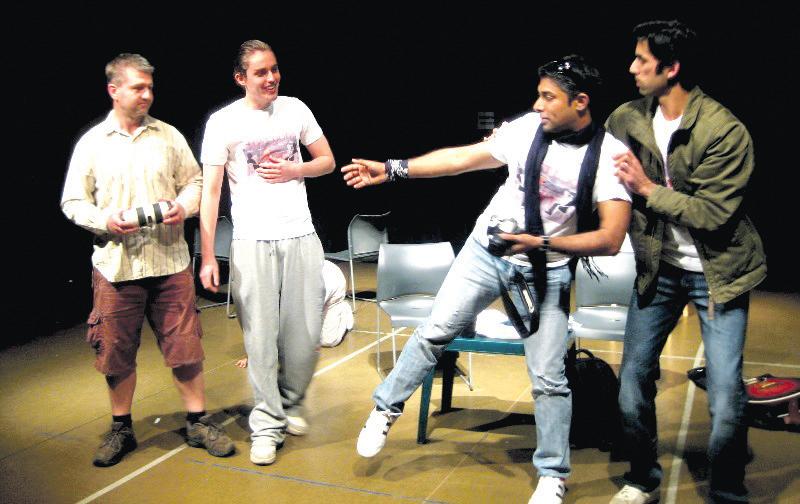
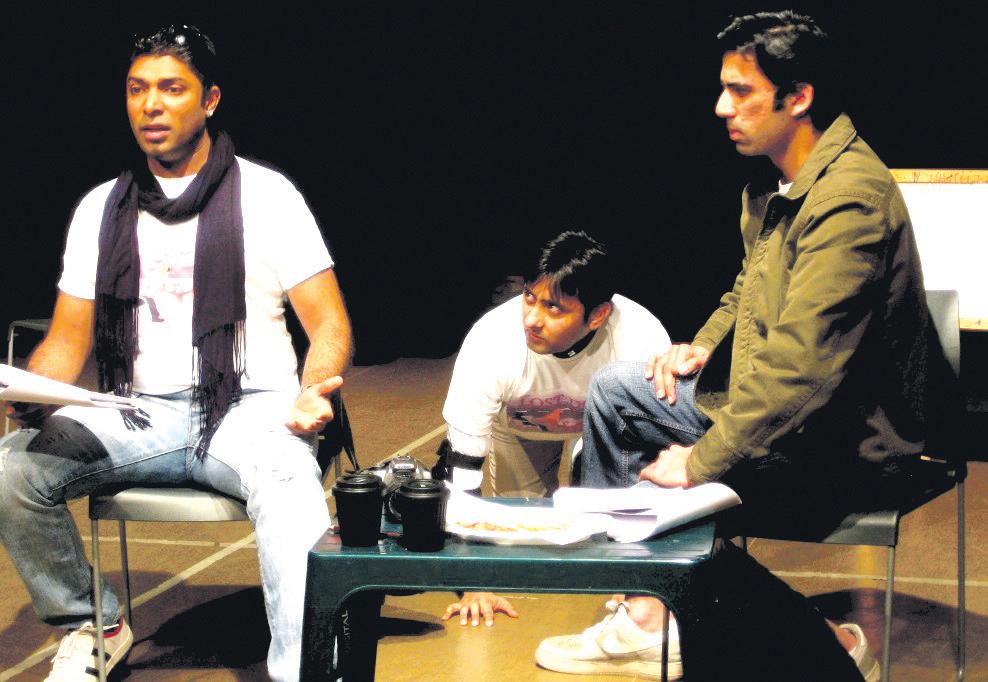
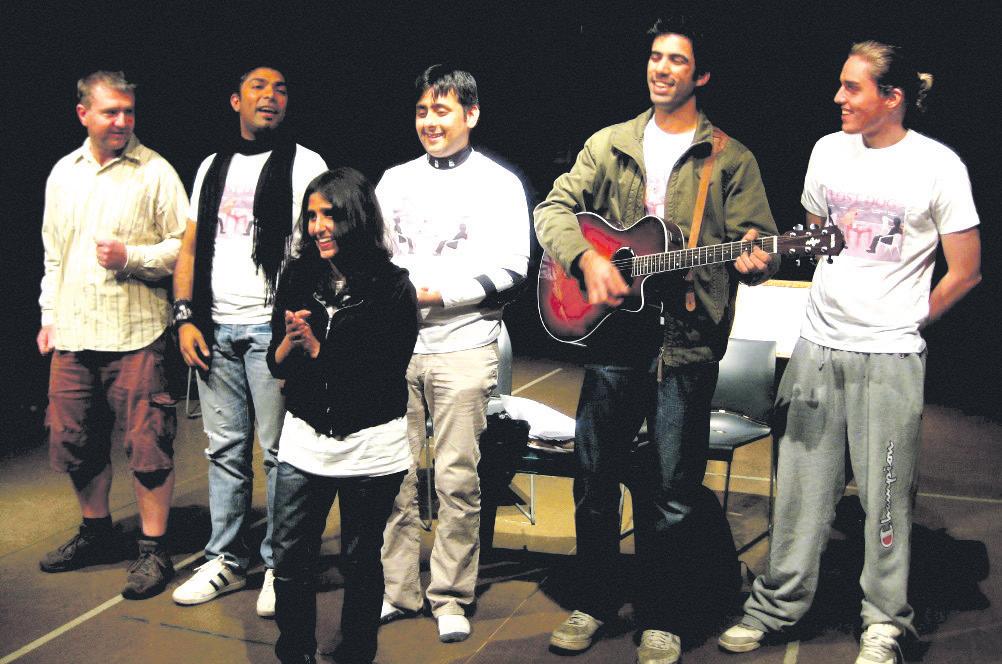
“Literature must chronicle issues; it’s the responsibility of the playwright to express truth for posterity”.
As Rashma Kalsie drove along the Great Ocean Road one day, she came across a dog that seemed separated from its owner.
“I was awestruck by this poor being, a lost dog, looking high and dry on the streets,” she recalls.
The anguish of the creature remained with her. It led her to write a creative piece that has now been transformed into a play, called what else, The Lost Dog.
“The character of the dog is a metaphor in the play to draw a parallel between the sense of loss a dog feels on being separated from his master and juxtaposing it with the sense of alienation immigrants experience away from home,” explains Kalsie.
The play was staged at the Walker Street Gallery and Arts Centre in Dandenong in late July.
Describing the play, Kalsie says, “The story unfolds in present times and explores the attempts of an immigrant protagonist at acculturation in a foreign country. It also tells how immigrants strive to make another country their own, and the emptiness they deal with in the process”.
The play begins with two friends, Gurwinder aka Gary and Pawan, enjoying the scenic view from a restaurant along the Great Ocean Road. While Gary is the oh-so-
cool bloke in favour of almost everything Australian, Pawan is the typical Indian boy gradually finding his feet in the country. The lost dog, literally played by Rakshith, constantly hovers around the two main protagonists and despite its inability to communicate, forms a major fulcrum of the entire play. Events take a turn when Gary and Pawan come to know of an Indian student attacked by a group of Australian thugs, and this is when they feel that the life of a migrant is comparable with that of the lost dog. However, despite their fear and hesitancy to mix with Australians with the ongoing flurry of attacks on Indians, they come to the conclusion that Australians are really a friendly lot when they run into Mike and Philip.
The screenplay is wonderfully written with bouts of humour thrown in, and ends on a happy note with an original song written by Kalsie herself and executed to perfection by Gary, Pawan and Rakshith. The entire team received a standing ovation for the fabulous performance.
Now that tensions and conflict between Indians and Australians have ceased and also with the ABC’s Dumb Drunk and Racist shattering Indian stereotypes about Australians, why touch on the sensitive issue of racism?
Kalsie responds, “Literature
must chronicle issues; it’s the responsibility of the playwright to express truth for posterity”.
She goes on to say, “Racial hostility is not an act of personal whim but a collective subconscious element that forms a part of our psyche, and it has to be exorcised. Moreover, racial prejudice has been passed on from one generation to another and is not formed in a day. And, to top it all, the play goes beyond the issue of racism and also talks of displacement, a sense of loss that immigrants feel having left their home country”.
To quote from the play, “Metaphorically speaking, as and when the tectonic plates beneath the earth’s surface move, they bring about a change on the surface as well, like an earthquake or a tsunami. That is exactly what is happening here; immigrants are the tectonic plates beneath and the natives are the surface - one cannot move without affecting the other”.
It’s been quite a demanding journey to get this play up and running, Kalsie reveals. She had to brazen out denials from all and sundry with regard to financing this project. But she never gave up and eventually managed to convince the council of the city of Greater Dandenong and Netorbis, a social media application, into offering some form of assistance.
The Kalakruthi School of Indian classical music presented another Geetaarpanam on July 22 at the Alexander Theatre. It was a scintillating debut Veena duet of Vikram Kanagaraj and Vaidehi Naganur, who have been learning from the school’s founder Shobha Shekhar for nine years now.
Veena arangetrams are few and far between, and this marvellous performance by the talented young duo left everyone in awe. The two unleashed a nonstop cascade of ragas for over four hours, keeping the audience entertained with an alapana now, a kriti then,
some swaras in-between. There were no gimmicks but just solid, quality classical music that not once compromised on quality – a testament to the dedication and achievement of both guru Smt Shekar and her pupils.
They began with the difficult ada tala varnam ‘viriboni’ in bhairavi, and by the time they were playing the pallavi in the second speed, it became apparent to everyone that this was no usual debut concert.
It had a spark, a flair – seen only from seasoned artistes. In their next item in Hamsadhvani – the popular Vatapi ganapatim – the duo showed how good they were
in bringing out the ‘bhava’ – the emotion – inherent in the kritis, a knowledge that they must have imbibed from their grasp of vocal music, in which both of them were clearly proficient. Vaidehi’s vocal abilities were of the highest order and in her rendition of the viruttam in Yamuna Kalyani – prelude to their presentation of the popular Vyasaraya kriti Krishna Nee Begane –she demonstrated her multifaceted musical abilities. Their reetigowla was also a memorable piece, embellished as it was with alapana and kalpana swaras. The piece de resistance was the marathon item in Dharmavati wherein they impressed

This talented wordsmith came out with her first novel as a teenager and has never looked back since. Kalsie has written articles for several leading magazines in India such as Woman’s Era and has also been actively involved as a playwright in theatre including The Want of a Man which was selected as an entry into the Onassis Play competition in Greece in 2003.
Having juggled with various genres and mediums over the years, apart from being an independent playwright/writer, Kalsie is also the editor of Passion for Prose – a website for emerging writers. Moreover, she is actively involved with the Hansadhwani Foundation, an Indian NGO dedicated to arts and pedagogy. She is currently working on a novel and an anthology of stories.
Kalsie currently has her hands full with several projects in the offing: a novel based on fantasy in collaboration with author Phil Cherry who has published books on Kindle, a production titled Arrangements of Love, an anthology of stories, and she is also planning on starting an association for drama aficionados for Indians in Melbourne.
Kalsie is surely a personality to watch out for in the coming years.
Sujith Krishnan“Metaphorically speaking, as and when the tectonic plates beneath the earth’s surface move, they bring about a change on the surface as well, like an earthquake or a tsunami. That is exactly what is happening here; immigrants are the tectonic plates beneath and the natives are the surface - one cannot move without affecting the other”.
the audience with their execution of tanams in ragamalika, their niravals and kalpana swaras. Vikram and Vaidehi didn’t let their guard down in the final short items either; they were presented with equal care and attention to detail.
The orchestra consisted of young home-grown artistes, all
Vikram Kanagaraj and Vaidehi Naganur at their veena arrangetram
of whom acquitted themselves admirably. Bala Sankar on the mrudangam; Sai Nivaeithan Ravichandhira on kanjira; Keshav Yoganathan on the tabla, all provided excellent percussion support like veteran accompanists on the Chennai music circuit!
Chitra Sudarshan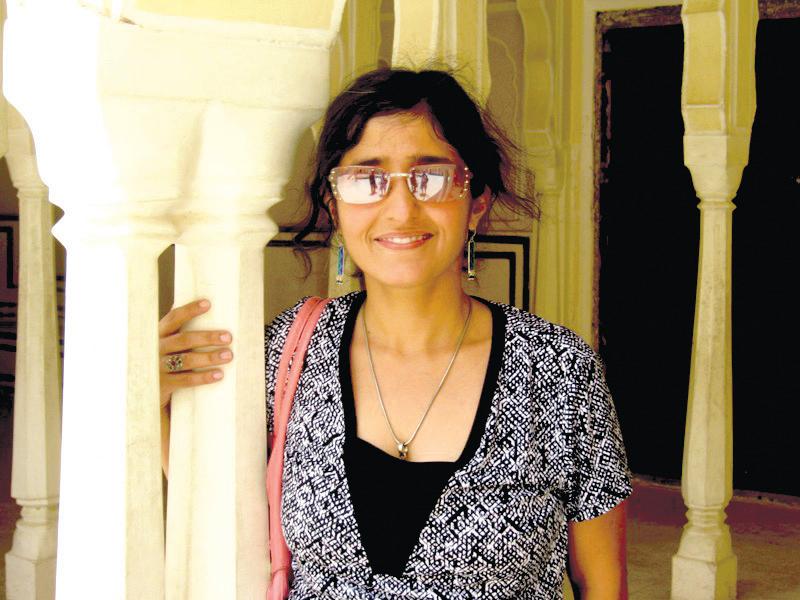




The number of Indians settled in Australia makes a comforting statistic for the community, and that number is undoubtedly increasing. But just how well have we adapted to all things Aussie, and how much of our own culture and tradition have we preserved living so far from home? Some of us have lived here for over a quarter of a century, some have been here a few months. So do we think “Oye, oye, oye!” is an Aussie watchword or the lyrics of some almost-forgotten Bollywood hit?

We ask Indian Link readers for their opinion on exactly how ‘Aussiefied’ they’ve become. Or if they still retain a good bit of their desi heritage. Have they completely forgotten their Indian roots, or do some vestiges remain as they add a pinch of garam masala to their pasta?
‘Thoda Indian, thoda Aussie!’ was the expected general response. We are adept at using barbies, have taken to sport and shorts regardless of the state of our bottoms (too large or nonexistent), we call chappals ‘thongs’ without embarrassment, and not a day goes by without using the phrase, “No worries, mate!”
And yet we still observe religious rites, do pujas, fast on karva chauth and think rice-dal-pickle-papad is the best meal in the world. We also believe that we are the only nationality in the world with an incomparable sense of duty to our parents and family. Even if they drive us crazy. We still follow our tele-soaps, surreptitiously keeping up with episodes on the net, because our children would laugh themselves silly if we were caught watching Kyonki Saas Kabhi Bahu Thi!
But our respondents agree that most of us love the life and manage to maintain that essential balance between all things Aussie and Indian. We get to work on time each day, but land up at a friend’s party two hours late in typical Indian-eshtyle, and no-one notices. So let’s celebrate our Aussie Indian-ness, or is it the other way around?
Cover illustration: Dakshinamurthy Anjanappa

On a recent visit to India, I chatted with my mom as she made some tea. It boiled to the point where it was turned pink. Then more milk was poured in, to boil yet again and again. That’s tea for you, Indian ishtyle, a habit I have moved miles away from, thankfully and fortunately, to say the least.
My Australian kind of tea with a tea bag and no milk is not only miles away from the tea I grew up drinking, it’s also “no good”, “Bakwas chai” and “gori chai” for my family and friends in India. They reckon I am missing out on the “true flavours” of tea. Beside the true flavours, I am also missing out on the acidity and the heart burn it caused. Like food, we have a tendency to over-cook whatever we get our hands on. Tea is no exception. A soft leaf, full of flavour, is done to literal death by boiling and re-boiling. I am happy with the new kind of tea I drink. I get to try the herbals, the greens and the earl greys and they all taste different. That’s one thing I am happy to move on from. Missing desi chai? Naaaaa…
But I could tell you about another drink from my old life in India that I still love. At a drinking session one evening, my mate opened his bar full of the Glenmorangies, the Taliskars and Laphroaig single malts. Sitting quietly amidst them was a familiar bottle, every desi’s jaan, Old Monk Rum. This, dear readers, is something I have not moved on from even after having lived in Australia for 14 years. Why would you even try to move on from something as good as Old Monk? Recently when I bought a case of the divine nectar, the queue of mates ready to buy their quota was long. Be it the complex vanilla taste or the wholesome flavour, it’s a well-known fact that Old Monk drinkers seldom move away from the monk. If they do, it’s to the Old Monk Gold reserve, even better. Every time I have a drink of the Monk it brings back memories from old times, college, Uni days, first job, first drink… even the first throw-up!
Here are two interesting stats which will make the Monk more attractive: it’s the 3rd largest selling rum in the world, and, they don’t advertise – its popularity depends on word of mouth and loyalty of customers.
Oh well, with a loyal customer base like me, we will keep the flag flying for a very long time!

Many aspects of my Indian personality have remained - and enhanced - since I moved to Australia 20 years ago. Primary among them, without a doubt, is praying. As a child I was taught to say my prayers and did so irregularly, tad procedurally; however today, my day is incomplete without them. In the early days I would just chant them but as they grew on me, I have delved into the deeper meanings of some of our foremost mantras. My research has convinced me even more about the power of prayer, and it has consolidated my core Indian values - being open, meticulous, logical and intelligent about everything.
Another aspect that continues to live with me to this day is the cooking I learnt from my mum. Most friends would tell you that I love to cook, and I attribute this passion to my mum. I don’t mean particular recipes my mum handed down to me (though those are precious too), but the entire science (and art!) of it: you know, how to go about it all, whatever you are cooking, not just Indian cuisine. And much of it I recall not from our time together in the family kitchen, but from memories of what she might have said in passing, or while she described something about cooking to someone else.
Looking back though, both aspects I have listed, have been honed through the skills I have picked up here in Australia. Through my formal training as well as my informal education here, I have learnt to approach issues in a humane and core-value-based manner. This has helped me greatly in all my endeavours at work and in life, and has actually helped me achieve many of my ‘impossible-ish’ dreams.
Another thing I must mention is that from the Australians I have learnt that no job is too small. I take absolute pride in cleaning my home (why, even the toilet), something many back home would never do - or never had to do.
Overall, I’d say, I’m a successful human being today because of the core values that were instilled in me in India, and equally because I learned how to apply my values and sharpen my skillset more effectively here in Oz. India and Australia are a dynamite of a combo that I’d recommend to anyone.
Ihave maintained the habit of respecting my elders irrespective if they are family or not, and still address them as “Aunty” or “Uncle”. Addressing an older person thus is
The habit from India that I have maintained is my orderliness and fuss over cleanliness. I have always been finicky about having my things in order and keeping everything organised. After living in a society where domestic help is not available at your fingertips, I think this habit of mine is a blessing as it makes home chores easier for me if things are already in order.
The new habit that I have taken on is not being addicted to Ekta Kapoor’s saas-bahu kind of daily soaps. Whilst being in India, almost everyone is glued to the telly from 7pm onwards; however with the busy lifestyle here there is no time for following any kind of daily soaps. I am glad I have been able to break free of those highly melodramatic family

Amardeep

T he habit from India that I have maintained, is definitely keeping up respect for my parents and giving them that high stature in life that they deserve. I miss having them physically close to me and being blessed by them at important junctures of my life. Having a family support structure in this foreign land is the one very essential thing that is missing for most of us here. Therefore I try to keep in touch with my parents as much as I can and seek their blessings all the time.
The new habit that I have taken on after coming to Australia, is punctuality. I know that Indians have created the impression that we are always running late for everything, be it going to a friend’s place for dinner or meeting someone at a scheduled time. However after coming to Australia I have learned to meet time deadlines and to be punctual to the core. On my visits to India though, some strange looks come my way when I put my new habit to practice!
Natasha Narain, Brisbane

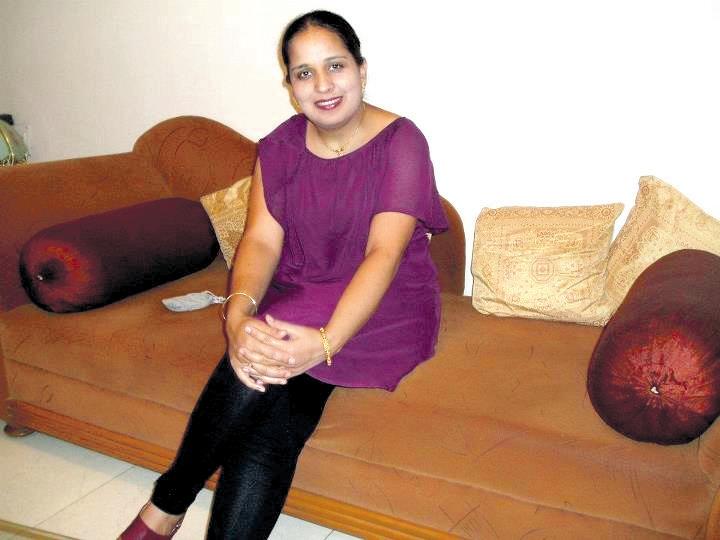
Are habits the ‘us’ that others know us by?
Are they ingrained to the point of compulsion?
Are they stagnant or softly malleable as we adapt to change?
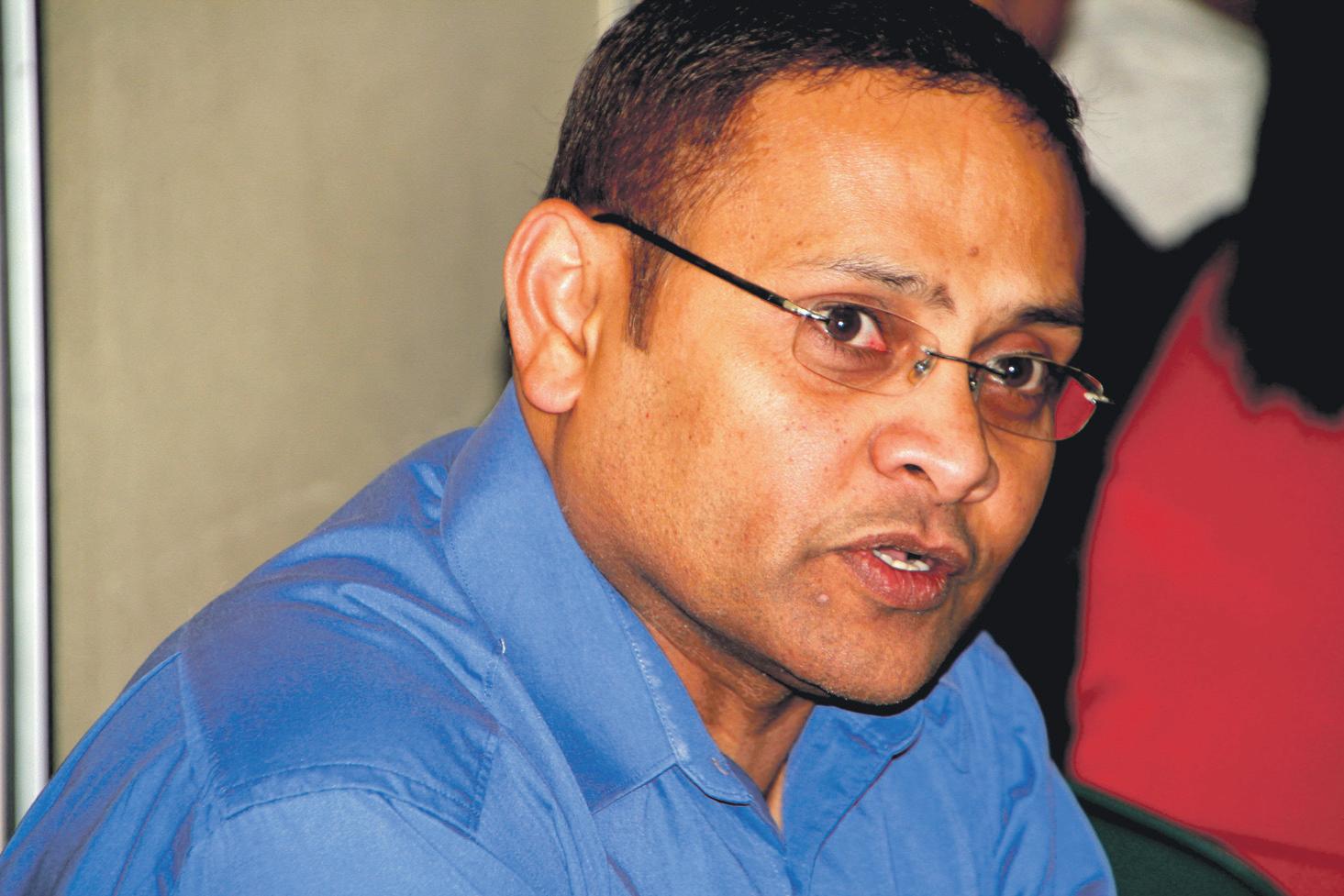
Are they cultural and personal – or are some habits possibly universal?
Is a habit, a method of doing or working?
Does breaking a habit cause anxiety and unrest?
Do I have a habit that causes others unrest?
Whether the term ‘Habit’ comes from ‘Habitation’ or the Habitat Centre at Delhi, it seems to have something to do with preserving culture.
Habits vary according to age and life situation.
My own begin from waking: the making of my bed, because it won’t make itself, and the magic maid has long resigned. Bleary eyed to the kettle, no matter how fresh the water in it is, it must be filled anew from the tap, anytime of the morning is fine, I can sleep in or be late, water runs at all hours unabated. Instant coffee or tea bag please –it’s too hard to boil milk and add the elaichi, unless there was someone at home I was bothering for. That noise, no it’s not the shrieking of taped bhajans nor is it honking: I am still getting used to the droning of the mower and the beeps of the rubbish truck. The morning rush must be the same, lunches packed, kids TV or X Box switched off (with minimal argument today), the school bus triple packed replaced by Mummy’s taxi with
Dare I think, that women in both places, rush about trying to run homes, be there for the family, organise away, and fulfil a quarter of the dreams instilled by juggling adapting to change. Some supported wholly, others partially and some not at all, each develops habits that make things possible according to the life situation.
But while I am home, I would rather ignore the cobweb and dust under the bed or the sticky range hood, but never the fuel gauge of the car or my net bank.
There is also the matter of my clothing, the comfy colourful one size salwar kameez to business suits and tights: taking on an identity that is harmonious to the place, but keeping the same soul within.
A soul that struggles with the fascination of chasing after balls of all shapes. One that confuses media and sports stars unless they are from Bollywood. One that uses random masala mixes and bottles of paste to make up concocted curries, delicious in taste. One that remembers the Kanthas and reuses old clothes as stuffing for cushions, and dyes skirts to deeper shades of red. That keeps the envelopes from letters with Indian stamps and hoards memories easily remembered after decades have gone by...
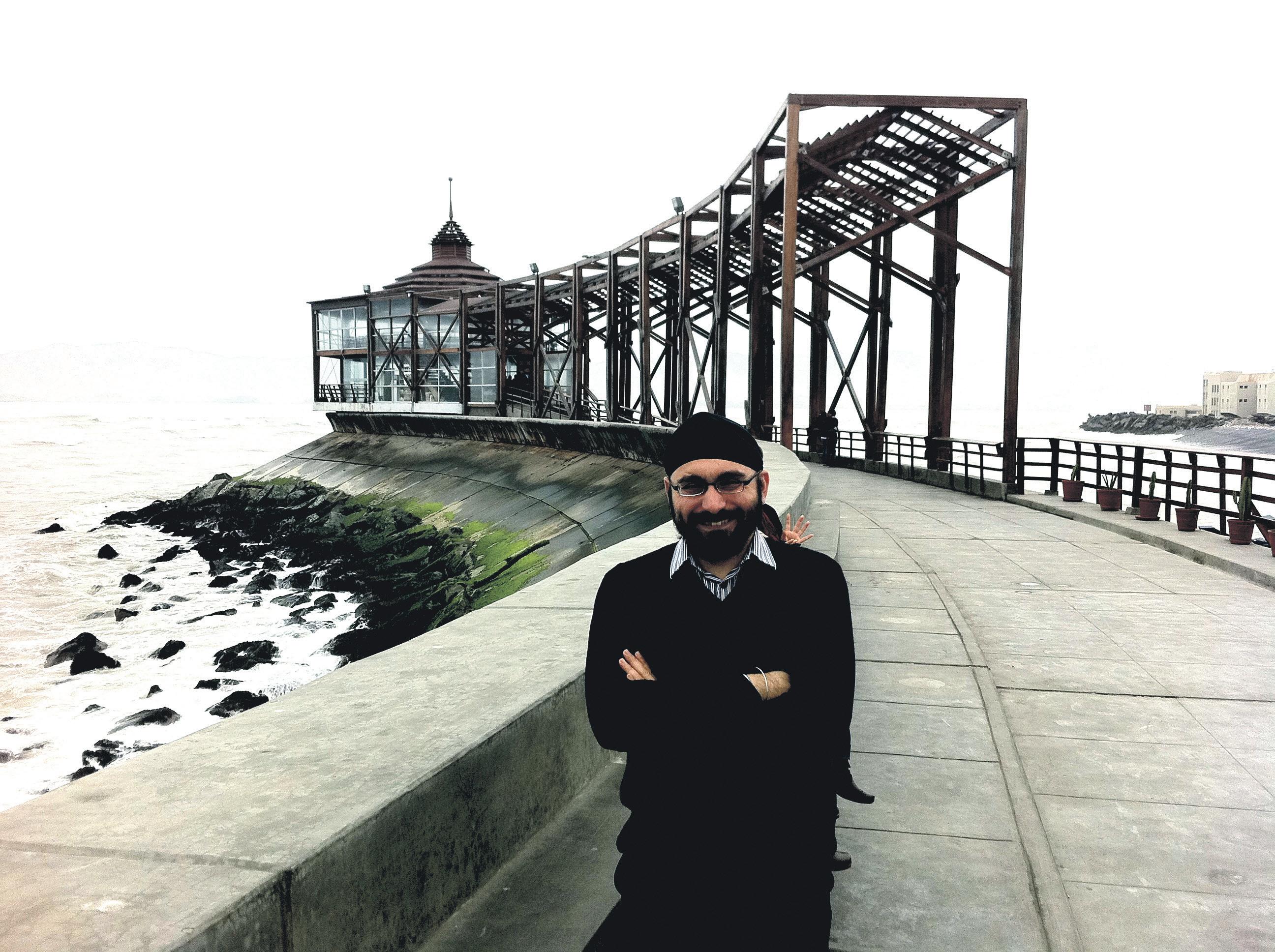

T he magic mantra when one migrates to Australia is “assimilate”. Out with the old, and in with the new. It was easy for me and didn’t take much effort. But what are the habits that I have still maintained? Well it certainly is my favourite chai! It was hard in the beginning to get my masala chai or Indian tea but the local Indian store always had a stock of good tea. But it’s easier now that chai is widely available (though I have yet to acquire a taste for Chai Latte)! And I still love drinking water from my stainless steel glass and by pouring it straight in to my mouth; lips never making contact with the glass. There is something about it! And water from that glass when it hits my throat tastes divine.
Another habit I have maintained is cooking an authentic Indian meal at least three times a week. Which means the food is spicy and not bland. I wanted my children growing up in Australia to appreciate Indian cuisine and whenever they travelled to India and home I wanted them to feel comfortable eating the food there with all its spices. So we may have the pasta, the steaks or Thai curries but rice, dal, roti, sabzi and even idli, dosa and the occasional kheer is a habit I have happily kept up.
Having married into a Coorgi family I was told early on by my in-laws about touching elders’ feet to seek their blessing. Touching feet is a gesture of respect in India and though this practice is more prevalent in North India, as a social etiquette in southern parts of India it is uncommon. It signifies the humility of the person and is done to seek the blessings of elders. Now this is a habit that I have still maintained after 21 years in Australia. Whenever I meet my husband’s family, in India or in Australia, I dive straight at their feet and seek their blessings. It is awkward at times as it may be at the airport, at restaurants or at public places. It does take the relatives by surprise; some are pleasantly flattered, whilst some quickly try and stop it.
But the one habit I have adopted here in Australia is the famous peck on the cheek when I meet somebody. Growing up in Bombay I always saw my mother greeting people with a warm Namaste. For me after university and working in an advertising agency it seemed natural to shake hands when I was introduced to new people. But now, whether it’s old friends or somebody I am meeting for the second time, it’s a peck on the cheek!!
All of us here have also learnt to fill petrol in our cars. I had never stepped out of the car to fill petrol in India. It was all taken care of at the petrol station. But now not only am I an expert on filling petrol but have even learnt to fill air in the tyre. Hopefully I won’t have to learn how to change a flat car tyre!!
And of course the one habit I am glad I gave up was turning up fashionably late. It seemed OK in India to keep someone waiting for an hour or turning up late for an event. We could always blame it on the traffic and it was accepted. But now I have no excuses and with a watch on my hand, a clock in the car and with even my phone telling me the time, there is no reason to be late anywhere.
Getting rid of old habits is a matter of individual choice and a social process. But clinging on to old habits is also a gentle reminder of a life shared with family, close relatives and friends and a warm reminder of another place.
How my weekends have changed! Back then, the weekend was a time to spend with friends – at the movies, having long lunches, or lazing in front of the TV Now, weekends are spent playing ‘soccer mom’ at my son’s soccer matches, and lazing at a park with the kids running around and a picnic basket and a book for company!
Preeti Jabbal, Melbourne

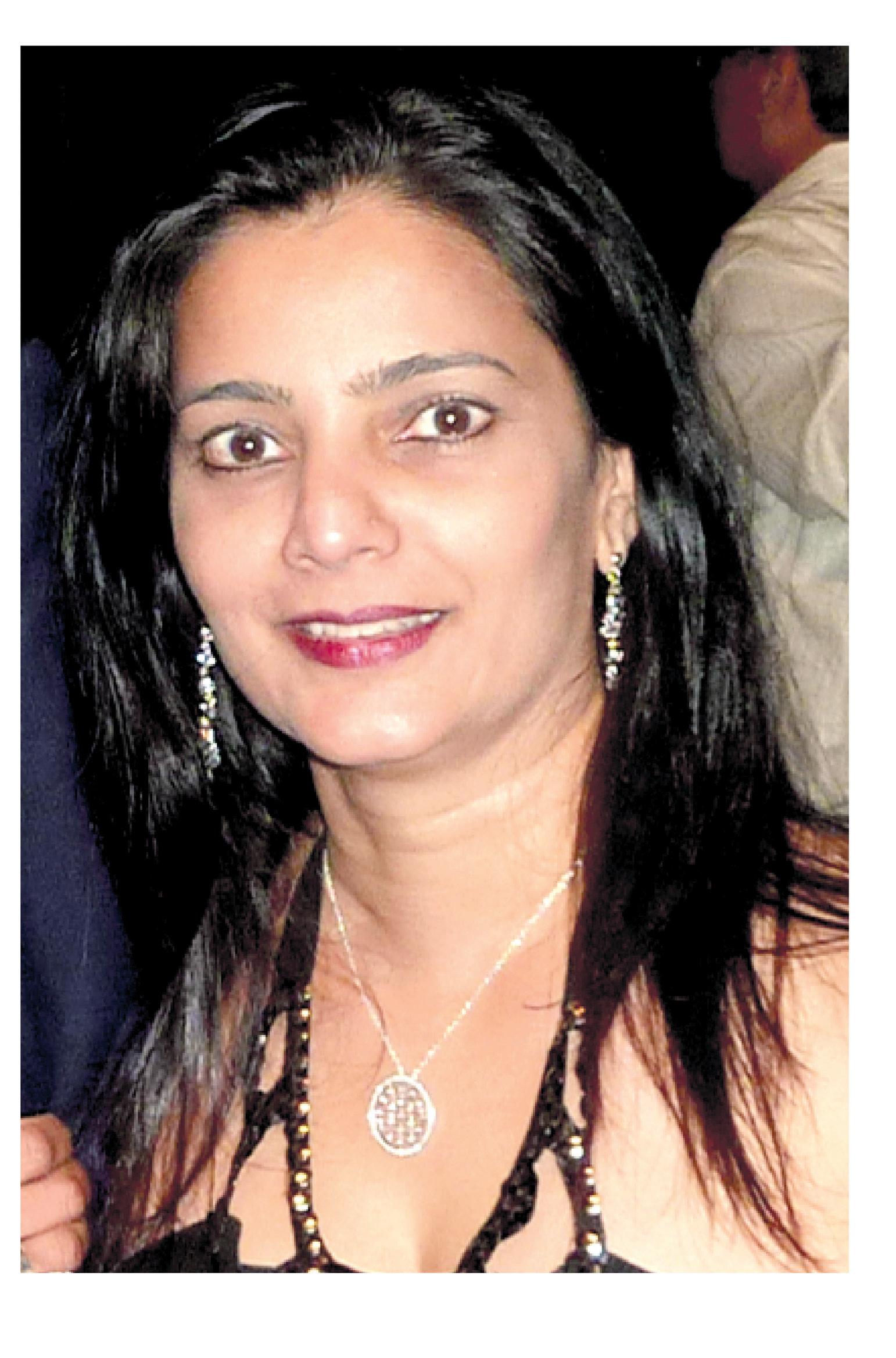
Isquinted my eyes, braced myself and clenched all my muscles. This was gonna hurt and bloody hell it did, one whisk and off came all the unwanted, unsightly, unsuitable hair. I nearly passed out from the unfamiliar feeling. I looked at the mirror and did not recognise the alien with two thin straight lines of hair passing off as eyebrows. A fortnight later I thumped through all the phone books and newspapers to find someone who does ‘threading’. I am talking about decades ago when Indians were seen few and far between in Melbourne’s suburbs, and a proper ‘eyebrow-wali ’ rarer. After much searching, I found someone who claimed to offer eyebrows and face threading. I was there in a nanosecond and happily endured the longer, more disturbing process of getting my eyebrows threaded. Each hair being pulled individually from its follicle seemed less painful than a simple whisk away. I even beamed with pleasure when the salon lady handed me a whopping bill that would feed a small Ethiopian village.
That’s one habit that I will not change. I will search high and low (actually don’t have to anymore) to find someone who will thread my eyebrows, instead of having them waxed into grotesque shapes.
What I did change though, was the habit of reaching everywhere fashionably late or according to ‘Indian Stretchable Time’. Barring the true blood desi events which operate on the same time-zone, I make sure that I get there on the dot or maximum five minutes behind. I have learnt to respect the value of getting everywhere on time, be it work or a social event. I understand how my coming late can inconvenience the host and upset their carefully organised event. I also understand that I am a role model for my son who will only emulate my behaviour. In a country where punctuality is considered a given, not an exception, I am happy to have adopted the good and shed my tardy habits from back home. Having said that, I gotta run now, ‘cause I am running enormously late for the Indian Independence Day celebrations. Hang on, did they say 7 pm for a 7. 30 start, or was it the other way round??

 Chandana Unnithan, Melbourne
Chandana Unnithan, Melbourne

The daily ritual of waking up, opening the windows, a ritual shower and reciting the Gayatri Mantra – I followed these rules set by my grandfather since childhood. The powerful mantra salutes the solar principle, evokes the supreme consciousness and three levels of consciousness to destroy ignorance with divine wisdom, and lead our intellects and energy in the right direction. When I could fathom sufficient courage to question this tradition, I quietly asked my grandfather, “Why this chant? I can understand the need for fresh air in the house, and we need to be clean, but why this chant every morning, that too in cold water?”
With his years of wisdom smiling on his face, he replied. “It is an invitation for a friend, into your home, for breakfast, as he comes to cheer you up and warm up your spirits. So will you not welcome this friend? If you don’t open your windows, don’t water the garden, get ready and invite him home, he might just walk away so not to disturb you!” Somehow, that registered. To this day, miles away from my birthplace, in Melbourne’s cold wintry mornings, I still do this in the hope that my friend will come for brekkie!!
Clearing leaves in the garden and from the roads, were always considered the gardener’s responsibility in India. Unconsciously I watched the mali (gardener) clean up the garden, rake leaves and stems from the pathways and the surrounding roads. One day, as I drove down the road, I saw him remove debris lying on the road, which all the others had ignored, walked past or driven around. Perhaps, the habit of raking up the dirt and keeping the surrounds clean was etched in his psyche. The past few years in Melbourne, I have been mowing the lawn, cleaning the garden, clearly organising the garden waste and unconsciously removing stems/leaves from roads when I see them. And I often wonder, is this a new habit or was the mali my original teacher?


When I left India for Australia with my husband and two young children in 1989, the big fear that I had was, how would I get my children to follow our culture and traditions? My husband and I worked very hard to keep our culture alive in our family. The first step we took was to talk to our children in our native tongue Tamil.
Other things I did included joining the Tamil Association of Western Australia and becoming a member of the working committee; taking upon myself the huge responsibility of being the producer and presenter of the 6EBA Tamil ethnic radio channel which I continued doing for 10 years; organising annual cultural show “Kalai vizha” on behalf of the Tamil Association to promote Indian culture, and founding a school named “Palkalaikkalanjiyem” [The academy of fine arts and home economics] in 1995, which was purely aimed at promoting culture to the younger generation. The school taught music, dance and other culinary arts such as bridal dressing and cooking.
It is nearly 24 years since I landed on these shores. Now I can proudly say that my family still holds on to our culture, our traditions, our morals and values. However, although my husband and myself have worked very hard to maintain our culture, it has been inevitable that we too have been influenced by Australia and its many values. So I can also proudly say that I now understand Australia and its openness to other cultures. I can now say that although I value my culture very highly, I too like Australia, enjoy the multiculturalism of this country and am appreciative of all new cultures.
I especially love the new and wonderful cooking methods that I have come to learn during my years in Australia. I have learned a lot in relation to cake making and decorating here. In fact I have created a bit of fusion of my own, Cultural Cakes! This is a result of the combination of the traditions and culture of India with the new Australian methods and techniques of cake decorating.

One of the aspects of my life in India that I have kept up after moving here, is my passion for fitness. As a keen sportsman in my university days, I was determined to keep the passion alive. Today I am lucky enough to be living my dream in Australia, as a physical education teacher. My lifestyle revolves around fitness, having inculcated my wife and two young kids into it too, as well as many of my friends. After school hours, I run a coaching centre, and in the school holidays have organised physical fitness camps for kids. At the moment I am recovering from surgery after a major injury I suffered while playing soccer, but you will be glad to know that I’m off crutches now, which means I will be able to participate in Sydney’s City-to-Surf this weekend! I’ll have to walk this year though, while the rest of the family and the extended friends’ group will be running as always.
One of the new behaviours I have adopted consciously after moving to Australia, is to dress well. Even as a Phys Ed teacher, I take special care each morning to make an impression with clean and smart clothes. Happily, I’m frequently complimented for it! And here’s something for you from my dear wife, who wants me to share with you that I haven’t lost the old habit of losing my keys: the locksmith has to be called - or the bathroom window smashed - on too regular a basis at our home.







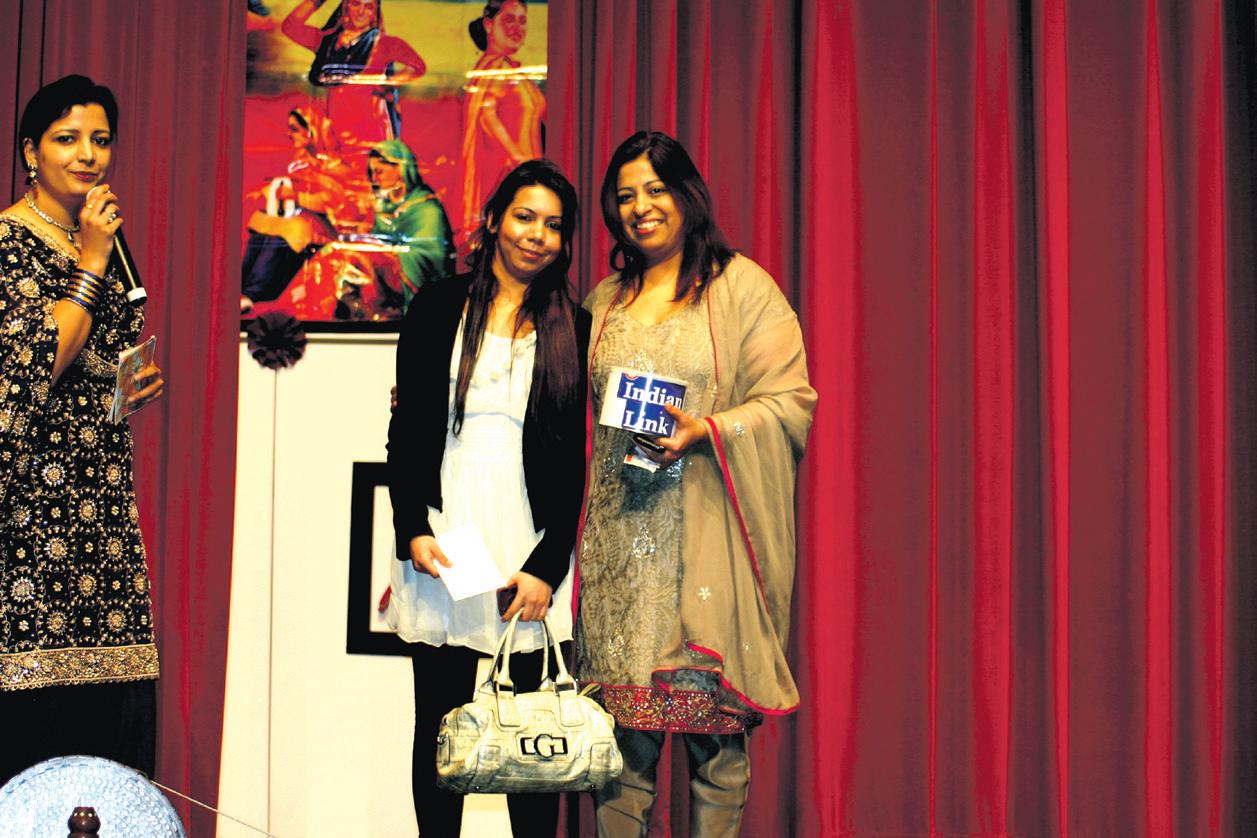

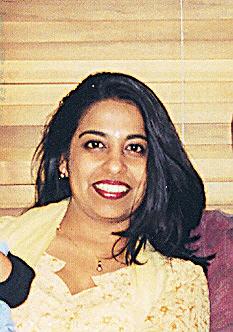




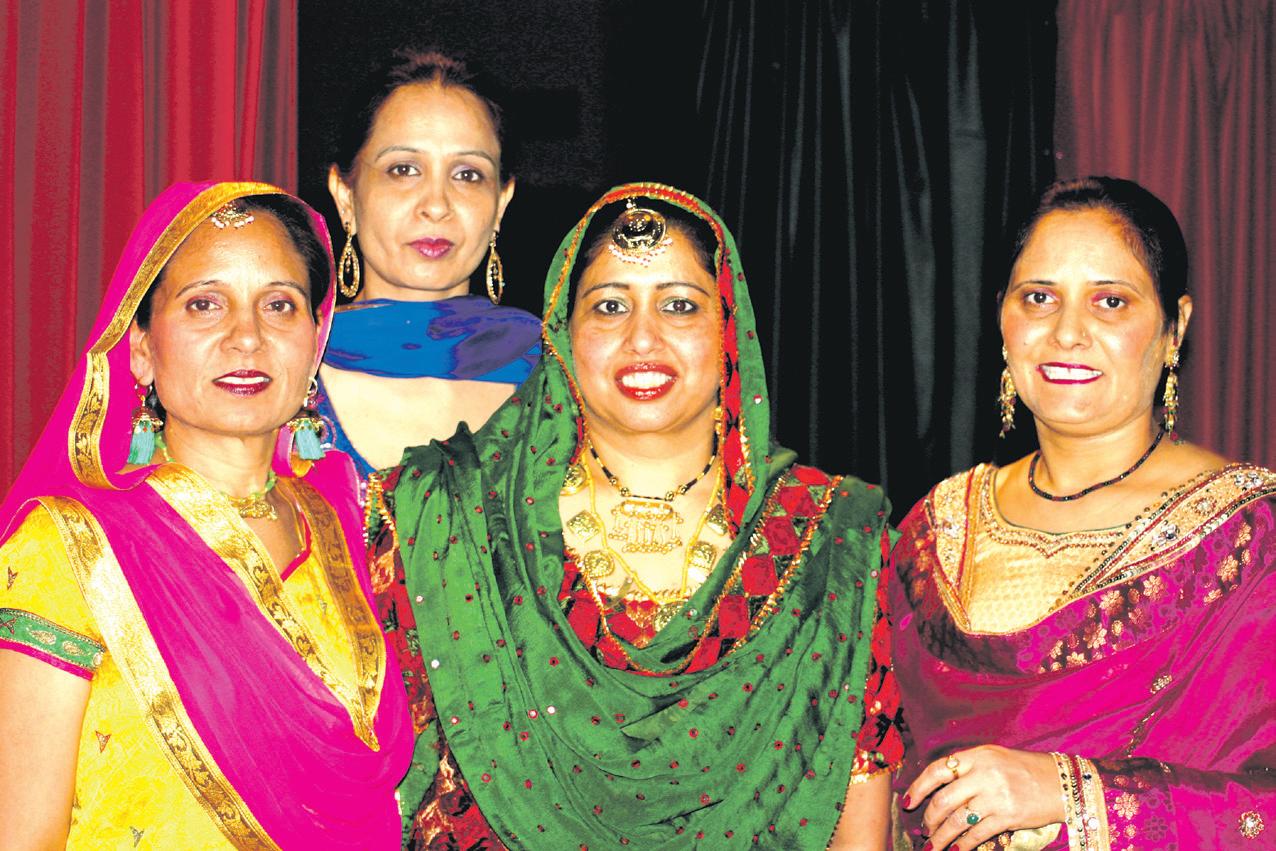
And thou shalt in thy daughter see, this picture, once, resembled thee.
Ambrose PhilipsMost mothers are the biological and emotional roadmaps that lead to the development of daughters. They are often looked up as role models. Those who are fortunate enough to experience this relationship also know how much fun moms and daughters can have when they are together. In celebration of that special togetherness Teeyan Melbourne Diyan Inc held a mother-daughter function at the Kingston City Hall, Moorabbin recently.
Coming into its fourth year the Teeyan event attracted a large audience and the hall was packed with colourfully attired women
of all ages. Teeyan (also known as Teej) is a traditional Indian festival held in the beginning of monsoon season. Around this time the newly married women return to their parents’ homes to celebrate and hope for happiness, prosperity and wellbeing. Singing and dancing is an integral part of this festival.
Teeyan in Melbourne was also celebrated with a few songs and a lot of dancing. What unfolded was a kaleidoscope of vibrant colours, stunning outfits and spirited dancing to zesty Punjabi music. By the end of the event the abundance of giddha, bhangra and similar dances started bordering on too much of a good thing. The monotony was rescued by a thought- provoking skit on social and domestic issues like alcoholism, dowry, family conflicts etc. The focus was to revive the cultural values that we have been brought up with and sustain them to maintain meaningful relationships.
A stand out performance was a tongue in cheek humorous skit by two ‘bhands’. The dialogue between two elderly men of the village (played by two very talented women) was enormously enjoyable. The shopaholics were tempted with jewellery, clothing and shoe stalls outside the main performing area. Stalls such as Bedazzled By Rani, Riwaaz boutique and some independent operators offered a popular attraction for women who sought some retail therapy. Indian Link also participated in the event and three raffle prizes were drawn that gave the winners a voucher to enjoy dinner at Tandoori Junction restaurant in Glen Waverley. At the tag end the floor was opened
up to the audience giving them a chance to move and shake to upbeat Punjabi hits.
The organising team that included Paramjit, Rajbir and Navjot had made every effort to ensure that the participants had a good time. Teeyan was a gender exclusive activity that gave the audience a chance to catch up, share a laugh, tuck into some delicious Punjabi snacks and let their hair loose on the dance floor with their gal pals. The whole event was dedicated to give the women an opportunity to take a minute for themselves while enjoying the company of other fun and fabulous friends. It mostly lived up to the expectations.
The focus was to revive the cultural values that we have been brought up with and sustain them to maintain meaningful relationships.
A stand-out performance was a tongue in cheek humorous skit by two ‘bhands’: the dialogue between two elderly men of the village (played by two very talented women) brought the house down.

HOT DEALS FOR DECEMBER 2012 OUT NOW $1075* INC TAXES TO INDIA



India’s rifle shooter Gagan Narang clinched the bronze medal in the men’s 10-metre air rifle event of the 2012 London Olympics to give India its first medal.
The gold went to Romanian Alin George Moldoveanu and Italian Niccolo Campriani bagged the silver.
Narang’s illustrious compatriot and defending champion Abhinav Bindra failed to qualify for the final round at Royal Artillery Barracks in London.
Bindra’s unceremonious elimination at the qualification stage came as a heartbreak for India in the same manner as Australia’s men’s 4 x 100 relay debacle at the swimming pool. However, the 29-year-old Narang of Hyderabad, participating in his third Games, made up for his compatriot’s luckless show.
This is the third time in row that Indian shooters have won medals at the Olympics. Double trap shooter Rajyavardhan Singh Rathore won the silver in 2004, Bindra gave India a historic gold in Beijing, and now Narang has bagged a bronze in London.
“I had to complete the set in the shooting,” Narang said later. “We had a gold, silver and I got the bronze!”
Narang has always said the Olympic medal was the one that was missing from his cabinet as he has won every shooting medal worth the name.
Bindra, India’s only individual Olympic gold medallist, failed to qualify as he finished 16th out of 47 contestants.
Narang had missed the final round in Beijing Games on a countback.
This time round, not only defending champ Bindra but also former Olympic champion and Beijing Games silver medallist Zhu Qinan of China failed to qualify for the final round.
Gagan, was always considered a big hope alongside Bindra after he shot four golds in the Delhi Commonwealth Games. He had given enough indications of his class in a pre-Olympics event in Germany’s Hannover by scoring 704.3 - that was higher than the world record of 703.1 set by Thomas Farnik of Austria in the 2006 World Cup.
Meanwhile, congratulations are pouring in from all over for Gagan. Union Sports Minister Ajay Maken said his bronze will inspire other Indian athletes to do well in the sporting extravaganza. He was speaking with reporters outside the Royal Artillery Barracks when Narang shot an overall score of 701.1 to finish third.
“It would have been even better if Abhinav Bindra stood on the podium as well,” lamented the minister.
The Haryana government announced a reward of Rs. One crore for Narang.
Even though Narang does not belong to Haryana, he has been given the reward under the category of sportspersons from the state as his family roots are from the northern state’s Panipat town.
Chief Minister Bhupinder Singh Hooda said Narang has brought laurels to the state and the country.
The chief minister said players from Haryana winning a gold medal in the Olympics would get Rs.2.5 crore, silver medallists Rs.1.5 crore and those winning bronze Rs.one crore.
Shooting became the second sport after men’s hockey to fetch India more than two medals down the years at the Olympics, with the success in the discipline having come from three back-to-back games since Athens in 2004.
Narang’s success has added to India’s less than impressive medal count - which now stands at 21 comprising nine golds, four silvers and eight bronzes - in Olympics history.
Hockey alone has provided 11 metals (8 gold, 1 silver and two bronze medals). Apart from the three in shooting, the Indians have got two each in athletics and wrestling and one apiece from weightlifting, tennis and boxing.
Unlike others of his tribe, Narang,an Air India executive, has also given back something to the sport by starting an academy - Gun for Glory - at Shiv Chhatrapati Sports complex in Balewadi, Pune, to train the next generation of Indian shooters.
As his father said after his London triumph, Gagan is good for more.
Iconic sculptor Anish Kapoor, the Indiaborn winner of the Turner Prize, has given Britain its biggest public art installation in his ArcelorMittal Orbit – designed specially for the London Olympics.
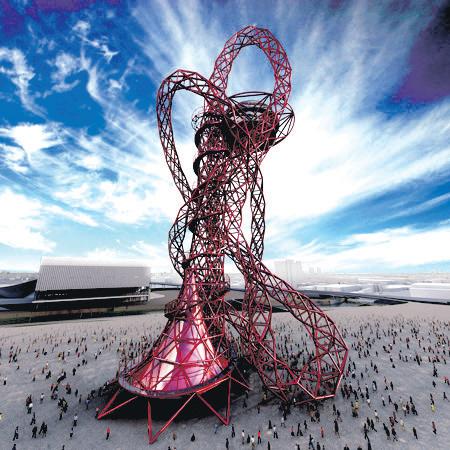
The giant Orbit is a 115-metre high steel observation tower at Olympic Park in Stratford in London that is likely to help in the post-Olympic regeneration of the area. Kapoor designed the Orbit with Cecil Balmond with steel donated by India-born steel tycoon Laskhmi Mittal, who remains the richest man in Britain with an estimated fortune of 112.7 billion pounds as in April 2012, according to British estimates.
Supported by Sri Lankan-born British architect Cecil Balmond, Kapoor effortlessly put 1,400 tonnes of molten metal for the tower like kneaded dough.
ArcelorMittal Orbit is Balmond’s complex algorithm of a cellular structure combined with Kapoor’s ability to create a spectacle.
Both artists intended to create the largest piece of public art as an enduring legacy of London’s 2012 Summer Olympics.
The Orbit, which cost 22.7 million pounds, took 18 months to finish. About 60 percent of the steel used in the structure was from recycled scrap collected around the world, particularly Luxembourg in west Europe.
Kapoor, a familiar name in Britain known for his early creations such as Turning the World Upside Down (Israel Museum, Jerusalem), Cloud Gate (Chicago), Sky Mirror (London’s Kensington Gardens) and Leviathan (Grand Palais), now has achieved the status of a demi-god.
Kapoor, who sculpts futuristic forms in steel and glass, said in an interview to The Guardian that the making of the Orbit was a “series of discrete events tied together”. Kapoor said he did not want an icon, “but a moving narrative”.
“You start under this great domed canopy that sits above you, almost ominous darkness sucking you in. Then you come slowly to light,” he said.
Balmond, who also designed the quirky headquarters of China Central Television in Beijing, which is dubbed as ‘the big boxer shorts’ due to its shape, said that he was interested in designing eccentric buildings.
Towers are mostly symmetrical, but the designers described the Orbit as unsettling and refusal of a singular image. Talking about the colour, Balmod said the park was mostly green and white, hence it was important to have other colours, like red.
Orbit has been satirized as the Eiffel Tower after a nuclear attack, or a catastrophic collision between two cranes, by many who have been against the idea.
“Victor Hugo once described the Eiffel Tower as hideously ugly,” said Anish Kapoor in defense. He also noted that as time passes the unusual becomes usual and the concept of beauty changes.
Recalling the project, Lakshmi Mittal says he “never expected” it would turn out this big. He said it was not just the supply of thousands of tonnes of steel but in reality ArcelorMittal “has given much more than steel”.
There are two other Indian touches to the Games.
Shobhana Jeyasingh, a Chennai-born contemporary dancer who works out of Britain, was approached by the committee of the Cultural Olympiad some time ago to
present her new choreography, Too Mortal in the Old Churches of London during the London Olympics 2012 Festival.
Too Mortal, an atmospheric new work with Indian classical elements, was conceived for churches in London, Stockholm and Venice, Jeyasingh said.
Inspired by their dramatic architecture, the choreography contrasts and complements the rhythms and spaces of these historic buildings. Jeyasingh said she has tried to explore the “notions of the church as a sanctuary”.
Meanwhile noted graphic novel writer and artist Sarnath Banerjee, the author of the best-selling The Barn Owl’s Wondrous Capers, has taken his graphic textual art to Olympic billboards in London with a message: Games Don’t Just Deal With Winning.
The Olympic public art project commissioned by Frieze East is made of several billboards, graphic essays and posters. Banerjee says the project is against the sensibility of the Olympic Games which is about winning. “It is a campaign about people who fail”.
Banerjee said he has created characters like a boxer who is thinking of trying to duck a punch, a pole vaulter who realises that he chose the wrong discipline daunted by the audacity of the jump, a judoka who takes long-distance tips about his sport and a high jumper who lives, reads and eats light.
Banerjee is one of three artists chosen by Frieze East for the Olympic Public Art Project.
Army shooter Vijay Kumar made India proud by winning a welcome silver medal at the London Olympics in the men’s 25 metre rapid fire pistol event.
Vijay Kumar, a junior commissioned officer (JCO) in the 16 Dogra Regiment, ensured a finish on the podium scoring 30 in the final after Cuba’s Leuris Pupo gave his country its first gold of the Olympics by carding 34.
His performance more than compensated for a poor show from Gagan Narang, who failed to make it to the final of this event after taking the 18th slot in the qualifiers. Kumar thus became the second Indian after double trap shooter Rajyavardhan Singh Rathore to win an individual Olympic silver medal. Rathore achieved his feat in 2004 Athens Games.
“There was lot of pressure on me but I stuck to my plans and came out well,” an elated Kumar said at the Royal Artillery Barracks. “This medal means such a lot to me. It has been my dream to win an Olympic medal. This is the highest you can get”.
He added, “I was focused like I normally am for other competitions. But this is the Olympic Games and it is very special. You can never blank out the fact that you are competing in the Olympic Games but I managed to remain focused. I knew I had to keep control over my nerves. This was my first Olympics, I knew I had to concentrate and never let that falter”.
The 26-year-old’s success came after Joydip Karmakar finished tantalisingly close to a medal in the men’s 50 metres rifle prone, finishing fourth amongst the eightman field.
For Vijay’s family it was a disappointment that later turned into a big celebration in the
nondescript village of Badsar in Hamirpur district of Himachal Pradesh.
“Had the cable connection to our home not snapped at the last moment, I would have seen my son’s medal-winning moment in the comfort of my home with other family members also watching,” an upbeat Vijay’s father Subedar (Retd) Banku Ram told IANS.
He said the entire family was glued to the television when the cable connection suddenly snapped.
“Finally we moved to a nearby shop to watch the television and saw my son garnering Olympic glory,”
56-year-old Ram, whose mobile phone was continuously ringing with congratulatory calls, said.
Vijay’s house was bustling with villagers, relatives and officials of the district administration.
Elated mum Roshni said she got a call from London from Vijay immediately after the event. “He said he’s satisfied with his feat and his dream fulfilled.”
Vijay joined the army at the age of 16. Serving as a Subedar in the Indian army, Vijay took up shooting in 2001 and his father said he never expected his son to reach such heights.
“I never thought he would reach this level. My happiness has no bounds,” he said.
Vijay had spoken to his father two hours before the event.
“He was quite confident about winning the medal,” Ram.
He had no regrets that his son missed the gold. “No… not at all. I am very happy with silver. I think it’s no less than a gold for us.”
Congratulating the shooter, Chief Minister Prem Kumar Dhumal said: “It’s a matter of great pride and honour for the state. We will honour Vijay Kumar with Himachal Gaurav Award Aug 15,” he told IANS.
The state government has already announced a cash award of Rs.1 crore to the shooter.
President Pranab Mukherjee congratulated shooter Vijay Kumar on winning a silver medal at the London Olympics, and said the army man has done “India proud.”
“The whole country joins you and your family in celebrating this impressive achievement,” he added.
Kumar thus became the second Indian after double trap shooter Rajyavardhan Singh Rathore to win an individual Olympic silver medal. Rathore achieved his feat in 2004 Athens Games.

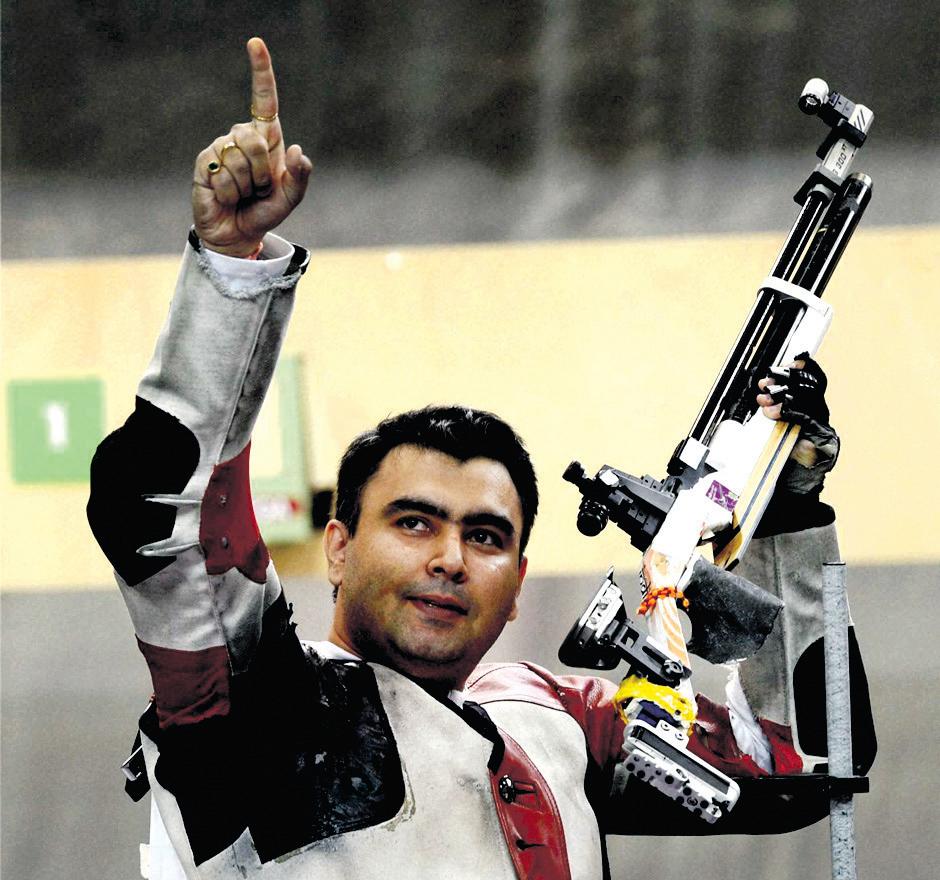
World No. 5 Saina Nehwal gave India its maiden Olympic medal in badminton.
She won the women’s singles bronze after her opponent Xin Wang of China broke down with a knee injury after taking the opening game.
Wang retired after winning the first game 21-18.
Nehwal, ranked fifth in the world, became only the second Indian woman to win a medal in an individual Olympic sport, after weightlifter Karnam Malleswari at the 2000 Sydney Olympics.

Wang, a former World No.1 and current No.2, hurt her knee when she landed heavily on her right knee following a jump smash.
She had it taped up and went back on court to smash a winner and take the first game, but collapsed on the second point of the second game, and promptly conceded. The score was 21-18, 1-0.
From a heart break in Beijing to the bronze medal in London -- the first for India in Olympics badminton, shuttler Saina Nehwal has come a long way in four years.
The Saina of 2012 is a matured and feared opponent.
In fact her journey from Beijing to London has been that of sheer hard work, grit and determination compared to ‘conquering’ the Great Wall of China.
She worked hard on her game, especially the mental part, against the Chinese domination.
She wasn’t comfortable against topranked Chinese players. But when she took the court against Xin Wang, Saina was determined to break the jinx, drawing motivation from her win over Wang at the World Super Series final last year.
The 22-year-old Hyderabadi may be elated at getting the medal, but she did not get into any exaggerated celebration since the medal came in a way she never wanted to.
Saina’s celebrations were missing. She hugged Wang to offer her sympathy and quietly walked off the Wembley Arena in a sombre mood, with India’s third medal at the 2012 Games.
But smile on the Olympic podium summed up her feelings as it has not been a smooth ride to the Olympics.
After winning three Super Series events in addition to the Commonwealth Games gold in 2010, Saina hit a rough patch.
Last year she managed just one title -- the third-tier Swiss Open Grand Prix gold after which she lost several tournaments as she could not find her form.
Her off-court problems also took a toll on her game. She had misunderstandings with national coach Pullela Gopichand that led to her below-par performance. Later, she had to withdraw from several tournaments due to an ankle injury that took several months to heal.
After all these setbacks, she regrouped herself single-mindedly in pursuit of her goal -- an Olympic medal.
Her relations with Gopichand improved ahead of the Olympics and the combination started working wonders.
She won the Swiss Open Grand Prix Gold in March followed by the Thailand
Open Grand Prix Gold in June. A week later she won her third Indonesia Open Super Series Premier in the buildup to the London Games.
The queen of Indian badminton has almost as many gold medals under her belt as her age, including several Super Series events and the Commonwealth Games gold.
Saina is also a recipient of the country’s highest sporting honour, the Rajiv Gandhi Khel Ratna award which she won in 2010. Apart from being honoured with the Arjuna Award in 2009, she was also conferred India’s fourth highest civilian award, the Padma Shri.
Saina will receive a reward of Rs.1 crore from the Haryana government for her bronze.
Though Saina lives in Hyderabad, she has got the reward under the category of sportspersons from Haryana since her family hails from there.
Meanwhile Andhra Pradesh celebrated the fact that two of its residents, Saina and Gagan, had won Olympic medals, with Governor E.S.L. Narasimhan and Chief Minister N. Kiran Kumar Reddy both congratulating Saina for winning the first Olympic medal in badminton for India. (Another Andhra-ite Karnam Malleshwari is also a successful Olympian).
“I still can’t believe that I have won a medal,” Saina Nehwal said after the match. “I never believed that India could win a medal in badminton because the competition is so tough. It is a dream come true for me”.
“I had trained hard and there was a lot of expectation. I initially thought that Wang was just taking rest as she was tiring out, but then I realised she was injured. It’s sad that she got injured, but I was confident of beating her as I was coming into rhythm”.
“I had never won a match like this before. May be, the medal was written for me. I have always wanted an Olympic medal and to see India’s national flag going up at the podium,” she said with emotion.
IAns


REFUGEE COURT ACTION!
If you have been refused by the Refugee Review Tribunal you may be able to rely upon our proposed court action – based on NEW LAWS.
It may not matter if you are illegal or that Ministerial Review Requests or other applications have been refused. You
qualify for a

Visa and become legal!

Th In April 2012, I embarked on a 9-day trek to see the Annapurna and Dhaulagiri range of mountains in Nepal, reaching heights of 3850m well above the tree line, and into thinning atmosphere where yaks have no problems breathing, but human beings can be stricken with mountain sickness.

I had been in full-flow training for my walk for several months. What had driven me to sign up for this long, hard trek? Had I been deluded by my childhood memories of snow covered mountains that now appeared in my mind as through a smoky haze on a video screen. Or had I been seduced by the evening film night at the travel agent which showed 30/40 somethings in fashionable winter gear glowing

with health, joking and laughing, sitting around a heater with snow-capped mountains all around? It had clearly slipped my mind that I was 65 years old, a grand-dad, with a solid history of ill-health behind me. Had I even consulted my doctor before booking?

My departure from Australia was fast approaching and with it my fears and apprehension grew. Was I over-estimating my fitness? What if something happened to me on the way? The mountains of Nepal are not exactly equipped with medical clinics and have no ambulances up there. People with health problems have to be carried down by porters and then via jeep to the nearest medical facility, we were told. Memorably, our trek leader said, “Guys, make sure you have your credit card with you and it has plenty of balance.” Apparently because in case of emergencies the helicopter would fly out from Kathmandu only if one’s credit card is clear of transactions. When I phoned my wife to pay off the credit card, she asked if I had gone to Nepal for a
walk or to shop!
Our Kathmandu hotel was luxurious, in stark contrast to our accommodation in the coming days. We would carry backpacks with our daily requirements, and porters would carry our kitbags with everything else needed for the trek. We were instructed to wrap everything in plastic bags, for good reason. It could rain at any time and a wet sleeping bag or wet clothes would be no fun at all.
We woke at 5:45am to catch a flight to Pohkara on Yeti Airlines – yes, I’m not kidding, Yeti Airlines! It might as well have been Buddha Air. At this stage I was seeking strength and not enlightenment so Yeti was nice. The job of the trek leader is a critical one and our entire safety, well-being, satisfaction and enjoyment was entirely in the hands of this individual. Fortunately, we were blessed with the best, with two other guides joining us in Pohkara. Each day, the porters would collect our kitbags in the morning, and would be at our nights lodging well
ahead of us looking as if they had just been for a stroll in the park.
So here we were at the Annapurna range, where the walk was to start, and it didn’t look good because in front of me was this great big mountain range which went on and on and higher and higher… We donned our backpacks and started off, walking uphill for 2½ hours, but that wasn’t bad. We got to Sauli Bazaar with the sound of a fast flowing river in our ears, starting up for Ghandruk the next day.
The trek was headed to Khopra Ridge at 3700m, allowing 6 days to ascend and 3 to descend. The route was circular, so we saw different scenes throughout our walk. We walked over very roughly laid narrow stone paths surrounded by terrace farms along the mountainside. The landscape had a picture postcard sort of look, with the river rushing down the mountain.
On our second day we had 6000 steps to climb, the quickest way to go higher, but definitely not the easiest at an elevation of 1950m. (I had trained for this by
climbing up the stairs repeatedly at a 6-storey car park). We climbed over 700m that day, but because of unkind weather, had no view of the Annapurnas. But once the evening sky changed to a pinkish orange, our trek leader assured us of clear skies the next day.

Up before dawn the next morning, the light revealed the silent majesty of Annapurna and Machipuchare, also called Fishtail due to the shape of its peak. Huge and powerful, right in front of us! We were transfixed by the sun’s rays on the peaks, slowly, very slowly spreading lower while we stood in comparative darkness, and total silence! The sky was deep blue, purple, violet, and then pink. This is what we had walked, climbed, waited and prayed for!
During the remainder of the trek the weather followed a pattern of heavy rain, hail or snow in the evenings and nights, but we had clear skies each morning. We stood in silence before beginning the trek each day, feeling the awesome power
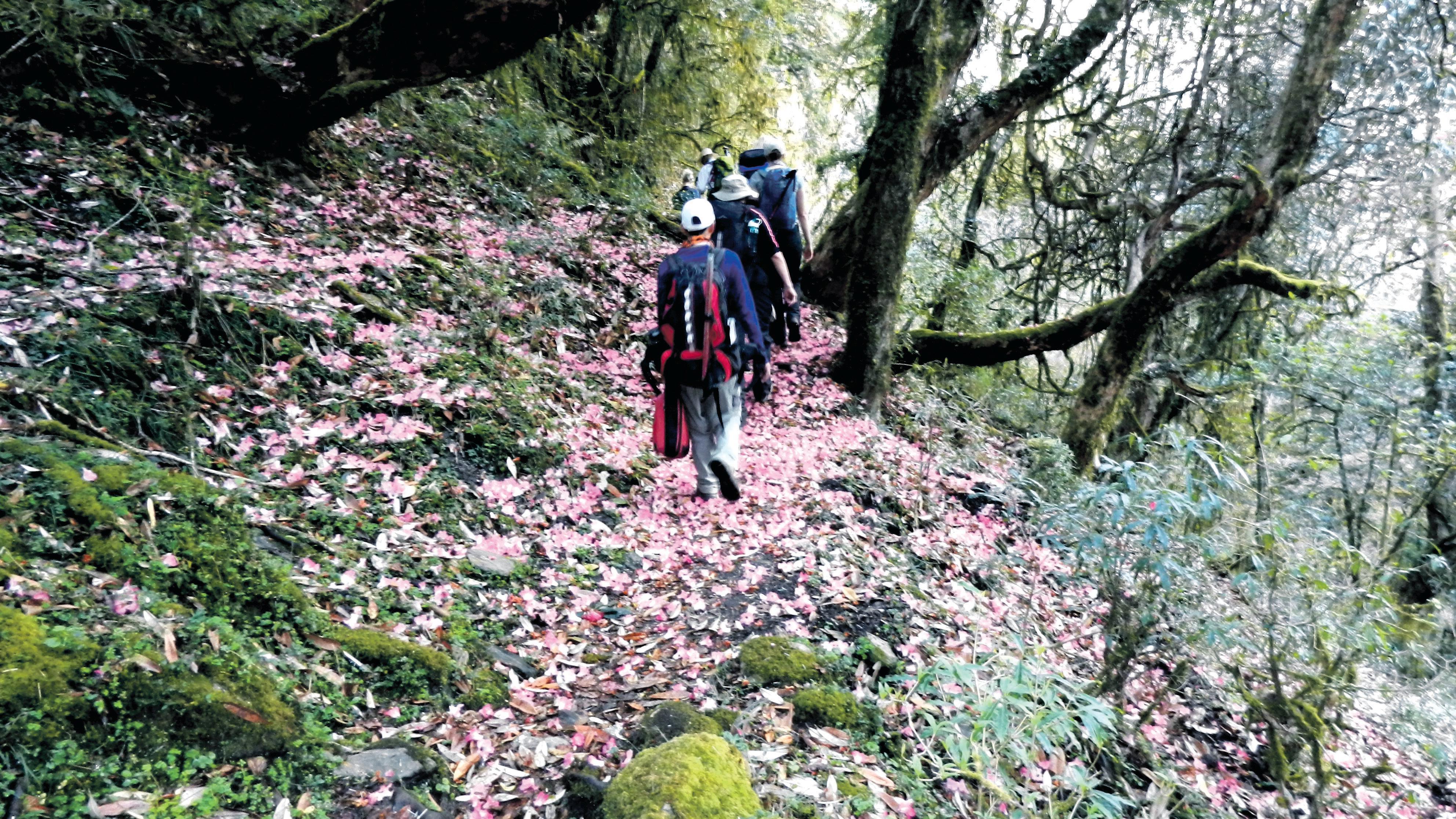
of the mountains around us. The peaks rose up like the design of temples and cathedrals which strive to reach higher into the sky. Truly temples to the Gods! White snow like marble walls glinted as if studded with jewels as the sun moved higher.
2500m is a significant altitude from a medical point of view, as at this height the air starts to get thinner and above this height, no matter what one’s level of fitness, Acute Mountain Sickness (AMS) can strike. I knew I had to simply test myself, take the risk and see what happens, and I was now ready.
On our way to Tadapani however, one of our group had to return to Pokhara due to illness, accompanied by a guide. As we progressed higher, often the only electricity available in the lodges was provided by solar panels. Another consequence of going higher was that prices too became progressively higher!
Our route began to wind through forests of rhododendron trees in full bloom in April, making the Annapurna region


a heavenly delight with entire mountainsides cloaked in hues of pink. We climbed on, soon finding our tracks getting narrower and having to concentrate harder with steep drops of hundreds of metres on one side. Every once in a while, the tinkling of bells warned of approaching mules. They always have priority and, for safety, everyone stands close to the hillside watching them go by carrying cages of poultry, gas cylinders and other supplies. We approached Bayli Kharka at around 3500m, and the air was quite cold. It’s surprising how 6-7 hours of strenuous walking can keep the body warm well into the night. Hot water bottles and cameras too, are placed inside the sleeping bags, as batteries deteriorate rapidly in the cold.
In the lodge before going to bed, we relaxed around a potbellied stove fuelled with wood and dung, with our boots drying out with the heat. Our evening meals were always good, partaken in the light from dim solar lamps or dimmer kerosene lamps.
We had snow, wind, fog, clouds and icy conditions at night, but we could now see Dhaulagiri and the other peaks. The majesty of the mountains is even more awe-inspiring as Dhaulagiri stands massive like a huge fort with lesser peaks around it. We thought this is what we came for, but the truth was that these views were considerably enriched by the experience of the walk that brought us here. We could see streams of Tibetan prayer flags as they fluttered in the breeze, each flutter a prayer of worship seeking divine guidance and strength.
Now we were well above the tree line, with massive gentle looking yaks dotting the landscape. Our route took us down from 3500m to Upper Sisitibung at 3000m, and we could see mighty mountain ranges that go on and on as far as the eye can see.
On our final climbing day, regrettably, the second of our party exhibited symptoms of AMS, and had to be taken lower immediately. We carried on,
and after a hard walk we were at our goal, Khopra Ridge, best described as a shoulder that extends towards the mountain ranges. It was extremely cold: there was snow on the ground as we walked through snow-laden clouds to the edge of the deepest gorge in the world – the Kali Gandaki river gorge, which is all of 7000m from the Dhaulagiri side.
We woke well before sunrise and I could sense the excitement. The weather had cleared, the moon was still up shimmering in a slight haze, the sky was blueblack and the mountains, all of them from the Dhaulagiris to the Annapurnas were in front of us, close to us. It was a magical sight as the sun’s rays touched the tips of the peaks and very slowly started to peel back the darkness to reveal glittering, silver snow. The colour in the sky changed, but at -6 degrees, I could barely hold my camera. We were spellbound, ignoring calls to breakfast, simply looking. My trek notes state ‘…felt something quite moving/spiritual. Maybe it’s
Our route began to wind through forests of rhododendron trees in full bloom in April, and the Annapurna region was a heavenly delight with entire mountainsides cloaked in hues of pink

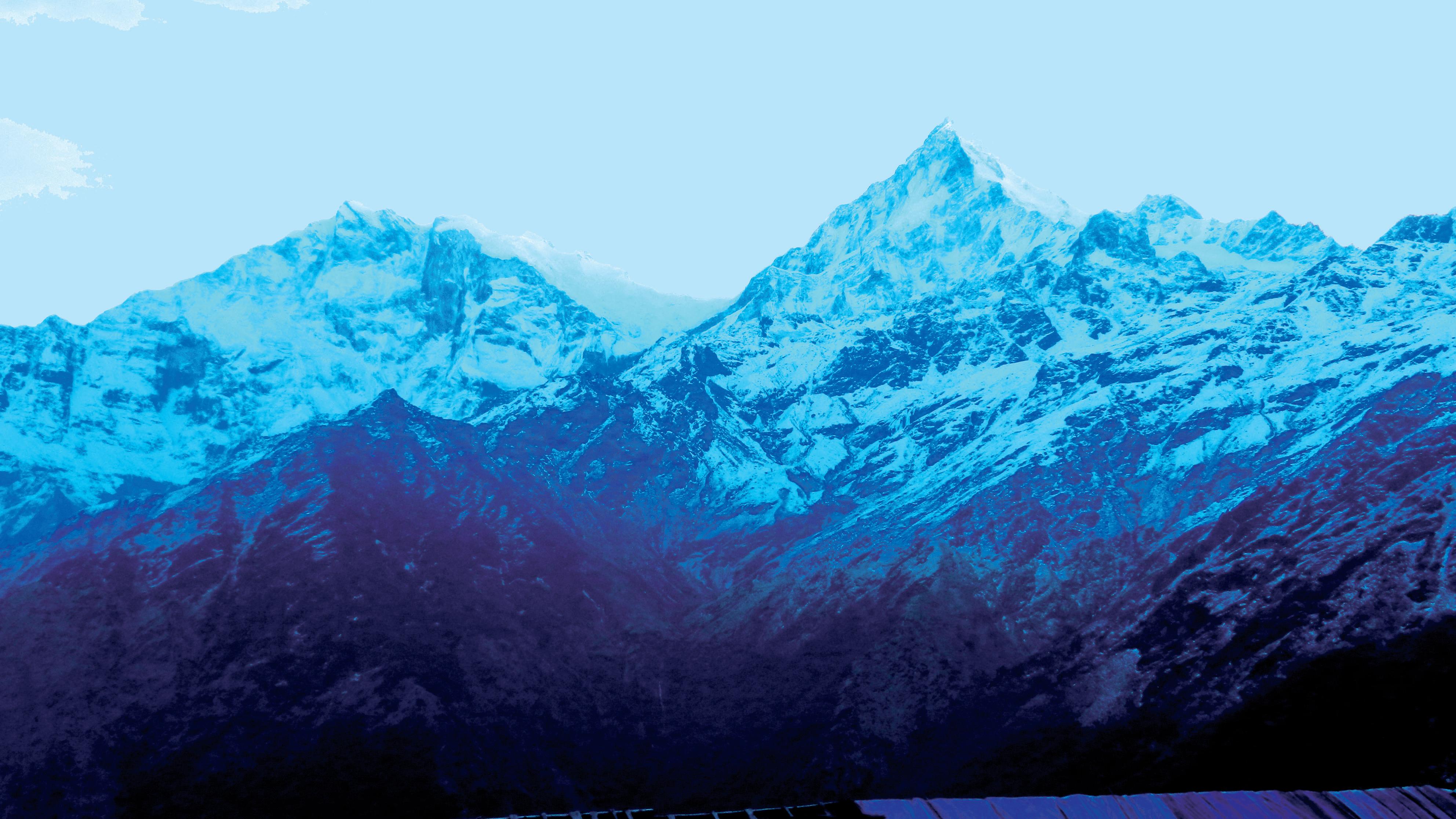
Main pic: Walking on rhododendron petals
Clockwise from top left : Avi resting in an ancient tree trunk
Freezing nights in tents with Dhaulagiri in the distance
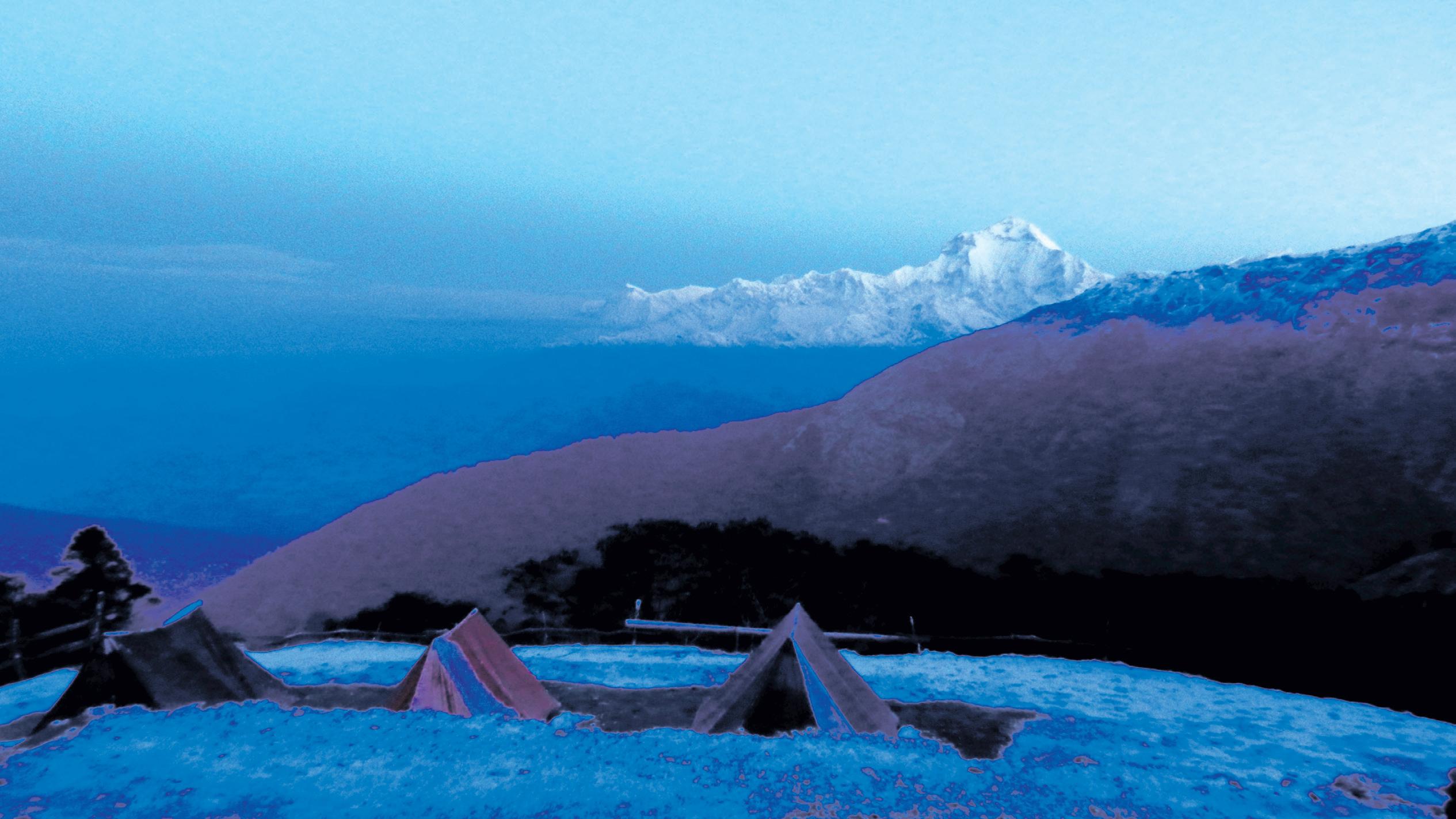

Annapurna 1 8091m and Annapurna South 7219m
The Dhaulagiris from Khopra Ridge
the closeness and stillness of these colossal peaks and mountains. Absolutely freezing!’
We packed all our belongings, readying ourselves for the descent over three days, beginning from Khopra Ridge along a very narrow path frozen over with ice, extremely dangerous with an unlimited drop to one side. The foremost guide smashed the ice with a pickaxe so we could walk in relative safety. We continued our descent through long, steep downhill climbs until we reached our transport waiting to take us back to Pokhara.
We had crossed many suspension bridges, made friends, stored countless memories and had accomplished what we had set out to do. For me it was a great adventure, and possibly the best thing I had ever done. With this experience I have gained a lot: strength of spirit, a quiet confidence, a sense of private satisfaction. But there was also a sense of something left behind, a little bit of myself perhaps, for which I’ll probably go back some day.
Trekking the Annapurna Dhaulagiri mountains may not be everyone’s dream, but the experience is well worth the walk


significantly toward the recent discovery.
The answer to this question tells us that the ‘boson’ identity was not a direct contributor to the recent discovery, however was responsible for a number of significant advances in science and has consequently been recognised and remembered through the naming of the Higgs boson particle. The identity that the term ‘boson’ refers to is the Indian Physicist, Professor Satyendra Nath Bose (1894-1974).
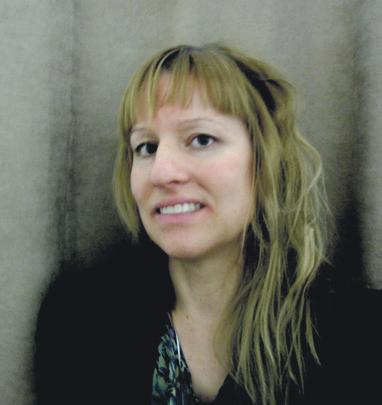
Bose’s connection with Einstein came about in 1924 when he sent a physics paper he had written to Einstein for his opinion. Einstein had been awarded a Nobel Prize in 1921 and was the recipient of many letters and requests for his opinion on all topics relating to science, culture, art, even food! Regardless, Bose’s paper caught Einstein’s attention, and with the scientist’s approval, it was soon after published in the top German physics journal of the time.
which appeared to have mass, only did so because they were in the presence of other Higgs boson particles. It took until 2012 to prove these particles existed, and this was no mean feat.
There has been an enormous amount of worldwide media reporting the recent discovery of the so-called Godparticle, which we now know as the Higgs boson particle. When a physics story tops all headlines in the media, we can be sure that the discovery was exceedingly significant.
From reports, we know that we can attribute the discovery of the Higgs boson particle largely to physicist Peter Higgs, and also to the research team in Switzerland at the European Organisation for Nuclear Research. The discovery is so significant many are talking about a Nobel Prize for Peter Higgs. I heard much about Higgs in the media but I wondered about the other namesake of the Higgs boson particle, ‘boson’. This identity appears very less in the media, but I wondered, had this identity also contributed
Satyendra Nath Bose was born in Kolkata, and was one of seven children. He was an exceptional student, accomplishing top grades in BSc Mathematics and MSc Mixed Mathematics. In his professional career he specialised in the fields of quantum mechanics and mathematical physics. From 1917, Bose taught at the University of Calcutta where he worked in a poorly funded facility, but with an inspiring group of worldclass mathematicians such as CV Raman, and Meghnad Saha. In 1921, Bose left Calcutta University and took up a position as a lecturer at the University of Dhaka, and became the head of the physics department for 25 years. In 1945 he moved to the University of Calcutta, and continued his research and teaching until he retired in 1956. Throughout his career, Bose’s knowledge and understanding of quantum physics was such that he had the opportunity to collaborate and deliberate with physicists of equally high stature, including the renowned Louis de Broglie, Marie Curie and Albert Einstein. It was in particular Bose’s collaboration with Albert Einstein that helped generate some of Bose’s most significant work.
In 1925, Bose took 2 years study leave from Dhaka University and travelled to Paris. There he worked in Madame Curie’s laboratory on X-rays and radiation. The following year, Bose moved to Berlin to meet and work with Einstein. There, he was amongst the likes of Niels Bohr, Werner Heisenberg, Erwin Schrödinger, and many other extraordinary scientific scholars.
Satyendra Nath Bose’s work is of Nobel Prize stature, many believe, as the concepts he derived and defined are today considered physics fundamentals. The three most notable contributions by Bose include 1) Bose statistics, 2) the Bose-Einstein condensation phenomenon, and 3) Bosons, a class of subatomic particle he defined, which includes the particles Gravitons, Photons, Gluons and Higgs bosons.
The Higgs boson, ‘Godparticle’, was only just recently proven to exist, using the world’s largest particle accelerator, a Large Hadron Collider, this, even though Physicist Peter Higgs had postulated the idea way back in 1964. Higgs hypothesized that all subatomic particles were entities with no mass, except for his speculated Higgs boson particle. Higgs believed that any particle
Now having proven such a feat, it still does not mean that the story is complete. Where new discoveries are made, there are always areas that require further explanation. One such case involves the Neutrino particle, believed to be the constituent of dark matter, the thing that makes up most of our universe, (and proudly first detected in India, at the Kolar Gold fields in an underground lab). Neutrinos are supposed to be massless, if you follow the Higgs boson theory. However in some experiments, neutrinos seemingly do have some mass and science is thus yet to prove how this could be the case. Work is being done at the India based Neutrino Observatory (INO) near Madurai in Tamil Nadu to try and answer this question. The discovery of the Higgs boson is a good sign that the research at INO, into atmospheric neutrinos, is on the right track.
So the story continues, and it is great to know that science in India is playing its part, and is at the forefront of research. Indian scholars and research teams are contributing substantially on a worldwide stage, in many fields of science. It’s wonderful to see that an Indian scholar has been honoured in this most recent groundbreaking discovery in physics. Satyendra Nath Bose, a remarkable physicist, his story both fascinating and motivating, and should be told more often. I wait in anticipation for the next discovery, and wonder, will it come out of India?

SN Bose was not a direct contributor to the recent discovery; however he was responsible for a number of significant advances in science and has consequently been recognised and remembered through the naming of the Higgs boson particle
Bose’s work is of Nobel Prize stature, many believe, as the concepts he derived and defined are today considered physics fundamentals

few days ago over drinks at a party on a Saturday evening, there came up for discussion various issues relating to living in the great land of Oz and our adaptive behaviour. Prime among these was the issue of teenage pregnancies and the government’s support through the single parent pension.

Are we still outsiders who are so grateful for being accepted, that questioning anything would make us antisocial, if not antinational?
I brought up the issue as the suburb where I run my business is home to an alarming number of teenage pregnancies, and girls as young as 15 or 16 are open about carrying around a 1 or 2-year-old in their pram more as matter of right, than that of a goof up.
Surprisingly in a room full of Indian Australians, a large number of my friends, even the ones with teenage daughters, were accepting of this social norm, terming it as adapting to the changing times and to the place where we have decided to live. While this can be termed as individual opinions on the matter, what hit me was that, I, one of the few opponents of this norm, was told to adapt to the Australian way of life or go back to India! Go back to India??
This raised an interesting question in my mind. Does questioning any Australian social norm or anything prevalent in the society of my adopted country make me un-Australian enough to be asked to go back to my country of origin? What happens if a Caucasian Australian here for a dozen generations, to cite the example of my neighbour, questions or objects to the same norms? To where should he go back? Are we still outsiders who are so grateful for being accepted, that questioning anything would make us anti-social, if not anti-national?
Pointing out the deficiencies or questioning norms or attitudes in any society only indicates that one wants to make a change, if it can be made. Like living in India and questioning the lack of hygiene on roads, public urinating or corruption, does not make anyone un-Indian; similarly, merely expressing disapproval of a certain social norm cannot be termed as un-Australian. While we express our gratitude for being Australian, every day that we live in this great country, questioning some norms only makes us feel like we belong more, and thus, more Australian.
Having lived in Melbourne for the last 14 years, I have become as Australian as is possible. I am no different to a Caucasian Australian who complains about public transport, unsafe streets at night, high taxes, traffic and layers of local bureaucracy when dealing with the local council. So when I stand in a queue with other Australians and complain on how long it is, why tell me to go back and live in India, where the queues are longer?
Till the time we continue to feel indebted for the opportunity of living in this lucky country, we will never be a part of it in the true sense of belonging
I feel it is now time for us to act more Australian, and accept the good with the bad. If living in the great Oz land is fortunate for us, we need to take the bliss with the small nightmares. There is nothing wrong in calling a spade a spade, and if it does not make a Caucasian less Australian, I am no different.
Till the time we continue to feel indebted for the opportunity of living in this lucky country, we will never be a part of it in the true sense of belonging. I will continue to whine and complain if things go wrong. After all, if living in Australia for 14 years has given me the right to love this country, it has also given me the liberty of free speech without being un-Australian.
Being truly Australian is accepting that everything is not perfect down under, and having the guts to speak about it
letter to the Punjab Chief Minister: “I sent him to your country to study. He was not out on the street to learn how to kill or steal. Whenever you (Badal) are with your own children, look at them and see my son Yannick who is dying here at such a tragically young age.”

Iam a trenchant critic of most of India’s countless television channels. A lot of them are unobjective, insulting, shrill, irresponsible, sensationalist and often unfair.
But, it warmed my heart recently to see them take up the matter of an African student who was mercilessly, viciously and without provocation, beaten up three months ago by some cowardly, drunken young goons in Jalandhar, Punjab. They were obviously well connected, as they managed to roam free for a couple of months after their dastardly deed.
Their victim, Yannick Nihangaza from Burundi was studying Computer Science at Lovely Professional University (yes, it is called that!), supposedly a leading private university with hundreds of overseas students.
The contrast between the sluggish (in) action of the Punjab and/or the Indian government and that of other countries could not be starker.
Two years ago, Indian student Shravan Kumar was a victim of what appeared to be a racially motivated attack. Australia granted him permanent residency status, entitling him to various benefits as a result.
Yannick survived the Burundian genocide and its 13-year civil war, but suffered such a fate in India where he came to study.
He has been in a coma for over 3 months now and not much hope is held for his recovery. As if that was not bad enough, his father Nestor Ntibateganya who flew in from Burundi in April to be by his son’s side, struggled to get help, justice or answers for two whole months from the callous Indian authorities.
Fortunately, the TV channels found out and then all hell broke loose for the perpetrators and prevaricators. Those who had hitherto ignored the issue finally sprung to attention and action:
1. The Police said they had made progress. Surely though, they must have known all along who the alleged culprits were? They were probably covering up as one of them, Romi Uppal, was the son of a Superintendent of Police. They have now made four arrests.
When an Australian teenager fatally stabbed Nitin Garg, an Indian student, the Victorian Supreme Court sentenced the teenager to 13 years in jail.
When Anuj Bidve was murdered in the United Kingdom and his family complained about delays in the processing of the case, the police sent two senior officers all the way to India to brief the relatives.
Punjab, on the other hand, took little action to address Yannick Nihangaza’s case, and the Indian public paid scant attention. It is unlikely that the reaction would have been so blasé had this happened to an Indian in Australia or in Burundi.

We don’t know yet if it was a racially motivated attack, but at the very least there should have been some sensitivity, urgency and compassion displayed by all concerned, and the wheels of justice should have been set in motion before the TV channels forced the State government and the Punjab Police to act.
If Nihangaza never wakes up, it will be hypocritical for India to claim that its honour has been besmirched the next time something like this happens to an Indian citizen overseas.
2. The Punjab Chief Minister Prakash Singh Badal at last found the time and the will to do something - after paying little heed to the matter for two months. He sent a top bureaucrat with Rs 5 lakhs for Yannick’s huge medical bills.
3. Even Burundi’s Ambassador to India, Rubuka Aloys (where was he for 2 months and what did he do?), publicly jumped into the fray. He went to India’s Ministry of External Affairs and requested assistance for Mr Ntibateganya to take his son home. What an unspeakable tragedy! Yannick survived the Burundian genocide and its 13-year civil war, but suffered such a fate in India where he came to study. His father Nestor made this point in his
The case betrays a mindset that tends only to the concerns of the rich and the powerful. It should have been a national outrage much sooner, and there needs to be serious public introspection on our own racist attitudes. Zero tolerance of xenophobia is imperative. It is hard to believe Yannick’s race and African origin were not factors in the tardy response of the system.
If Nihangaza never wakes up, it will be hypocritical for India to claim that its honour has been besmirched the next time something like this happens to an Indian citizen overseas.
Indians become very touchy and indignant when they hear about a person being attacked for being Indian or facing discrimination overseas because of skin colour or religion.
Should we not be as quick to respond when a guest in our motherland is treated with such shocking apathy?

The shocking attack on a young African student now in peril questions India’s antipathy towards race intolerance within its own borders
HAK MEHTA

his knowledge and sagacity.
Pranab Mukherjee’s position in the Congress-led United Progressive Alliance party was indisputable - he had headed 83 of the 183 ministerial decisionmaking groups, known as Group of Ministers. He has, over a period of 25 years, presided over cabinet meetings when the prime minister has been away. But the top post in the government has eluded him because of what some feel is the Gandhi family’s wariness. This goes back to the time after Indira Gandhi’s assassination in 1984 when Mukherjee, a stickler for rules, is supposed to have pointed out to her son Rajiv Gandhi that convention demanded that the second in command be the caretaker prime minister till the Congress elected a new leader.
variety of portfolios in successive governments. He first headed the finance ministry in 1982, and holds the distinction of having presented budgets in both, the preliberalisation and post-liberalisation era.
There was a time when Mukherjee was derisively called a “rootless wanderer” by some of his party colleagues, as he had never won a Lok Sabha election till 2004. But when he won from the Jangipur Lok Sabha constituency in West Bengal in 2004, he literally wept with joy. “For me this is a dream come true, a dream I have cherished and nourished all my life,” he had said.
From the time he first became minister of state for revenue and banking under Indira Gandhi in 1973, Mukherjee has held a variety of portfolios in successive governments
Pranab Mukherjee was sworn in as India’s 13th President in a historic ceremony on July 23, 2012.
The oath of office was administered by Chief Justice of India SH Kapadia inside the central hall of parliament in Parliament House, New Delhi, where Mukherjee, 76, the country’s first citizen, swore to rise above partisan politics in the conduct of his high office.
The ceremony saw the president’s mounted bodyguards, resplendent in their livery of white and with dark turbans to match, give the national salute and 1,000 members of the three services lined along Raisina Hill road to give the Hazar Salam or thousand salute to the president - the supreme commander of the armed forces.
Mukherjee, attired in a black sherwani and churidar looked solemn throughout the ceremony, and broke into a smile only when waving to the media from a horsedriven presidential buggy after he inspected his first guard of honour as president in an open jeep.
In his first speech as president, Mukherjee, who has a five-year term, said his high office demands that he rise “above personal or partisan interests in the service of the national good”.
He said for India to progress and for “development to be real, the poorest of our land must feel that they are part of the narrative of rising India”.
In a brief speech marked by high prose, Mukherjee said, “I have seen vast, perhaps unbelievable, changes during the journey that has brought me from the flicker of a lamp in a small Bengal village to the chandeliers of Delhi”.
In his speech, Mukherjee dwelt
on hunger and poverty, saying “there is no humiliation more abusive than hunger”.
He also dwelt on terrorism, terming it the fourth world war with the Cold War being the third and stressed on education as the “alchemy that can bring India its next golden age”.
He touched on corruption, terming it as an evil “that can depress the nation’s mood and sap its progress”.
Mukherjee will move into the 340-room Rashtrapati Bhavan from his official bungalow on Talkatora Road. He will travel henceforth in a long black bombproof official Mercedes limousine - a far cry from the Ambassador car in which he used to travel.
With four decades of politics to back him, Pranab Mukherjee won the July 19 presidential poll as the ruling United Progressive Alliance (UPA) candidate with a clear margin, bagging 527 to opposition-backed PA Sangma’s 206, while 15 votes were declared invalid. Mukherjee is among a handful of Indian politicians to have held three key ministries of finance, defence and external affairs through his 40 years tenure as a politician. He was a key member of the UPA and was chief troubleshooter for the coalition because of his excellent rapport with leaders of all political parties. Mukherjee headed almost all ministerial panels with his vast fund of knowledge. He commands tremendous respect across all factions of politics, and although Congress colleagues whisper that he is a Chanakya, ancient India’s fabled political conniver, Mukherjee is largely well liked for

That was interpreted as a sign of his vaulting ambition. Mukherjee has remained out of contention for the prime minister’s job ever since.
Pranabda, as the Bengali bhadralok is adoringly addressed, is a persuasive orator and a formidable negotiator, and is considered a walking encyclopaedia on virtually everything related to politics and governance - all due to his photographic memory of the fine print and negotiation details - which makes it difficult for any bureaucrat to hoodwink or trip him.
A trusted and able strategist, Mukherjee remains down to earth, lives modestly, and has admitted many a time that he cannot speak polished English. For one who is supremely self-confident, he can be humble.
But he has a temper - and has more than once apologised to MPs for raising his voice inside and outside parliament.
Born into a middle-class family in Birbhum district of West Bengal in December 1935, Mukherjee’s father, Kamada Kinkar Mukherjee, was a Congress politician. Politics came naturally to the young man. After degrees in history, political science and law, Mukherjee gave up his two initial loves - teaching and journalism - to take to politics.
His parliamentary career began in 1969 when his home state West Bengal was in ferment, with Naxalites (Maoists) on the rampage. He was repeatedly nominated to the Rajya Sabha until 2004 when he entered the Lok Sabha.
From the time he first became minister of state for revenue and banking under Indira Gandhi in 1973, Mukherjee has held a
“Pranab showed leadership even as a teenager, and he started honing his skills as a leader and orator since his school days,” recalls Mihir Chattopadhyay, Mukherjee’s classmate in Kirnahar Shib Chandra High School in West Bengal’s Birbhum district and his close friend till graduation. The 76-year-old, who has now retired as a teacher in his alma mater, recollected how in 1949 Mukherjee impressed and convinced a minister to renovate the school building. In a poignant moment, Chattopadhyay also recalled that Mukherjee used to play as a defender in football during his school days.
A devoted family man, Mukherjee is married to Surva, a Rabindra Sangeet singer of repute. The couple have a son and a daughter. Daughter Sharmistha is a kathak dancer. Son Abhijit, following his father’s footsteps, is a member of the West Bengal assembly. A deeply religious man and confessed workaholic, Mukherjee has not taken a holiday since the last 20 years except a trip to his village every year for Durga Puja, when he dons a priest’s robe and performs prayers for four days.
Bengalis across the nation and globe absolutely exploded with joy as Pranab Mukherjee became the first Bengali to hold the highest office in the land. While Kolkata’s elite celebrated with a tea party at a posh five-star hotel, the common man simply took to processions of joy along the city’s streets as people smeared each other with gulal, danced and burst crackers. It’s not hard to figure out who had the better time.
At the state Congress headquarters Bidhan Bhavan, Bengal’s sweet delicacy sandesh was offered to all and sundry,
while motichoor laddoos, malai kulhars and the evergreen sandesh were distributed at Mukherjee’s residence on Talkatora Road in central Delhi. For the savouryinclined, khasta kachoris, dahi bhallas and idli sambhar were also lavishly distributed.
As President-elect, Pranab Mukherjee thanked the people for his election to India’s highest office and said he was moved by their overwhelming support and affection as he toured the country to garner support in his run for Presidency.
“I have deep gratitude and appreciation for the people of this great country for conferring this distinction of electing me to the high office,” Mukherjee stated after being declared President-elect.
“It would now be my responsibility to defend and protect the Constitution as president...I would try to justify in modest way to be trustworthy of my people,” he added.
He also thanked all sections of society, the political parties and parliamentarians for the support during his more than four decades of public life.
“I received much more than I gave them,” he said.
From Nobel laureate Amartya Sen, to former President Abdul Kalam and various heads of state across the globe, congratulations have poured in as Mukherjee takes on this new mantle of responsibility as the leading citizen of the world’s greatest democracy. As Pranab Mukherjee stands at the threshold of a nation on the ascent, we hope he ushers in and supports a time of change and progress for the betterment of its people.
From IAns reports


Those savvy with internet-based popular culture will likely be aware of the comedic blog. ‘Stuff white people like’. Some may have heard of ‘inspired-by’ websites such as the Australian-based ‘Things Bogans like’. However the two ‘Stuff desis/Indians like’ blogs (yes, they actually exist!) seem to be stagnating. So it is in this spirit that I thought it appropriate to compose my own tongue-incheek, completely un-factual list, based on my cultural observations over the past year.
‘Breaking news: Maoist forces attack bus’. ‘Breaking news: SRK blockbuster releases today’. Can you see the difference? An Indian television news director can – one is an urgent, headline-grabbing story, the other is about a terrorist campaign in the east of the country. The masses lap up the latest and ‘breakest’ breaking news about the lives of celebrities.
‘Just in: Priyanka Chopra dons a baseball cap!’
‘Breaking news: Who cares?’
Ever wondered what would happen if an NRI didn’t visit all of their relatives in a visit back to Mumbai? “This is not done, yaar!”, I’m told with a disapproving tone. Apparently I’ll have to continue wondering, as it is never done! I did consider taking my parents on a local train when they visited, but was also told “This is not done”. I began to wonder what is done! “Marrying a foreigner?” “Why not?” I was told enthusiastically. “Like Sania Mirza did?” “Arey, this is not done, yaar…”
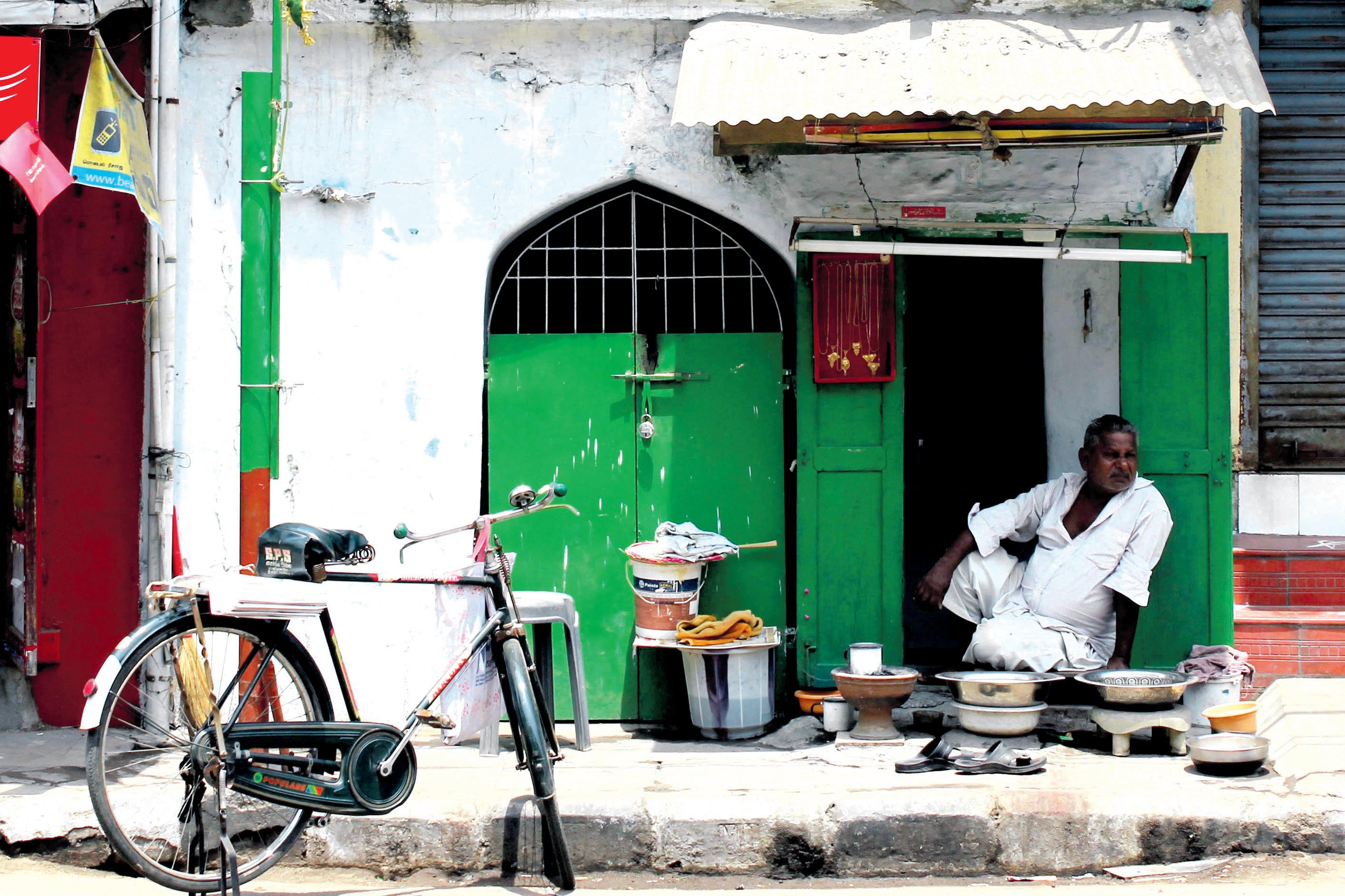
Even the proudest Indians see English as a mark of status. In India, it’s better to have poor grasp on English than to have never grasped at all. A friend’s mother could barely stand the shame when her husband admitted that his English wasn’t that good – despite the fact he speaks fluent German, Spanish and Japanese. However what really intrigues me is the notion

that everything must happen in isolation. “I’m vegetarian only”; after all, one must distinguish oneself from all those carnivorous vegetarians who aren’t only vegetarian.
4. Wearing shirts
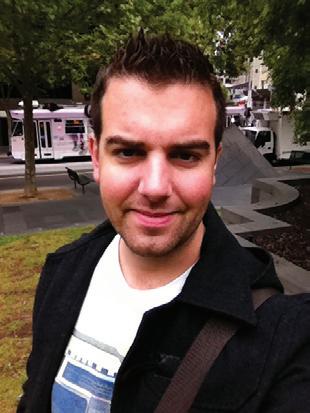
Indian men love collared shirts. They’ll wear them to parties, to the office, to the temple, around the house, to the beach, on holidays, while flying, while driving, while shopping, to weddings and to funerals. I know someone who wears a collared shirt to bed. I foolishly wore a non-collared shirt to a casual day at work, and was told, “This is not done, yaar…”
5. Talking about prices
Indians have a mind-blowing talent to maintain a lengthy conversation about the cost of things. Long after the car has been filled up, months after the house has been furnished, decades after the wedding has taken place, they’ll still possess an encyclopaedic memory of the itemised bill. How much did this newspaper cost? Free? Ok, but how much did it cost you to get to the newsagent?
6. Mobile phones
At last count, there were 919 million mobile phones in use in India. I never cease to be amazed by the catalogue-like knowledge of Indians about all the phones on the market. I was once told that my phone would cost (see point 5) around Rs. 55,000 here, but about Rs. 45,000 in the US, unless I got the 16GB version. The guy was a rickshaw-driver.
7. Verbal distinction
Have you ever felt the need to stand out from the crowd by talking more profusely, or more elaborately than others? In India, this is a national sport. A sentence’s impact is proportionate to the number of times it is repeated. A child is going outside to play? Don’t just warn him –do it 17 times, by several family members – that way, he’ll get the picture. “Don’t fall off the cliff!” Seems like a redundant statement? Say it anyway! And don’t forget the man who is dismissive at the dhabawallah in rural Bihar, because they don’t serve espresso. “When I went to America…” he scoffs, making sure to say it loud enough that everyone else around him knows.

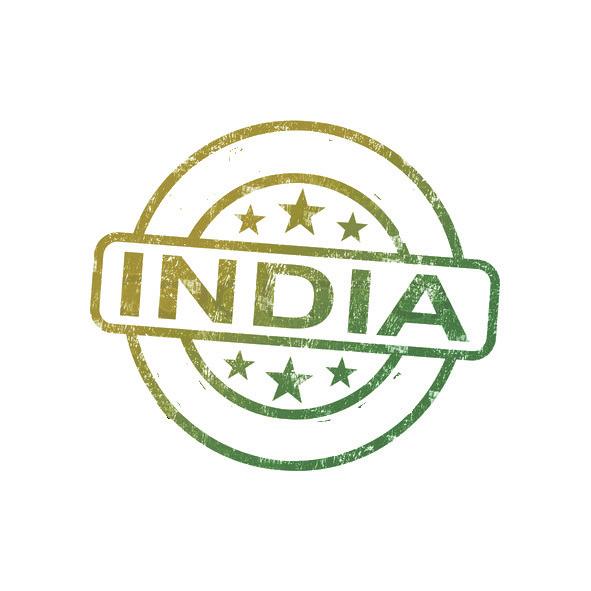
The things that Indians love: a joy - and sometimes a challenge - to discover
A wedding is the second proudest day of an Indian couple’s life. The proudest day is when they show the 6-hour long wedding video to every acquaintance who visits their home for years to come… until they have a child who learns how to play a concerto. Or who has learnt Odisha’s traditional dance. Or can recite the Mahabharata from memory. As the starry-eyed offspring begins the 17,834th shloka, and his parents beam with pride, the guests have just noticed the clock strike 2am and ask politely for another chai

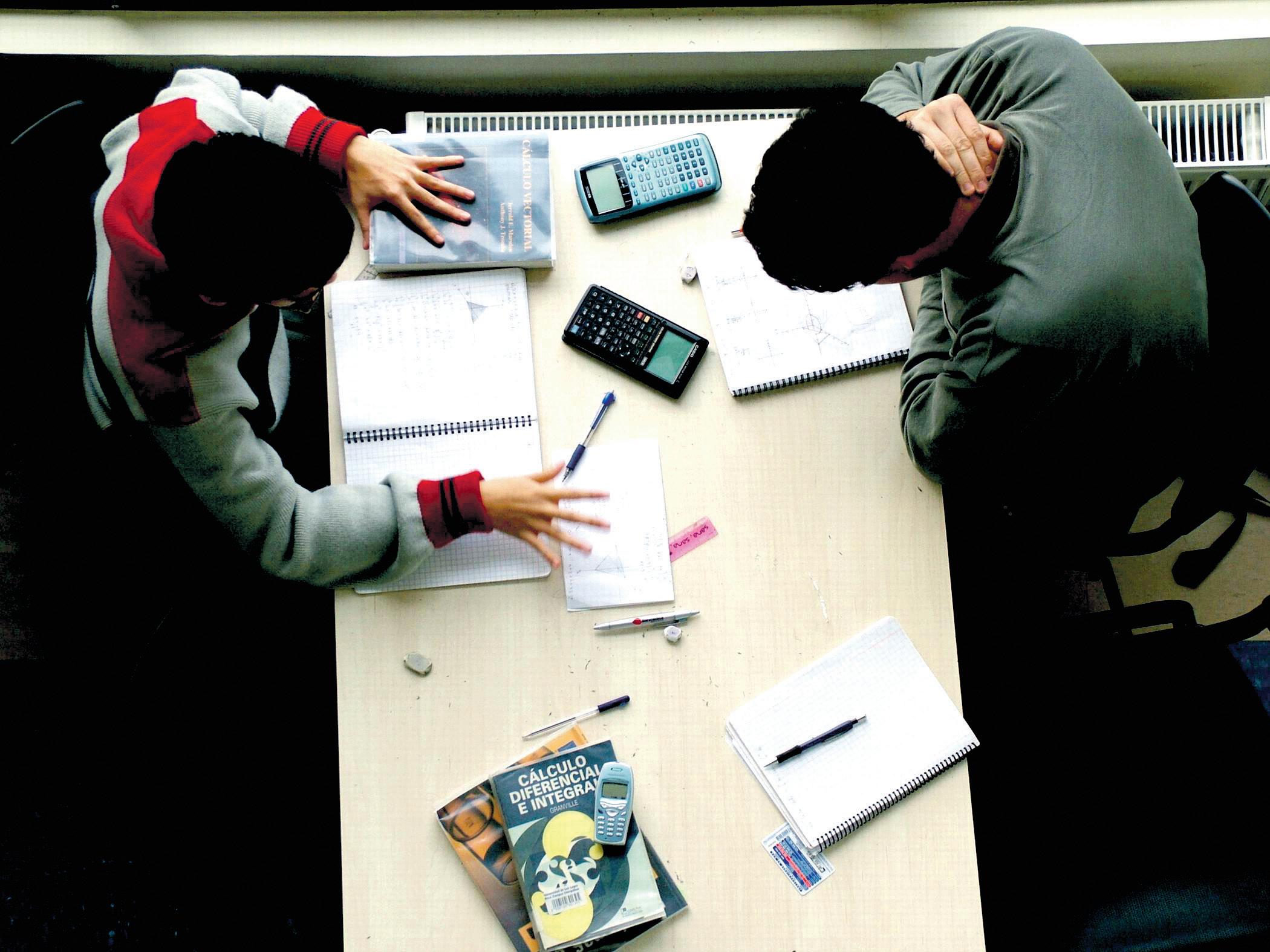

meals, they keep it in the fridge for a rainy day.

Medical science is yet to determine exactly what occurs in the Indian male’s brain at the age of 55. What is clear, however, is that beyond this age, an Indian man feels qualified to express his philosophical musings to anyone who will listen. Sometimes these slow and deliberate monologues are insightful; often they are statements of common sense. The Indian culture of respect for elders means those around him will simply say, “Wah!”. And dissenters like myself are told, “This is not done, yaar”. If you have any other ideas, please write to us at info@indianlink.com.au
Remember this is meant to be a fun, not nasty, look at Indian idiosyncrasies.
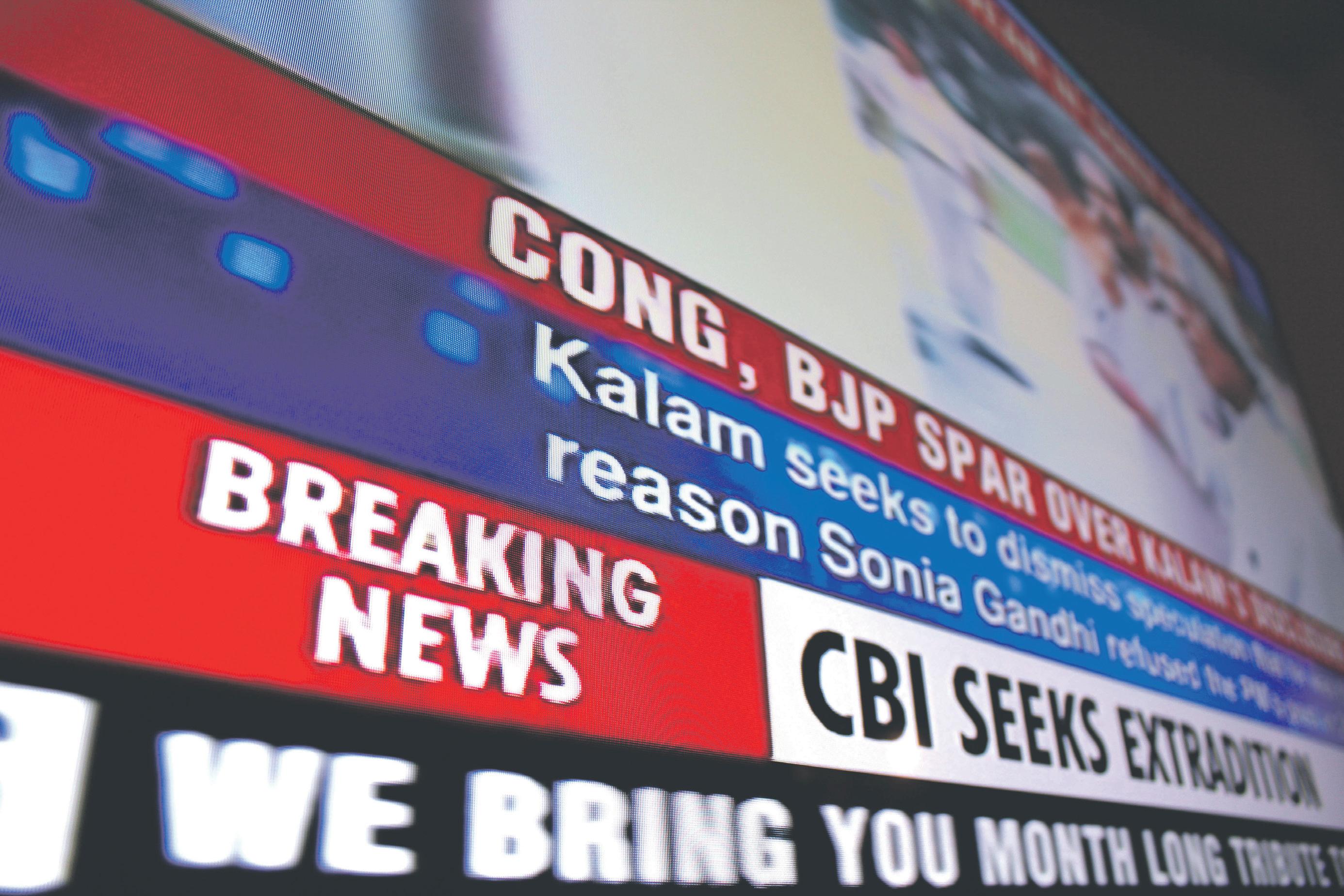
Beyond the age of 55, an Indian man feels qualified to express his philosophical musings to anyone who will listen.
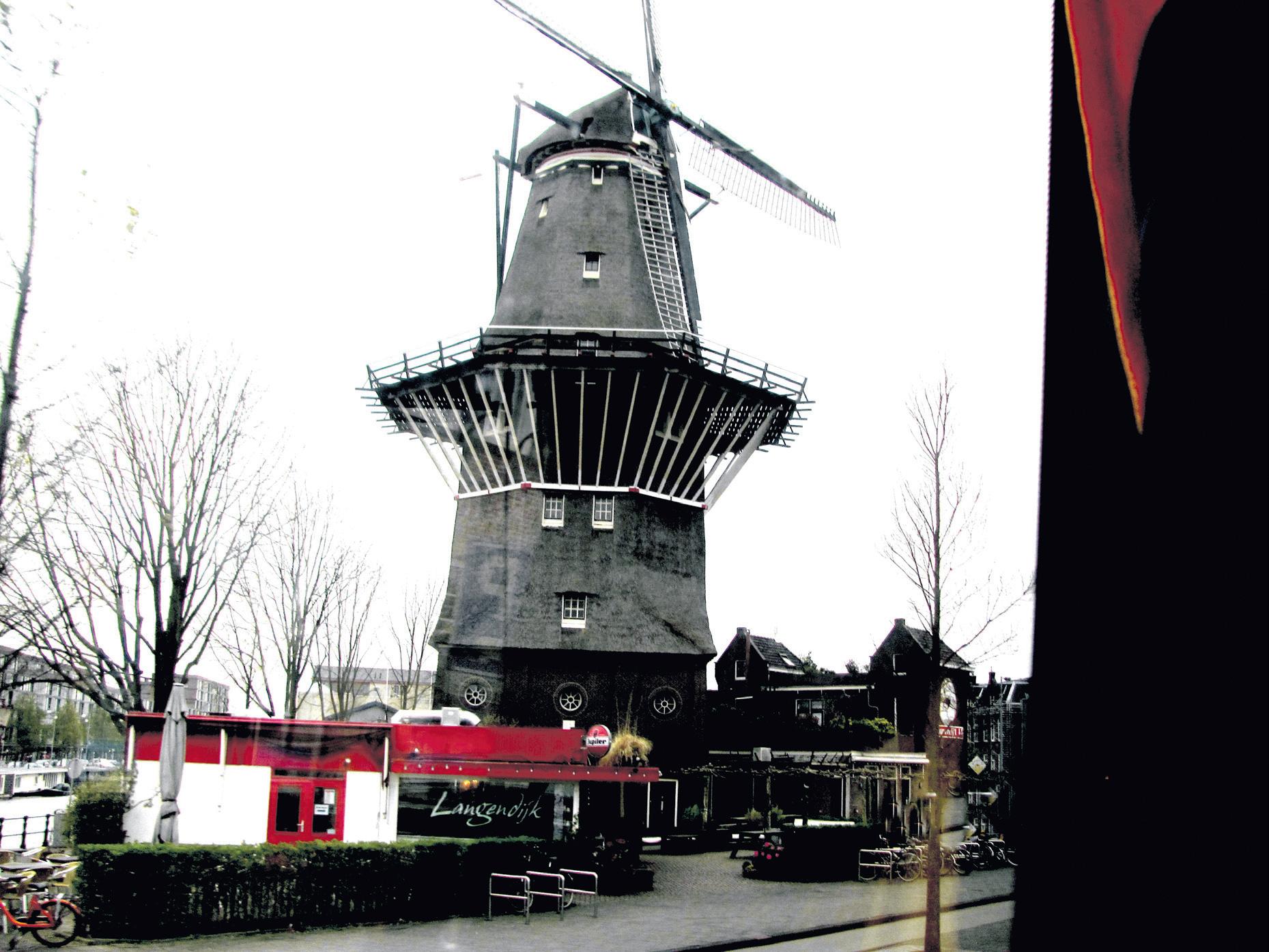
Continuing our trip
and boarded the luxury coach with Carine, our English-speaking French guide who detailed the history behind passing buildings, factories and monuments. We finally hit the highway, which like those at home, are silk-work, with slow motorists on German Autobahns known to be fined for blocking traffic if driving less than 140 mph. Motorists necessarily behave on Dutch roads, for unlike Australia, the highways are loaded with traffic cameras. We stopped at a roadside eatery in a FranceBelgium border town, and had to pay half a Euro to use the toilet, a privately run venture. And no doubt, a successful one as tourism, after food and wine, is a prime European industry.
Polite English-speaking Belgian staff quite accepted my broken French. But at Brussels, the first sight we noticed was an immigrant blatantly irrigating a city wall in public! A short stroll on cobblestones brought us to the Town Centre where buildings with fanciful architecture were all painted in gold. Here, there was an Indian garments shop as well! A local film company shot a scene at a street corner, close to the local highlight which all tourists are advised to visit, is a small statue of a little boy micturating. We endured a long queue to buy those worldrenowned Belgian chocolates.
The primary mode of transportation in Belgium is the humble bicycle. We were cautioned to keep off bicycle paths conspicuous in red cement, for the law is that if a cyclist hits you or a car, he is never at fault. Even the Queen - reportedly downto-earth, uninhibitedly bicycles everywhere. Just as we have car parks, Brussels has multi-level bicycle parks. Millions of pre-loved ‘orphan’ bicycles are dumped when kaput, even in waterways, which the authorities remove and recycle. En route again, we finally began to see windmills and we knew that the Netherlands was nigh.
Amadeus Brilliant, our beautiful, locally-built boat was moored at Veemkade, on the river Rhine. 150 metres long, the Brilliant accommodates 150 guests, 25 staff, 3000 litres of diesel and 5000
litres of fresh water. This was the Brilliant’s first charter, much to our good fortune. Friendly Nevena from Romania, our rather wellinformed and eloquent Cruise Director welcomed us and at noon, the crew greeted guests over complimentary drinks at the tastefully decorated Panorama Bar on the third deck. Rose and I were the only coloured Indian passengers, and we were flattered by the attention from other guests who wanted to sit, chat or just say hello to us. We were soon on first-name terms and except for a single Kiwi traveller, we were all Aussies seniors.
The dress code was smart casual in the Dining Hall, on the second deck and while the conservatives amongst us changed dresses every evening, for every excursion and at every meal, those more relaxed were happy to stick to a single T-shirt, shorts and sandals when enduring 8c in Paris or 28c in Braaatislava!
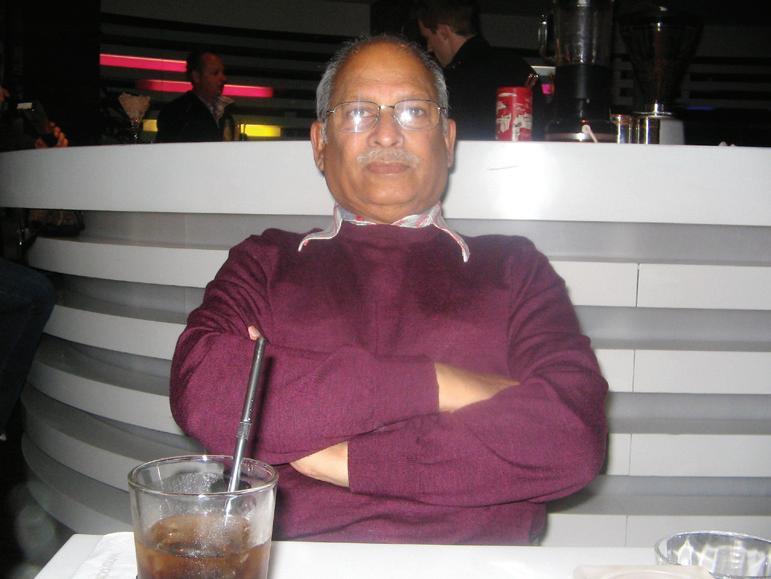
Food was an elaborate affair. A dozen cheeses were served for breakfast, with Dutch Blue and Edam to kill for. Fanciful egg preparations were on offer, and I demonstrated my prowess at creating a spicy Indian masala omelette with green chillies, to the accompaniment of ‘ooohs’ and ‘aaahs’. A variety of bread options like Braun Brot, white, Viennese, wholemeal, fruit buns, croissants, crèpes, etc., were baked fresh in the kitchen. Various sausages and processed meats were served, there was always a choice of vegetarian food on the menu. Good wine from German vineyards flowed to one’s desire, served with main meals, the menu of which was rich, sumptuous and never repeated. I specially remember wild boar stew, a delicacy in any language, and white asparagus. Pre-dinner drinks were at the Panorama Bar, with pianist Karol and crooner Roman for entertainment.
The program for the next day was detailed by Nevana, while the crew would spruce up our cabins while we dined. The internet was available, €3/hour in a lounge room at one with newspapers, and even printouts of Australian news. At 6:30 am, Nora would conduct light exercises. Early breakfast was served, as well as light suppers until 11:30 pm for the night owls. Post dinner each night we were entertained with a different presentation, by the crew, guests or invited artists. Following that, we would sip our drinks and enjoy floating under the stars until the wee hours of the morning. Speciality shops displayed exclusive ware and jewellery, and arranged
beauty sessions.
After our first dinner on the Brilliant, Nevena escorted us on a late night tour of the worldfamous, never asleep Red Light District not far away. Hundreds of frugally-dressed local beauties behind glass windows, on various floors and under sensuous lights blew kisses at us, and displayed their wares with pride, for they live in a freer world than ours.
Called the Venice of West Europe, the UNESCO-protected heritage city of Amsterdam is built on water, and along with Hong Kong, has recently been awarded the status of ‘Most Liveable City’ in the world. All waterfront and city property boasts of the most expensive real estate in the world. The slimmest house we saw was only four metres wide, and some twenty meters deep, with five floors. Houseboats are austere, and holiday makers find it cheaper to rent one of these for months, rather than live in a hotel.
Bicycles are religiously a priority; we saw octagonal bicycles that ride eight, each rider with his
own pedal that is propelled in the ahead-mode, while only the person steering manoeuvres the direction with a steering wheel and the movement with brakes. We were given rides in boats that also serve as taxis, through a highly intricate canal system in freezing weather. As we lunched on the Brilliant heading for Cologne in Germany, citadels, monasteries, churches, monuments and vineyards, all centuries old and adorning riverbeds, passed us by. Images that are rare and of interest, were easy to shoot thanks to digital photography.
Europe lacks the Australia-like expanse we enjoy. Parking was a huge problem in every city we toured, but clothing, leather goods, transportation, food, were all cheaper. An espresso that could cost up to $4 in Melbourne, cost just €1 in Paris. I was short on medication, and at the pharmacy, without a question and/or a doctor’s script, I paid the full price of €4, when in Australia, the same would have cost $50+!
My travels continue....
Called the Venice of West Europe, the UNESCO-protected heritage city of Amsterdam is built on water, and along with Hong Kong, has recently been awarded the status of ‘Most Liveable City’ in the world
Parking was a huge problem in every city we toured, but clothing, leather goods, transportation, food, were all cheaper






The senior scene in Melbourne is enriched by some very special people. Each one of them has their own story, which I would like to share with you, special moments of hardship, challenges, valour and determination which we should all learn from and applaud.
Kanwar Yaduveer Singh was born in the royal family of Geejgarh in Rajasthan. Originally from Pokhran, the Maharaja of Jaipur bestowed Geejgarh to Yaduveer Singh’s forefathers six generations ago, which was done on the basis of service to the State, or for valour. The present Thakur of Pokaran is Yaduveer Singh’s grandson.
The royal Geejgarh family was BPI (British Protected Persons) and in 1946, ‘Yadu’, as Kanwar Yaduveer Singh is affectionately known by his many friends, joined his brother studying Law in London, to begin his own studies in Engineering at University of London. When on vacation in Switzerland, Yadu’s brother and wife met an English family, whom they invited back in London, to an elaborate dinner at Veeraswamy, a famous London restaurant renowned for their classic Indian food. At that dinner Yadu met Daphne, the English family’s beautiful daughter. After four years of courtship, Yadu and Daphne tied the knot.
Thakur Kushal Singh, Yadu’s very traditional father heard the news, blew his top and refused to meet and bless the young couple. Like British monarchy, the royals of India observed a primogeniture tradition, which means the eldest son inherits the title, and the Jagir and the younger sons get whatever the father decides to give them. Yadu’s father chose to deny him a share of the estate; however, Yadu’s mother gave him a part of her’s.
Daphne and Yadu were gifted a son and a daughter. Yadu was in England when his father died, but sadly, Daphne’s health began to deteriorate soon after and she finally passed away. But when Yadu celebrated his 75th birthday with friends, he received a call from his daughter who lives in China with her husband. Imagine his surprise and delight when his daughter walked into the restaurant, while still talking to her father on the phone. A surprise of a lifetime! Kanwar Yaduveer
Singh is now Thakur Yaduveer Singh, a title he inherited on his father’s demise.
Philosopher, linguist and a treasure of Melbourne’s Indian community, Sardar Bharpur Singh Mokal is a survivor of Jallianwala Bagh massacre of 1919. Blessed to attain his ninety-seventh year in October 2012, Singh relates many sordid tales and eyewitness accounts of the Independence movement of 1920 against the British raj, of India during WWI and WWII, and postIndependence India as well. The atrocities he encountered left emotional scars on his psyche.
Singh’s primary grief is that while ordinary Indians suffered in the past and continue to do so today, most politicians remain self-serving. This led him towards philosophy and therefore, towards understanding inner peace. In 1985 Singh joined his son in Australia, which he now calls home while continuing with his endeavours to spread the universal message of love and peace. A member of many Indian senior citizens associations and a Life Member of ISCA (Indian Senior Citizens Association), Singh has played
a pivotal part in the creation of various Indian Seniors Associations, and also in the inception of the latest Indian Seniors Association in West Melbourne.
Thanks to a daily physical exercise routine, Singh is fit and alert. At his age he drives, reads regularly, writes articles for several newsletters, as well as motivates seniors to practice self-discipline and positively utilise their time and skills for their physical and mental health. He is computer literate, and enjoys mobile phones, iPods and MP3 players etc., while most other seniors lag behind in technology.
The secret that governs Singh’s healthy mind and body is that he follows laws God dictated to run the universe, as well as regulations that society designed to serve
communities. A true role model and a religious person, Bharpur Singh believes that to do good, one has to be good himself. He is one of only two seniors whose feet I feel fortunate to bend down and touch in reverence.
Imagine being stranded on an island with no extended family or friends. It is difficult, isn’t it? That is what Parag Mody’s parents felt when they arrived in Australia in late 1993, with not much of an Indian community around and the least support available. After deep thought and talking to his friends, at the age of just 32, Parag decided to do something to help his parents enjoy their stay here, feel much more comfortable with seniors of their own age and make new friends of their own. Parag started the first Indian Senior Citizen’s Association, initially called ‘Forum’ in Melbourne.
After more than a hundred calls, extensive publicity in media (SBS and general newspapers), and large amounts of leaflets at various Indian shops, the first meeting of the Forum was held on April 15, 1995. More than 20 seniors attended the inaugural function and at its end, each of them had a happy smile on their faces. Parag found their response tremendously encouraging and he organised more meetings and programmes for the Association. Over the years, thanks to the efforts of past and present Presidents and Working Committees, this association has now grown to more than 300 enthusiastic members who participate in various activities including singing, dancing, picnic, information and learning sessions. After all, one likes a place because of its people, more than anything else. Making it easy for our seniors to settle in a new country is the least we can do for them, says Parag. After all, he feels, we are all going to be seniors one day.
Unique opportunity to be part of a well recognised and respected brand. Established business with good loan book, client database and sizeable trail income to get you started. Full training, support and leads provided. Relationship building skills essential.



Saif Chopra’s trader ancestors migrated to Zanzibar from Mandvi, a town in Gujarat, around 1865. Gujarati was his mother tongue, and Swahili was his adopted one, but Saif indulged in Urdu and Hindi to enjoy the pleasure of Indian movies.
A government scholarship enabled Saif to study medicine in Karachi and Lahore, where he was introduced to Urdu. His
already strong interest in Indian music found expression in India, and Saif polished his passion by playing the piano, harmonium and piano accordion in various social functions.
Saif’s medical career began in a remote town in Zanzibar: no electricity, no running water, donkey express to get around. He performed many intricate emergency surgeries including opening up of windpipes, etc., under hurricane lamps. He recounts that to examine a decaying body in a remote location, the local constabulary carried Saif over their shoulders in the dark, for the terrain was rough and dangerous. During the Zanzibar revolution, Saif was assigned the humiliating job of a Prison Officer, yet continued to publish papers in medical journals. Deteriorating endemic conditions forced him to move to Kenya, where he lectured in medical schools. 1971, Saif was awarded a World Health Organisation Travel Fellowship, under which he researched migrants-related cancer and epidemiology, which was presented in many world hospitals, including the Tata Cancer Hospital in Mumbai.
As a postgraduate from London, Saif met Fatima who had studied midwifery in Cambridge, they married and had their honeymoon in Spain. In 1975, Saif moved to Australia as Specialist Pathologist. After gaining experience of treating aboriginal people in Alice Springs, he was transferred to Bendigo where exposure to the large Indian community offered him an opportunity to entertain them through musical evenings locally and in Melbourne. Saif writes his own melodies, which both he and Fatima sing on lyrics he composes himself.
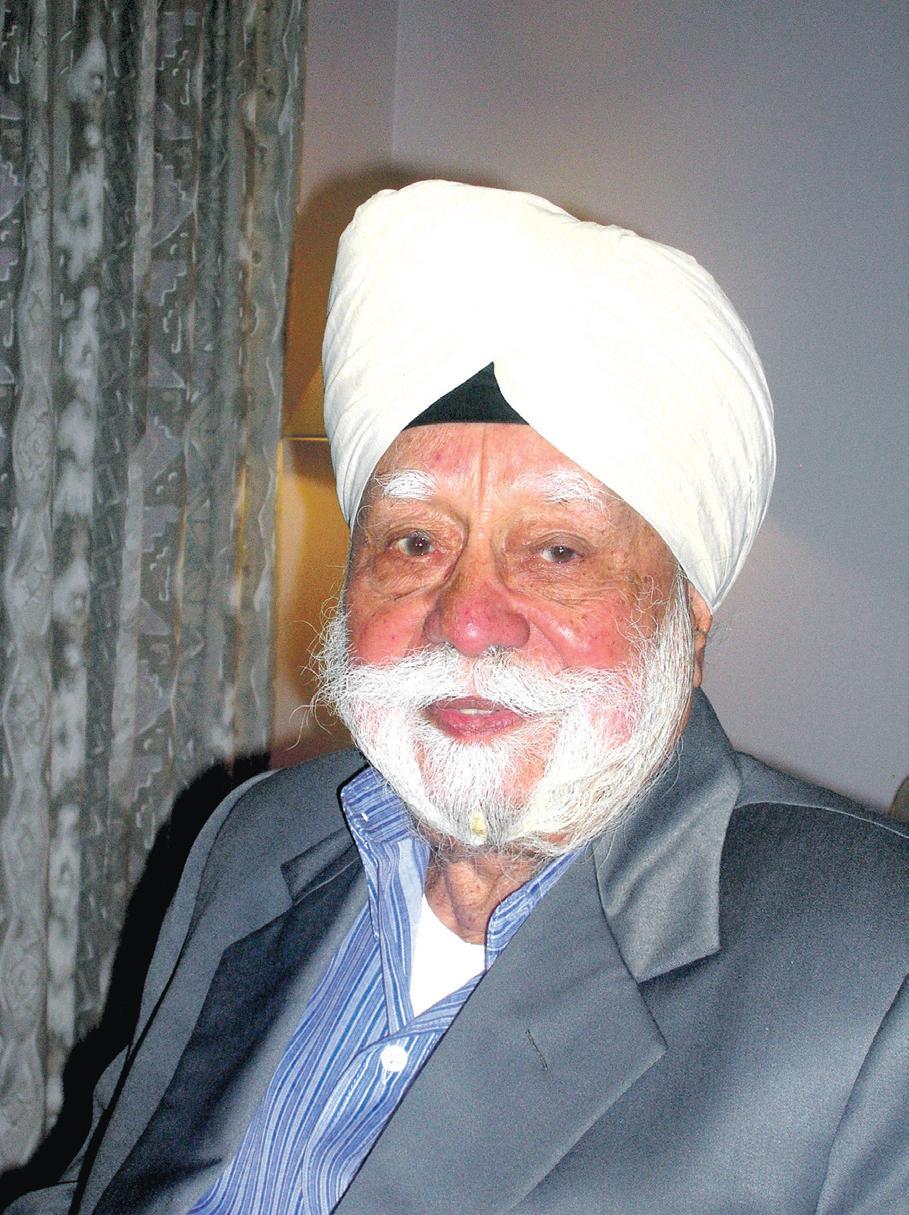


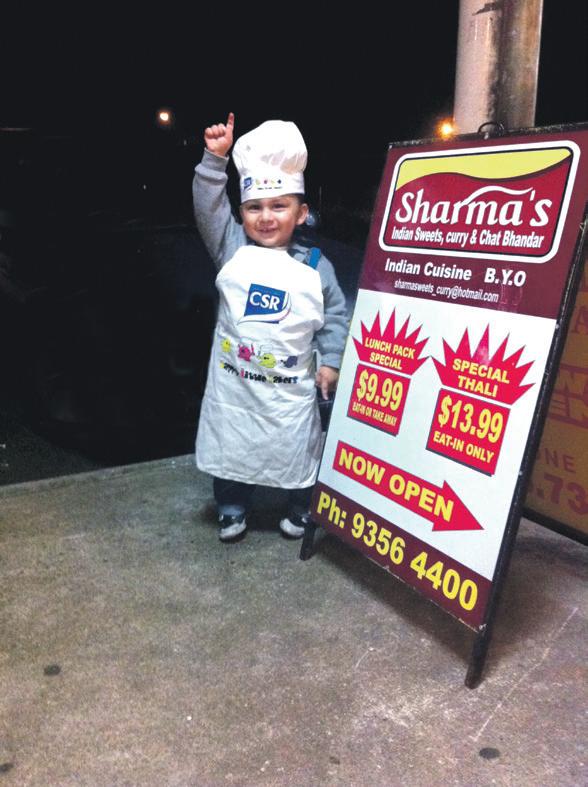
Saif’s book in Hindi titled, Jivan To Ek Safar Hai, was launched by the Indian Literary Society, and his book in Urdu is called Urdu Meri Zubaan Naheen
Saif, Fatima, their three daughters, their husbands and eight grandchildren are all lovers of Indian music and eagerly participate in it.
acid. Couscous contains a 1% fatto-calorie ratio, compared to 3% for white rice and 5% for pasta.
Salt and pepper to taste
For the white sauce
4 tbsp butter
the vegetable layer and decorate with the pineapple rings.
By MITAL PAREKH
Elite food circles consider it one of the healthiest grainbased products today, and it is an easy substitute for rice or pasta. Yes, couscous is here to stay, and its various options of grain lends it a versatility that adapts to many different recipes. Couscous has been around through centuries of Middle Eastern cooking, but my first acquaintance with it was on supermarket shelves where its resemblance to the more familiar sago or sabudana drew my attention. I finally summoned up the nerve to try and cook it after viewing various dishes being prepared using couscous on as many TV shows. And it was not just easy to cook, but also healthy and very tasty.
Couscous contains 3.6g of protein for every 100 calories equivalent to pasta and is well above the 2.6g for every 100 calories of white rice. Its vitamin profile contains twice as much
Of the many varieties of couscous available, I use Pearl couscous which is a small round variety made from wheat flour and semolina. Other popular types are Moroccan couscous (which looks just like semolina but the grains are slightly bigger in size), Israeli couscous (which has more medium sized grains which take longer to cook) and Lebanese couscous (which is the size of baby peas). Here are different recipes that bring out the best of couscous.
We’ve heard of potato gratin, so how about trying the healthier couscous version.
For the filling
4 cups couscous
4 cups water
1 medium eggplant, cut into circles
1 red capsicum cut into circles
1 green capsicum cut into circles
2 medium tomatoes cut into circles
1 medium zucchini cut into circles
2 tbsp plain flour
3 tbsp sugar
2-3 cups full cream milk
Salt and pepper to taste
For the topping
2 cups grated cheddar and mozarella cheese
1 cup breadcrumbs
Few pineapple rings
Boil the water with a tablespoon of oil. Stir in the couscous and turn off heat. Cover and leave for 10 minutes till the couscous absorbs all the water. Stir with a fork and keep aside.
To make the white sauce, heat the butter in a non-stick pan and add the flour. Cook till the flour turns golden brown. Take off the gas and add the milk slowly, stirring constantly to make sure there are no lumps. Add sugar, salt and pepper. Take a baking tray and spread the cooked couscous evenly across the base of the tray. Spread the white sauce evenly over it. Cover the top of the white sauce with the cut vegetables, spreading evenly over the surface. Keep aside. In a bowl, mix together the cheese and breadcrumbs. Spread evenly over
Bake in the oven at 160 degrees for 45 minutes or till the vegetables are cooked.
Simple and healthy, great for kids.
2 cups Moroccan couscous
2 cups water
2 cups cubed vegetables (potato, French beans, red capsicum, pumpkin)
1 ½ cup roasted ground peanuts
1 small tomato, cubed
Few curry leaves (optional)
2 cloves
1 stick cinnamon
½ tsp cumin seeds
½ tsp turmeric powder
½ tsp cumin-coriander powder
½ tsp chilli powder (optional)
Oil for cooking
Salt to taste
1 tsp butter
Yogurt for serving.
Boil water in a saucepan with 1-2 tablespoon of oil and 1 teaspoon of salt. Pour in the couscous
and stir. Allow to stand for 2-3 minutes. Add butter and cook again on low fire to separate the grains. Heat oil in a non-stick pan and add cloves and cinnamon. Next, add cumin seeds and curry leaves. Once they crackle, add all the vegetables and cook till tender. Then add the couscous with the spices and tomato. Cook on slow fire till all the ingredients are well mixed. Serve with delicious thick yogurt.
Another method of cooking this recipe is to use 2-3 cups of vegetable or chicken broth instead of water. For an interesting accompaniment, (see pic below) blend together 3-4 medium roasted tomatoes, 1 tsp lemon juice, 4 garlic cloves, ½ tsp chilli powder and salt to taste with 6-7 tbsp of olive oil. Mix this puree with the couscous, adding a handful of cooked green peas to the mix. Serve hot or cold, as you prefer.
Couscous Pudding
1½ cups couscous

3 cups milk
2-3 tbsp honey
½ tsp vanilla extract
4 tbsp chopped nuts of your
2 cups berry mix (frozen berries
2 tbsp brown sugar
½ tsp ground cinnamon

Pinch saffron, dissolves in a tbsp
½ cup thick cream for serving Nuts for serving.
Boil the milk, then add the couscous, nuts, honey, saffron and vanilla extract. Let the couscous absorb the milk for 20-30 minutes. Keep aside and let the mix cool down. Heat the berries and brown sugar together in a pan till they form a thick and saucy consistency. Place both bowls in the fridge to cool.
To serve, scoop some couscous mixture into dessert bowls and top with a dollop of cream, berry sauce, nuts and sprinkle with a pinch of cinnamon powder.
Tip: for a healthier option, use yogurt instead of cream.
This little-known food is gaining growing popularity for its easy of cooking, taste and as a healthier option than pasta or rice


We offer weekly intakes for all our courses!!!! IIPD strives in providing quality education with Experienced and friendly staff. Workplace assistance also provided. Reaching your potential is a dream come true!
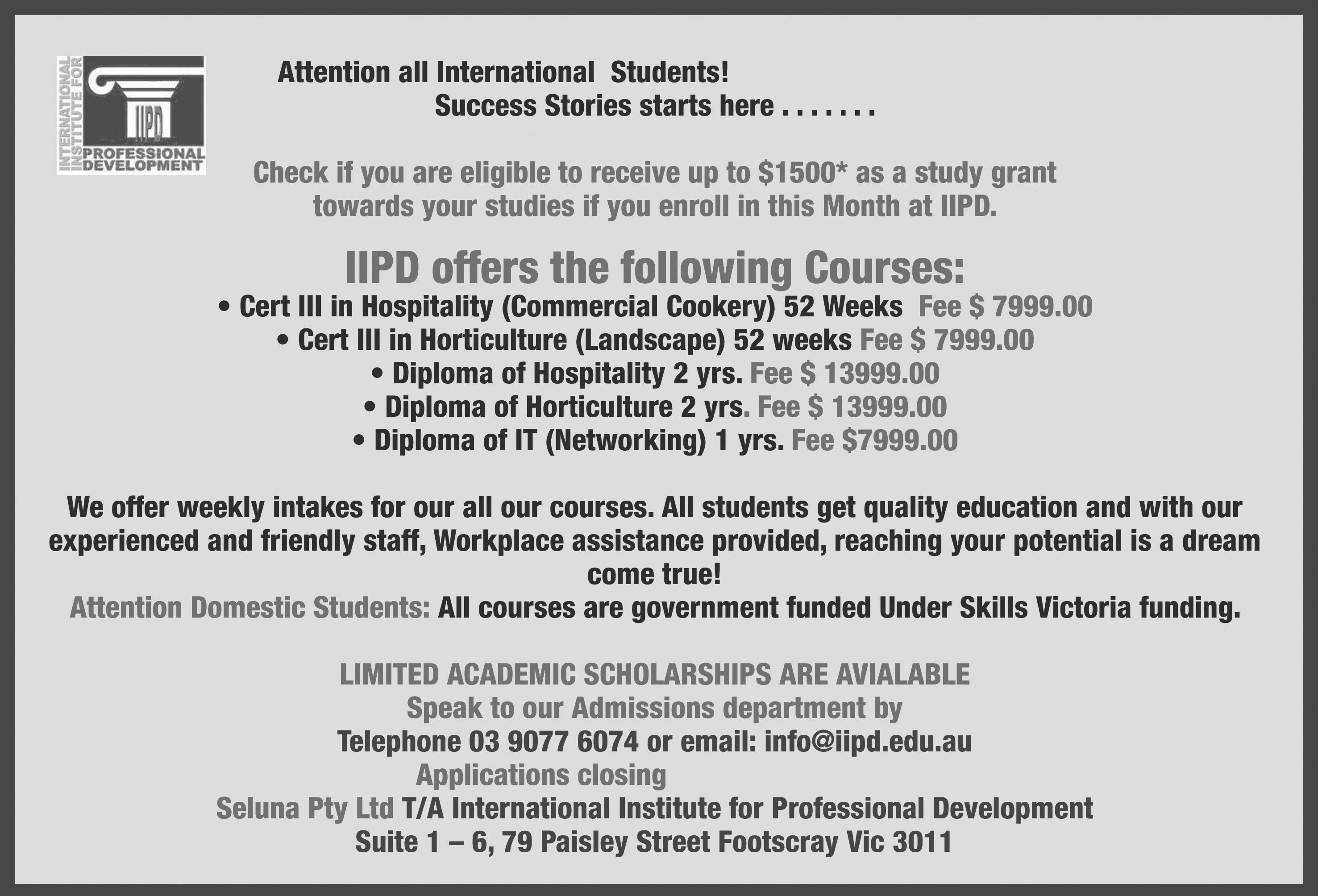
AUGUST madness is here soon


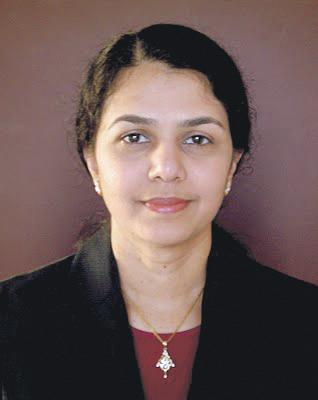



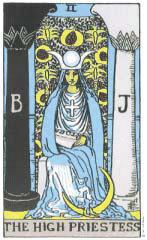
Your card of the month is the Five of Swords. Tarot predicts you will be a little short tempered: watch your sharp tongue, as you may upset others. There may be some miscommunication. You are unable to let go of some anger that has built up. Take care with your valuables as you may find that you are a bit scatterbrained and forgetful. There is also some news on the job front, possibly a change of department or location.
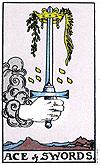
Your card this month is the Empress, representing the Goddess of Love. There will be some ideas of growth, creativity, luxury and nurturing. If you want to get pregnant, this is a fortunate month. Work and family pressures will be mounting, but you will get some good news around work. Promotion could be yours to have. You will feel fitter than normal, and watch your diet and food intake. Rest is essential this month: watch out for those late nights.
Your ruling card this month is the Page of Pentacles. This month you will find around you a person who will be very important to you, perhaps an admirer, which will be a happy surprise. You may find that this person is rather shy so you may have to make the first move: don’t hold back! Tarot also suggests a new job opportunity or a pay raise. Family issues may trouble you as an older member is not too well.


Your ruling card this month is the King of Pentacles. This is an influence of a dark haired man: your boss, father or possibly a lover. The month will bring you many opportunities such as a new business venture which you have been thinking about for some time. Keep your eyes open and stay focused as you may feel a little inclined to not want to do much. The rest of the month sees you feeling quite settled.
Your ruling car this month is the Two of Pentacles. Tarot suggests there is a strong need to learn how to balance your home/work life. You will find that you will be in great demand this month and you will feel quite stressed out and tired as a result. Be careful of flirtation this month as you will have more than one lover around you. Money may be a concern too this month. Learn to organise your finances better.
Your card this month is the King of Wands. There will be a strong, aggressive, demanding yet lovable lover in your life. If this person is not around you yet, they are entering your life. Watch out for charming people as you are easily taken in by words. Career is going well. You will have increased responsibility or be moved to a new department or office. There is a good chance of news of a baby around you or your family.





 By NANcy JADE ALTHEA www.nancysood.com
By NANcy JADE ALTHEA www.nancysood.com
Your ruling card is the Queen of Wands. You are feeling very energetic and motivated, and in the mood to be more sexy and giving towards your partner. Treat your lover well and you will be rewarded with joy and contentment in your relationship. You may look at moving to a new property or planning for the future. You see life differently now, and feel it is time to be more responsible and settled. Be careful of a troublesome ex.



Your ruling card this month is the Knight of Wands. You are feeling very enthusiastic, full of sexual energy and very aggressive where your work is concerned. You want to reach the top and are determined to get there. There is a strong chance you will receive a good job offer and change your job. There may be a whirlwind romance, but it will just be fun. Take care of your health, as you have been over-indulging of late.
Your ruling card this month is the Wheel of Fortune. You are full of questions about your future, as things seem to be very uncertain around you. There will be some struggles. Luck will be on your side. You have always managed to get sorted out in the past whenever you find yourself in any difficulties. Your mother or an older lady in your family may be going through some health issues, and tiredness. Tarot suggests trips to the hospital.
Your ruling card this month is Strength. There will be a huge amount of sexual energy around, and you will be most compatible with your lover. For singles, this is a great time to meet someone who you feel at ease with, and you will strike a very interesting balance with this person. An old flame may rekindle feelings and bring about changes. You may be feeing upset about the past. You are going to find out some shocking truths.
Your ruling card this month is the Chariot. You will be more in control of your life. People will try to tell you what to do, but they should not organise your life. You will be thinking of travelling, stop holding yourself back, just go with the flow and enjoy life. There is a lot in store for you so take your chances with life and let things flow. You have not had time for yourself for a while.
Your ruling card this month is the Three of Wands. You are ready for a relationship but you need to do things before allowing someone to come into your existence. Be patience and you will find someone special as they are waiting for you. You may think selling your home or buying a new one – it is a great time for property matters. There is an indication that a surprise is waiting, this could be at work or financially. Have fun.
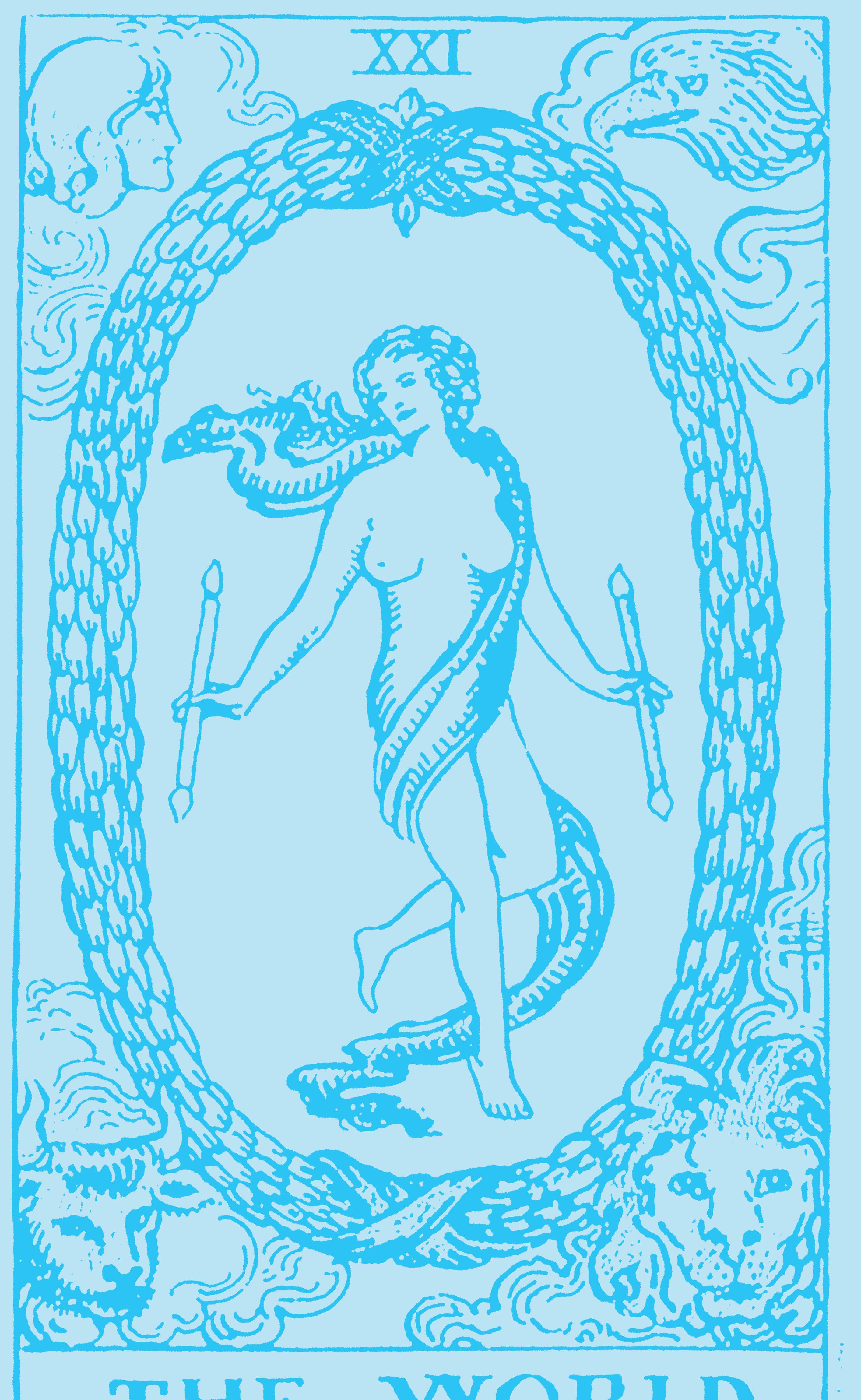

Nita has worked recently as a Consultant in Obstetrics and Gynaecology at Gippsland Healthcare Group. She has vast experience in Gynaecology and Obstetrics. She worked as obstetrician and Gynaecologist in various Hospital in QLD and Melbourne as well as at Overseas.
Nita gained her specialist Post Graduate degree in Obstetrics and Gynaecology in India and worked as a consultant in New Delhi for 4 yrs. After Moving to Australia she underwent further training to gain her FRANZCOG– Specialist Degree in Obstetrics and Gynaecology. She is fluent in Hindi, Punjabi and English.
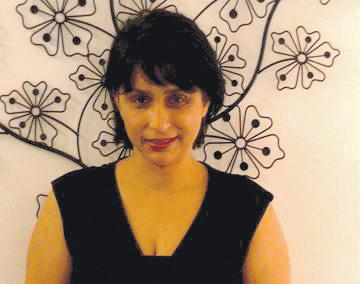
She has started private practice at Melbourne Eastern & South Eastern private Hospital apart from Casey Superclinic and have a operative and delivery at Warragul hospital with consulting session at both Berwick, Pakenham.
After moving to Australia she underwent further training to include FRANZCOG and gained her specialist degree in Obstetrics and Gynaecology in 2010. Nita has worked recently as a consultant at Warragul (W.G.Health) Hospital.
Nita has set up Private Practice in Dandenong with consulting sessions at both Pakenham & Warragul
• Pre-pregnancy assessment & counselling
• Antenatal, pregnancy management,
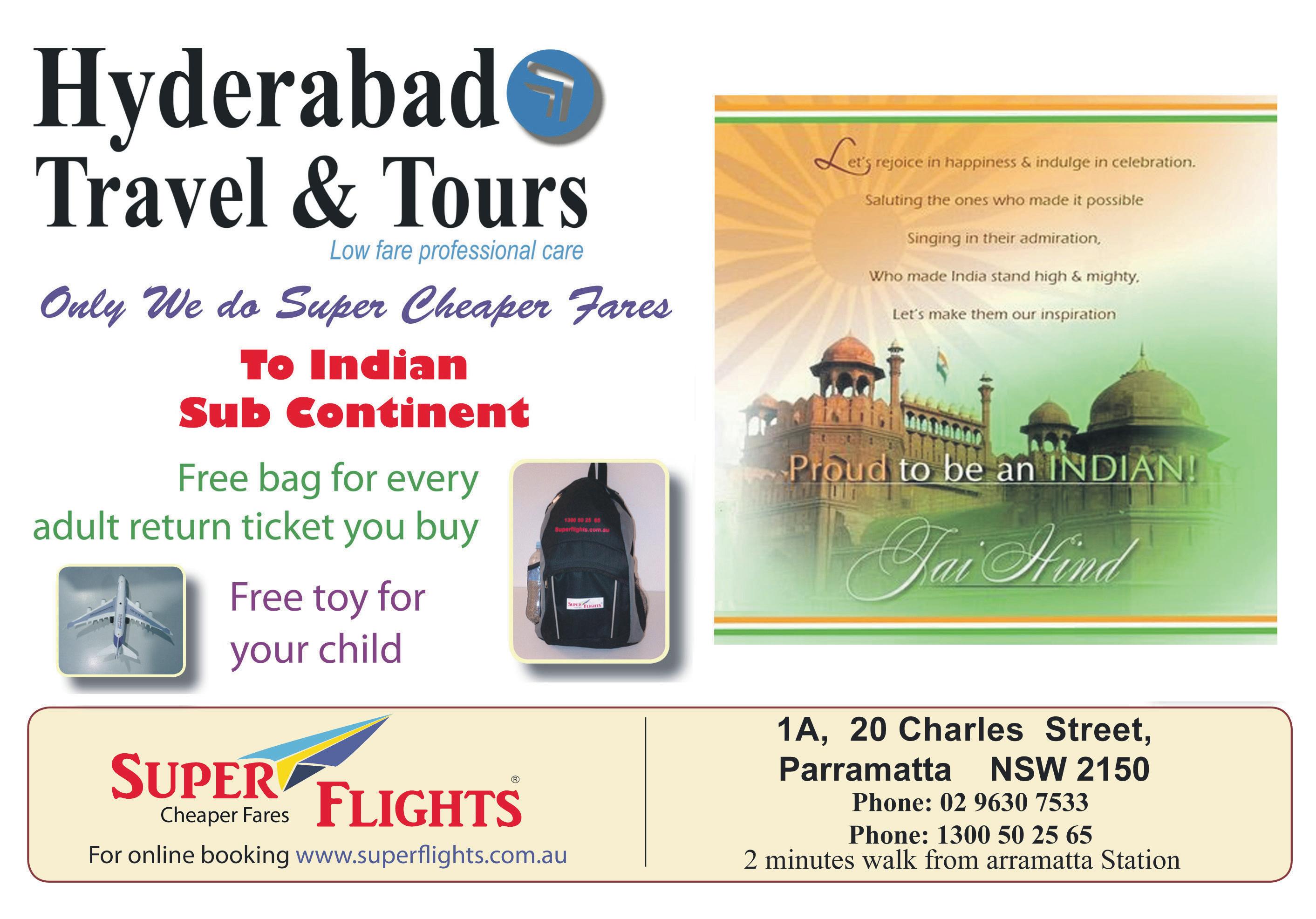

• Confinement & Complications
• Management of recurrent pregnancy loss
• Vaginal birth after previous Caesarean delivery (VBAC), RPL & High Risk
• Caesarean delivery
• Menopause; post-menopausal bleeding
• Vaginal prolapse & Fibroid
• Genital tract infections & CPP
• Abnormal Pap smear; colposcopy
• Pelvic pain & Endometriosis
• Infertility: Diagnosis & assisted treatment
• Family planning, permanent or reversible
• Contraception
ABHILASHA SENGUPTA
From garnering overwhelming TRPs to getting prominence on social networking websites, the impact of Aamir Khan’s Satyamev Jayate has been colossal. The talk show, which started with the issue of female foeticide, traversed over various burning social issues informing, educating, sensitising and touching audiences’ hearts. The last episode highlighted the right to equality, ending the show’s incredibly successful
So much has been said about Satyamev , but the fact remains that it could only take the power of Aamir Khan to bring forth unknown facts related to child sex abuse, medical malpractice, manual scavenging and dowry – hitherto issues that have always seemed safe swept
But what’s amazing about Aamir’s journey is that he followed up off-screen by meeting concerned leaders to ensure the problems are resolved.
The actor-filmmaker met Rajasthan Chief Minister Ashok Gehlot to request the creation of a fast track court to decide the cases of the doctors, none of who have been penalised in the female
Coincidently, the Protection of Children from Sexual Offences Bill 2011, that was earlier cleared by Rajya Sabha, got the nod from the lower house after the second episode of Satyamev Jayate
The grand finale highlighted the basic tenets of the constitution that promises equality for all; however, ironically the people in the country are still subjected to discriminations on the basis of caste and
“When India’s leaders envisaged building a new nation after independence, the Constitution was the foundation stone of this endeavour. We had resolved to establish a sovereign, secular, democratic republic with justice,
liberty, equality and fraternity for all. After 65 years of Independence, are we actually living up to those principles,” Aamir asked. The episode saluted the courage of the Sarvodaya Trust, which sheltered both Hindu and Muslim children after the 2001 devastating earthquake in Gujarat, as well as Sunitha Krishnan, a social worker who looks to rehabilitate prostitutes and rape victims through her anti-trafficking organisation Prajwala.
Sunitha, one of the rape victims, said that the irony is that “people want to make documentaries and movies on these girls, but no one wants to own them.”
The episode also appreciated the work of Naseema Hurzuk, a wheelchair bound lady who runs Helpers Of The Handicapped, an organisation that helps the disabled.
Despite the controversy that the show has raked up, Satyamev Jayate has been a winner across India and the diaspora, with its well-researched topics, sensitive case studies, pithy interviews and often heartwrenchingly poignant stories. Prior to the series, the actor had said that he wanted to replicate the phenomena created by epic teleseries of yore Mahabharata and Ramayana, and there’s no doubt that he has done so. Big brands have also supported the series, a first for a reality show that puts the spotlight on the invisible people in the country.
Kudos Aamir, for a sensational and sensitive series, and let’s hope there will be a second season.
OMG! Sonakshi and Prabhu an item!
Or to be accurate, Sonakshi Sinha and Prabhu Deva will be dancing together to Go Go Govinda for Akshay Kumar’s home production, Oh My God directed by Umesh Shukla. The pair are not a part of the film, but will only make a special appearance for the song, clarified Akshay.
“Sonakshi and Prabhu sir are not in Oh My God. They are doing a short cameo role in the film,” he said at the DVD launch of his previous film Rowdy Rathore recently.
There was also speculation about Sonakshi hurting herself during the shoot, but Sonakshi clarified that it was just a minor ‘neck sprain’ and she is fine now.
culture scene, apna Sallu will join the industry’s best in the section that is designed to create the experience of being on a Bollywood film. Salman’s waxwork will certainly feel at home in there, although the experience of having SRK for company may dampen his enthusiasm! Salman personally chose and donated the black top and denim jeans for his wax figure. You can bet Facebook will explode with photographs of star-struck fans posing with Salman. The unreal one.
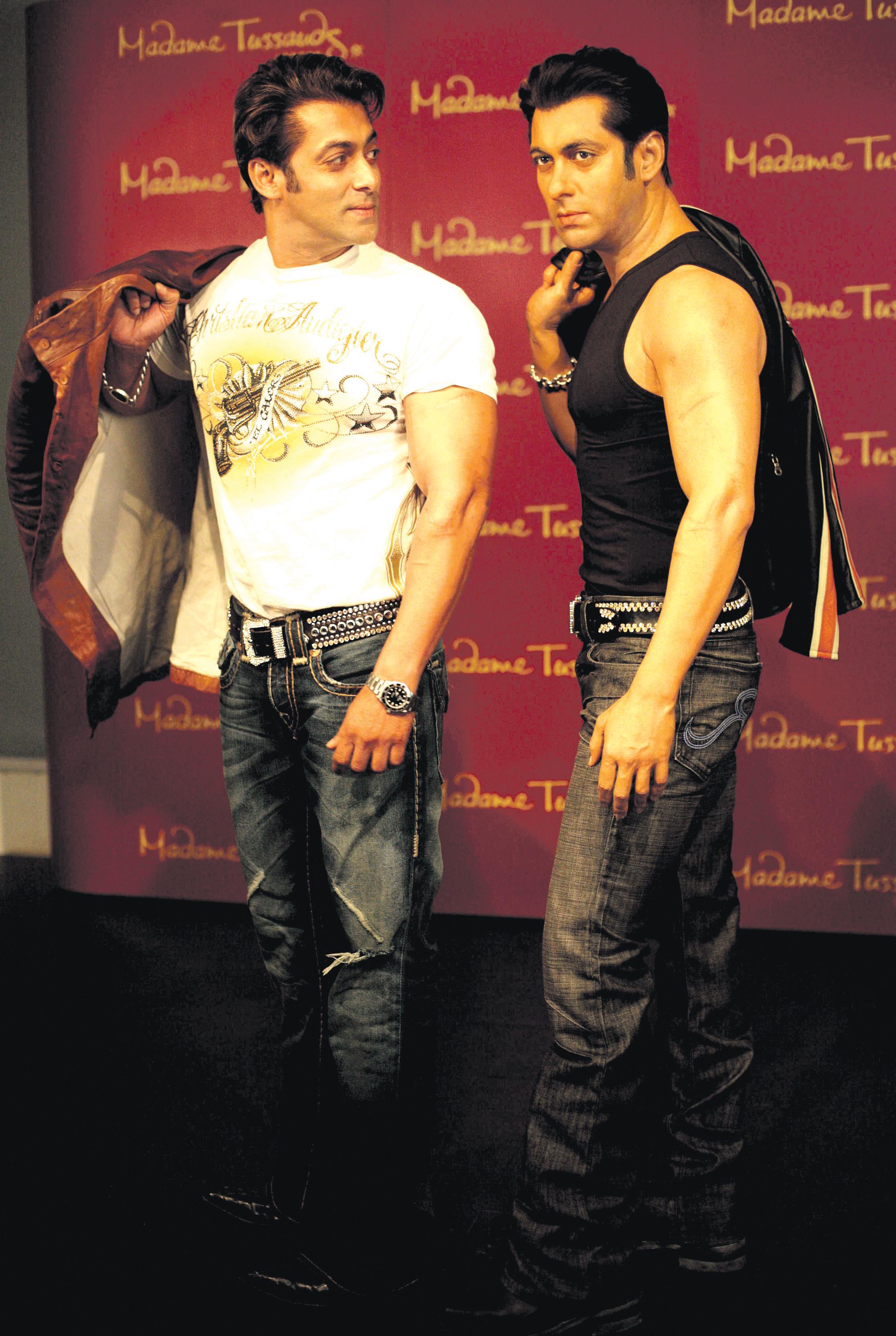
She’s got an MBA, has acted in offbeat Hindi films, even a Chinese film, is married to a construction baron in Mumbai, and owns one of the city’s leading restaurants

Rowdy Rathore smashed the box office by crossing the Rs.100 crore, and Akshay attributes its success to director Prabhu Deva for whom he has great regard. Of working with Prabhu he said, “He gets angry if someone does not give a good shot or doesn’t do his work properly. He is very shy otherwise and does not talk too much,” he said.
Looks like Akshay wants to keep a firm hold on jodis that work for him and the box office. And what could be more exciting that sensational Sonakshi and pirouetting Prabhu? Bet it’s a must-see!
Moving on to another Khan, a female this time, Bollywood is buzzing at the seemingly bizzare behaviour of choreographer-turned-director Farah Khan, who recently made her acting debut with Shirin Farhad Ki Toh Nikal Padi But she agreed to star in the movie only if its makers agreed to remove a kissing scene from the script.
The movie, directed by Bela Sehgal, narrates the story of two 40-plus lovers. The kissing scene would have involved the 47-year old Farah and actor Boman Irani. But neither was Farah comfortable, nor did she think it was important. And I suppose, she didn’t want any controversy from her seeking-thespotlight hubby Shirish Kunder, already famous for his bust-up with Shah Rukh Khan. The movie will release in late August.
But that’s not all – Farah is now going out of her way, literally, to promote her home production Joker, by trying to get Indian-American astronaut Sunita Williams to watch the movie which is based on aliens, while in space. According to Farah, whose husband Shirish Kunder has directed the Akshay Kumar and Sonakshi Sinha-starrer, the team is in talks with officials of NASA to see if it can be made possible for Williams to watch the film. Although whether she would want to watch it is anyone’s guess!
And finally, actress Chitrangada Singh, who has grooved to an item song in Joker reveals the filmmakers changed the lyrics of the song “I want fakht you” to “I want just you” to avoid any unwanted reactions. She says “Fakht” is actually a Marathi word, meaning “only” you.
“Everyone doesn’t understand it. They can interpret it in some other way also. So, to save that situation, they (filmmakers) decided to go with ‘Just you’ and it is just as much fun,” said the 36-year-old. Thank goodness, it’s difficult to imagine the extent of controversy that ‘F’ word would have created. Or perhaps that was the intention of the original version?
After all, anything associated with Shirish has the potential for high drama and controversy.
So let’s look forward to watching Chitrangana flaunt her stuff, and let’s hope the film won’t be a bad joke!
Mahesh Bhatt couldn’t be happier with the success of his daughter Pooja’s career, specially since the one-time and not-so-successful actress turned her talent to directing.
And now Pooja Bhatt says she is keen to revisit her father’s 1974 ‘radical’ and ‘shocking’ film, Manzilein Aur Bhi Hain

Needless to say, Mahesh Bhatt has welcomed his daughter’s decision.
“I would love to look at my father’s Manzilein Aur Bhi Hain. It was banned by the censor board at that time and he broke a table in frustration. I was very young and we didn’t have money. He walked back home from there (censor board office) to Shivaji Park. It was the dead end in his life,” Pooja said.
Forty years ago, a 20-something Mahesh Bhatt made Manzilein Aur Bhi Hain, starring Kabir Bedi, Gulshan Arora and Prema Narayan. After several censorship hiccups the film finally hit the
screens, but neither the critics nor the public appreciated it. But Indian cinema has now been revolutionised by movies like The Dirty Picture and Delhi Belly. Bhatt’s film was ahead of its time, but the concept could be revived by Bhatt junior.
Pooja is perked about the release of her adult film Jism 2, which she says, will be a game changer for her, just as the 1982 Arth was for her father Mahesh Bhatt.
She has directed four films - Paap, Holiday, Dhokha and Kajraare, but none made any impact at the fickle box office. But with the erotic thriller Jism 2, Pooja is hoping for success, fame and acclaim.
“It’s a coincidence that even I am at the same stage (as my father). Even he had made around four movies (before Arth) and none of them did well. He was at a point in his career where nothing was
Pooja also finds a common thread Jism 2
“The specialty of Arth is that a lady makes a choice not to be with her husband and neither with her , Isna, who is a porn star, makes a conscious choice for her life too. The choices they make are the similarity, and in is contemporary with a world view,” explained Pooja. Indo-Canadian porn star Sunny Leone plays the lead in the film, which has, ironically, received an ‘A’ rating from the Central Board of Film Certification (CBFC).
Pooja admits that her film has an adult theme, and doesn’t mind it being aired on the post 11pm slot.

“I have made an adult film; you can’t really sell alcohol on a children’s channel! So if one is making a film with the adult title, how can I water down and release it in prime time in the afternoon?” she asked.
“I am very clear I want the 11 pm slot or I am open with the home video market. I have to look at new ways to look at the market for my product,” added the director, who was smart enough to release promotional videos of only those songs on TV that had no sexual content.
The rest were marketed online, “a more than worthy competitor of TV”, according also features Randeep Hooda and Arunoday Singh alongside Sunny. Let’s see if Pooja makes the grade, and firmly steps into her father’s shoes.
While we wrap ourselves in the glitz, glamour and bling of Bollywood, some lesser-known Indian productions have been winning on the international film circuit. Like the documentary Big in made by Indian-American actor Omi Vaidya, which was declared the best foreign film at the recently concluded Las Vegas Film Festival. The documentary chronicles Omi’s struggling days as an actor in Los Angeles and how he lands a dream role in blockbuster 3 Idiots
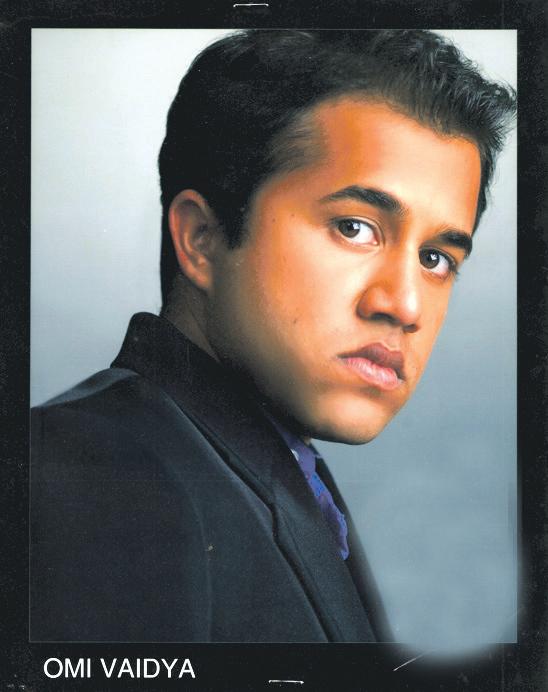

And now filmmakers Prashant Nair and Sujay S. Dahake have won the Directors Vision Award at the 9th edition of Indian Film festival of Stuttgart, Germany for their films
What’s salman saying that’s making Katrina laugh here?
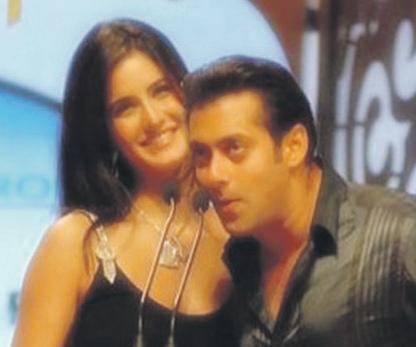
Salman: I’m reconnecting with all my ex-girlfriends: Katrina, Sangeeta…. you listening, Aishwarya? Katrina: yeah right, dream on, boofhead! Gurnam singh Altona north, VIC
Delhi In A Day and Shala respectively.
The Director’s Vision Award is given to a film that looks at life with an incisive perspective.
While Shala is a story of school children coming of age in a repressive small-town society, Delhi In A Day is about capital’s urban rich and their servants seen through the eyes of an NRI.
“The entire team is delighted to have received this award as an endorsement of the message and theme of the movie. It was really wonderful to see the film resonate with German audiences in such a positive way. The Indian Film Festival of Stuttgart had a wonderful selection of films, watched by extremely enthusiastic audiences and we’re proud to have been a part of it,” said Nair in a statement.
Let’s hope Bollywood wakes up and takes notice of the wealth of untapped talent out there on its doorstep. Literally!
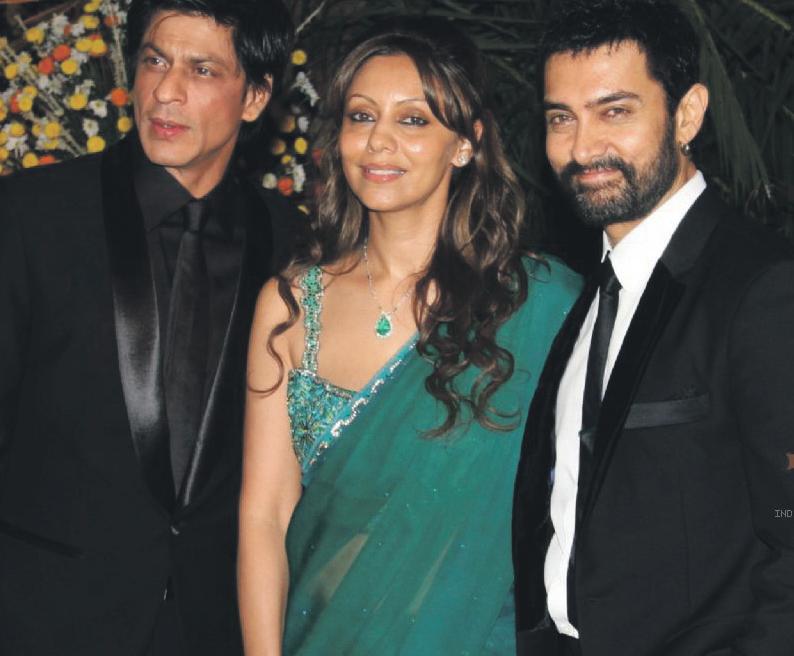 Perizaad Zorabian
Perizaad Zorabian
Films with children as the main characters are no longer a rarity. Thank god for that! It’s imperative that our cinema cultivate a culture of entertainment that children can empathize with without the content becoming overpowering in its messagemongering motivations.
Gattu is a delicately-threaded morality tale about a poor little boy, never sorry for himself except when play-acting the role of the bereft waif to get his way, who is taken in by his uncle (Naresh Kumar, brilliantly in character).
Now here’s where the subtle often slyly humorous film gets tangled. It tells us that contrary to stereotypical expectations the uncle is no slave-driving villain. He has his good and bad moments with the kid.
Gattu tells us there are no black and white zones to bring up underprivileged children. While child labour is prohibited, it can also be a way of providing sustenance for homeless kids. While Gattu longs for a school education, he uses the academic premise to hoodwink
the students and teachers to implement his own devious plans.
While on the surface Gattu is a breezy blithe and effervescent look-see at the pangs and pinpricks of growing-up at the grassroots, under the surface it ponders sensibly on the question of raising a poor child with dignity outside the rarefied precincts of a school.

All the kids, specially Mohammad Samad in the title role, are delightful in their natural ability to own the camera space.
Director Rajan Khosa enters the world of innocence with devious intent. He penetrates the surface of juvenile guilelessness to explore the cunning that often underlines the machinations of the the very young.
Gattu portrays heart-warming moments within and outside the school premise. While making a fervent pitch for every child to attend school, the narrative never misses out on a chance for a bit of fun on the fringes.
Gattu is an endearing peep
into a child’s life as he struggles with intuitive intelligence to bring together the two incompatible worlds of poverty and the solace of schooling.
Mohammad Samad as the boy who would fly higher than a kite is a prized find.
Sandesh Shandilya’s ebullient songs and music brings its own spot of sunshine in this not-to-
can’t. Now, get a load of this. Sid (Riteish Deshmukh) is a struggling musician. Adi (Tusshar Kapoor) is a struggling actor. And they’re part of a sex comedy struggling to be funny in every single line that these two chaddi buddies utter to one another and to the world at large.
sach mein, boss. Kya superkool film hai
There are these two jobless, aimless, witless guys one of who can’t act to save his life, and the other one who can act but has to pretend he can’t to keep pace with the one who
So the real hero of this masterpiece of murky mirth is the dialogue writer. He uses every possible occasion in the dialogue draft to slip in sexual puns. Not a single human orifice is spared in the furious fusillade of double innuendos. In that sense, this is a very democratic comedy. It insults every one and everything from dogs to humans, from gays to gurus.... And why shouldn’t it? This is
after all the official sequel to a 2005 comedy that defied every rule of good taste.
Kyaa Super Kool Hain Hum multiplies the filth manifold. The packaging and presentation are this time updated. The glamour quotient is enhanced with the presence of two engaging eye-candies Neha Sharma and Sarah Jane Dias who join in the vulgarity with a gusto that suggests a deep bond between risque humour and sex appeal. So is risque sexy? Is raunchy cool? You decide. As far as I am concerned I am still too numbed by the ceaseless torrent of verbal obscenity to figure out if a barrage of dirty puns and phallic objects being stuck into every conceivable hole, strung together in a succession of gags and episodes, can be called a film.

Delhi Belly, here they come?
of age.
Gattu carries forward the recent trend of sensible, intelligent funny and moving films about child protagonists, namely Taare Zameen Par, I Am Kalam and Stanley Ka Dabba Add one more film to that luminous list of cinema on little wonders.
subhash K. JhaThere are some good comic actors here, giving really bad performances. The gay jokes are stretched to limits beyond offensiveness that climaxes with the two ladies dressed as Chandramukhi and Paro singing Dildo la dildo la That pun on the original song Dil dola from Sanjay Leela Bhansali’s Devdas was sms-ed ad nauseam when the film was released in 2002.
Most of the pssst-pssst jokes in this farce-fest come across laboured and tired. Deshmukh, a comic actor of impeccable aptitudes, does his best to breathe life into gags and situations that elevate puerility to an art form. He succeeds in making us titter when we aren’t busy squirming over the onslaught of obscenity.
The rest of the cast takes the cult of crassness to hammy heights. Anupam Kher, for example, plays a millionaire in Goa who believes his dead mom has been reincarnated as
a canine. And when he catches his alleged ‘mom’ doing what doggies do when they are in a film of this sort, he assumes his mother is now getting on her four legs what his father never gave on two legs.
If you think the above situation is funny, then go ahead. Go for the film and laugh your head off at the frenzy of phallic jokes.
subhash K. JhaFILM: Kyaa Super Kool
Hain Hum
CAST: Riteish
Deshmukh, Tusshar
Kapoor DIRECTOR: Sachin yardi
RATING: No stars
rom the dizzying heights of fame to quiet shadows behind the arclights, Rajesh Khanna’s life had a theatrical sweep, almost like one of his films. Bollywood’s original superstar - simply the phenomenon to some - died in Mumbai on July 18, leaving behind memories cast in celluloid of that famous crooked smile and head tilt. He was only 69.
In an era long before this age of instant connect of mobile phones and internet, Rajesh Khanna was the man who sparked a frenzy never seen before and never since, not even by the likes of Amitabh Bachchan.
His very name spelt magic in the 1970s. He sparked hysteria, particularly amongst his legions of women fans, who would line the road for a glimpse, chant his name, cover his car with lipstick marks and even write him letters in blood. They got married to his photograph, cut their finger, let the blood flow and applied sindoor
Truly, O mere dil ke chain!
Kaka, as he was popularly known, was one of the highest paid actors of his time, his record of consecutive solo super hits still unbroken. Who can forget the years between 1970-1979 when he starred in mega hits like Safar, Kati Patang, Sachaa Jhutha, Aan Milo Sajna, Anand, Amar Prem and Mere Jeevan Saathi. Ever the urbane, suave romantic who wooed like few others.
Rajesh started his career with the 1966 film Akhari Khat. Glory and fame galore came his way with the two 1969 films - Aradhana and Do Raaste - where he teamed up with two of his best co-stars, Sharmila Tagore and Mumtaz, respectively. Both the films were super hits. Hindi film’s first superstar was born.
Between Aradhana in 1969 and Prem Kahani in 1975, Rajesh enjoyed god-like status.
It was all about charisma - a certain something that went beyond the art of acting. He had that unique way of delivering a dialogue, of crinkling his eyes and that interesting head tilt that were all his own - and designed to get fans swooning.
Describing the charm of Rajesh Khanna, Amitabh once said: “I got famous purely because I was working with Rajesh Khanna in Anand. People asked me questions like, ‘How is he to look at? What does he do?’”
The mega story had a small beginning in Amritsar. Born Jatin Khanna on Dec 29, 1942, he was adopted and raised by foster parents.
He went from being Jatin to Rajesh, thanks to his uncle who changed his name, when he decided to join films.
In 1965, the journey to filmdom started after he won the All India Talent Contest organised by United Producers and Filmfare He made his debut with Aakhri Khat in 1966.
It was a fairly easy road to superstardom after that. He became the heartthrob of the nation, singing timeless melodies like Mere Sapnon Ki Rani... in Aradhana, Zindagi Ek Safar in Andaaz or Yeh Shaam Mastani in Kati Patang. Singer Kishore Kumar and composer R.D. Burman were amongst his closest friends.
In his four-decade career, he appeared in about 160 films, of which 106 had him as the solo lead hero and 22 were two hero projects.
Rajesh proved his mettle in offbeat films too. He teamed up with Hrishikesh Mukherjee for the critically acclaimed Bawarchi and Namak Haram. The quintessential romantic also did the intense Avishkar, directed by Basu Bhattacharya. But then age caught up and the star began fading away.
He moved to television and played the main lead in two serials - Ittefaque and Apne Paraye during 2001-02 and also featured in Raghukul Reet Sada Chali Aayi between 2008-09.
The decline to B-grade films was inevitable. There was also the sorry Wafa with Laila Khan, who was found murdered this July.
He dabbled in politics, being Congress MP from the New Delhi constituency from 1991-1996.
At his funeral at the Vile Parle crematorium on July 19, it was Khanna’s nineyear-old grandson Aarav that put the pyre to torch, as family, friends and fans watched. He was gently guided by his actor-father Akshay Kumar who is married to Rajesh Khanna’s elder daughter Twinkle.
An eyewitness reported that Amitabh Bachchan hugged and consoled an emotional Dimple Kapadia and her second daughter Rinke at the funeral. Kaka’s ex-girlfriend Anju Mahendru was also present and was seen crying.
Daughter Twinkle was missing from the funeral procession as she is in the family way. Keeping the security issues in consideration, the police officials suggested the late superstar’s family members not allow too many people inside the crematorium, as a result not even media were allowed in.
The legend’s final journey started around 10 a.m. from his home Aashirwad. His body, in a glass casket, was placed on a mini-truck decorated with white flowers. The procession went through Carter Road, Turner Road and S.V. Road before reaching the Vile Parle crematorium. The original plan was to have a longer procession, but due to rain it was cut short.

Despite rain, thousands, including the superstar’s friends, film fraternity members and fans gathered to say a tearful goodbye to Rajesh Khanna.
The frenzy was perhaps just what the Bollywood’s first superstar had been missing in his last years. It was a farewell that the superstar deserved. Among the Bollywood bigwigs who attended his last rites were Sudhir Mishra, Rani Mukerji, Karan Johar, Sajid Khan, Abhishek Bachchan, Vinod Khanna and Aadesh Shrivastava.
Khanna’s last words before his demise, according to megastar Amitabh Bachchan, were “Time to pack up” in true Bollywood style.
Like the Hollywood legends of yore, the personal life also had a larger than life dimension.
He fell in love with Dimple Kapadia, who was only 16 and whose first film Bobby was yet to release. She was 15 years younger to him but the pull was strong and they got married after a whirlwind romance in 1973.
It was the stuff of tabloid headlines. They had two daughters Twinkle and Rinke. The marriage lasted only 11 years.
It was a lonely life for Rajesh after that. He disappeared from
the headlines and appeared to be a shadow of his former self in his rare public appearances.
But the family came together in his last days. His estranged wife was the one who took care of him during his illness. Sonin-law Akshay Kumar was also a great comfort. When news of his critical health first came out on June 20, legion of his fans expressed concern. A day later, he stepped out in the company of Akshay Kumar and estranged wife Dimple Kapadia to tell his fans that all is well.
But clearly it wasn’t.
He was a shadow of himself, gaunt and ravaged by illness, with glares covering the famous face that would once reduce women to a swoon.
On June 23, Kaka - as he was popularly known in the film world - was in the hospital, and the stay stretched for 15 days. Just a week after he was discharged, he was back to the hospital bed due to “weakness”, but was allowed to go home soon after.
Though family members maintained he was “fine”, Rajesh was said to be critical and breathed his last at his Bandra home Aashirwad.
Film celebrities like Amitabh Bachchan, Shah Rukh Khan, Salman Khan, Abhishek Bachchan, Shabana Azmi, Sajid Khan, Farah Khan and Prem Chopra came to his residence to pay their respects after news of his demise spread.
Prime Minister Manmohan Singh, West Bengal Chief Minister Mamata Banerjee and Information and Broadcasting Minister Ambika Soni were amongst the political leaders who condoled the death of the star.
His last screen appearance was an ad for Havells fans, with which he once again became the talk of town. But it was an eerie intimation of what was to come. In it, Kaka reminisced in an empty auditorium with music from his films echoing in the background. He was clearly unwell but the zest in his voice was intact.
“Babumoshai,” he intoned deeplythe affectionate Bengali address he made all his own after Anand Like Anand from the film, the man is gone. But the memories will live on.
IAns
Motorcyclists are claiming that the right to be macho is part of the human rights of every male. A fight started when US authorities recently banned a gathering at which bikers lock their brakes and rev their engines to see how big a cloud of dust and smoke they can generate. Angry bikers took out a lawsuit saying that men’s right to “express their manliness” was “protected by the First Amendment”.

What a wonderfully broad excuse for doing stupid, pointless things. I plan to use it frequently. “I’m sorry I ate your dinner/ seduced your wife/ falsified the interbank lending rate. I was merely exercising my right to express my manliness.”
I was forwarded the story above by a reader who did not wish his name to be printed as he had been ‘chicked’ (which means beaten by a female at a sport). “Everywhere, the male sex is in crisis,” he said. He’s right. “Maschismo On Wane” cried a Wall St Journal headline not long ago. In India, sales of motorbikes (male vehicles) are way down, while scooters (female vehicles) are soaring.
In a global outbreak of violence, evil criminals are assaulting innocent civilians with deadly weapons such as French fries, in some cases, unsalted. In recent times alone, there have been at least 10 cases of food-assisted robberies, according to cuttings sent to me by readers. In the US, a man “attacked and robbed a Brockton man using stolen sausage links”, according to the press in that country. In Croatia, a footballer was attacked with a banana, and in the UK a man was arrested for throwing lasagna.
Police are taking this seriously. A man who threw a packet of McDonald’s French fries at his stepdaughter was arrested for “felony assault with a dangerous weapon”, according to a June 26 police report in the US state of Massachusetts. James Hackett was “charged with assault and battery with a dangerous weapon, to wit, a French fry”, police said.

I was reminded of the time reader Stephen Birkett told me his mango was confiscated as he boarded a domestic flight in India. Why? “For security reasons,” staff told him.
What happened to good old guns and knives?
The best theory I heard was from my mentor/bartender, who said the United Nations worldwide gun control crackdown was accelerating in the run-up to the global summit on the subject being held this month.
“Since guns are harder to get hold of, people are going for whatever is at hand, including French fries, sausages, etc,” he said. But can you really hurt someone with a French fry? He thought for a moment. “Sure. French fries kill. But you don’t need to hit people with them. Just feed them to them at regular intervals.”
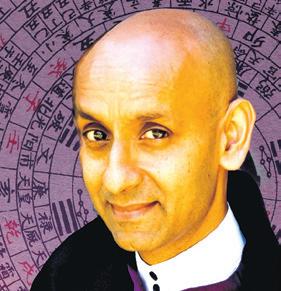
Every few weeks, one needs to step aside from the chaotic hurly burly of modern life, quieten one’s heart, and focus on deep matters of the spirit or, as we scientific types like to say, “evil wacko cults”.
As everyone knows, brave Katie Holmes rescued her innocent little girl from Tom Cruise’s weirdo cult and retreated back to the modelling community, a nice, safe world where women with severe eating disorders earn fortunes by striding down catwalks with pineapples on their heads. Wait. Mr Cruise’s weird cult sounds way more sane!

A reader whom I shall not name tells me he was tempted to join Scientology after seeing Mr Cruise walk up the outside of the Burj Dubai skyscraper in the recent Mission Impossible movie. I informed him that if he actually believes what he sees in the movies, he’ll be a very happy Scientologist.
But I also urged him to consider Asia’s equivalent to Scientology, a religion called Happy Science, which sends me press releases. Happy Science promotes itself by making astonishingly bad movies, and is about to launch two new ones this season. Final Judgement is an action movie in which
China invades Japan, but rescue comes when a New Saviour is born. The second is a feature-length anime cartoon in which Japan is attacked but salvation comes when a New Saviour is born. If you asked these guys to make a TV ad for soap powder, it would say: “Buy this soap powder! And by the way, let’s watch together as a New Saviour is born!” Happy Science started in 1986 when banker Ryuho Okawa (the new saviour) told the people of Japan that he was the reincarnation of the Buddha, and his wife the reincarnation of Aphrodite. Did people just laugh and tell them to lay off the sake for a while? Of course they didn’t. This is Asia. Thousands of people signed up from across the region.
The cult went through a bad patch last year when the Buddha and Aphrodite had a big fight and got divorced. But Mr Okawa seems to have got his groove back, according to his latest press releases.
The Happy Science founder is currently wowing people by revealing the addresses of celebrities after they have died. “Currently Beethoven lives in the lower area of the Bodhisattva Realm of the 7th dimension in the Spirit world,” he says. Charles Darwin is in ‘Abysmal Hell’, which is pretty bad, but not quite as bad as ‘Deepest Hell’, the present address of Frederick Nietzsche.
At first, I wondered why a philosopher should be in the bottom part of hell. But then I remembered what Nietzsche once said: “God is dead.” Mr Okawa took that as a personal insult.
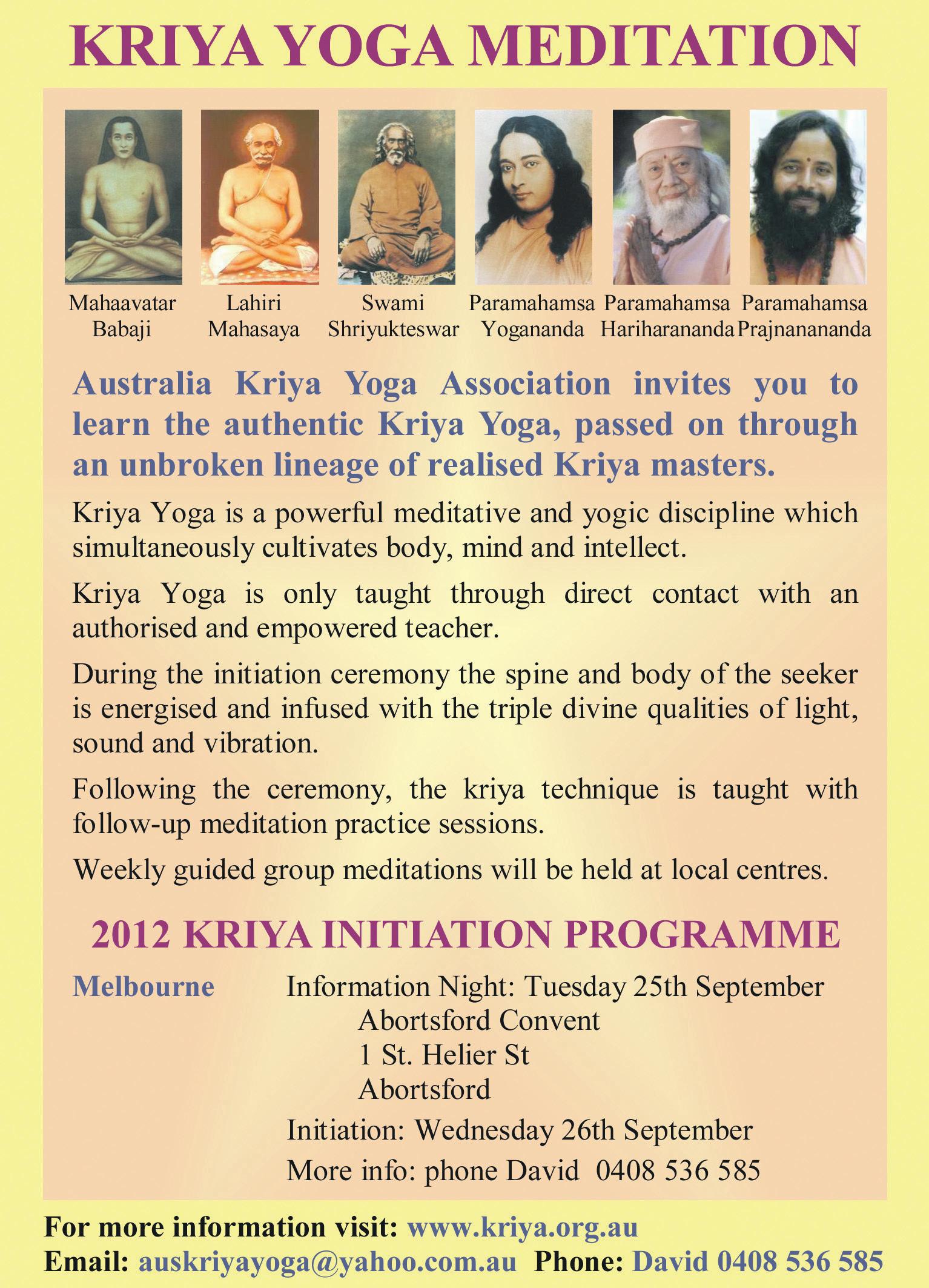


Come along to “Aussom Family Day Care ”

Aussom Family Day Care opened its doors in Jan 2008 and has offices in both Melbourne and Sydney, to provide quality early childhood education and care to children.
• We offer flexible contracts to genuine people interested in caring for and educating children aged between infants to 12years old in their own home,
• We would love to engage a diverse range of educators from many different cultures,
• A commitment to enrol into Certificate 3 in Children’s Services and other criteria apply,

• We have a team of dedicated professionals waiting to help you kick start your career in Family Day Care.
• We offer comprehensive support and guidanceall you need to do is pick up the phone and make an appointment.


